Last Updated on November 15, 2023 by
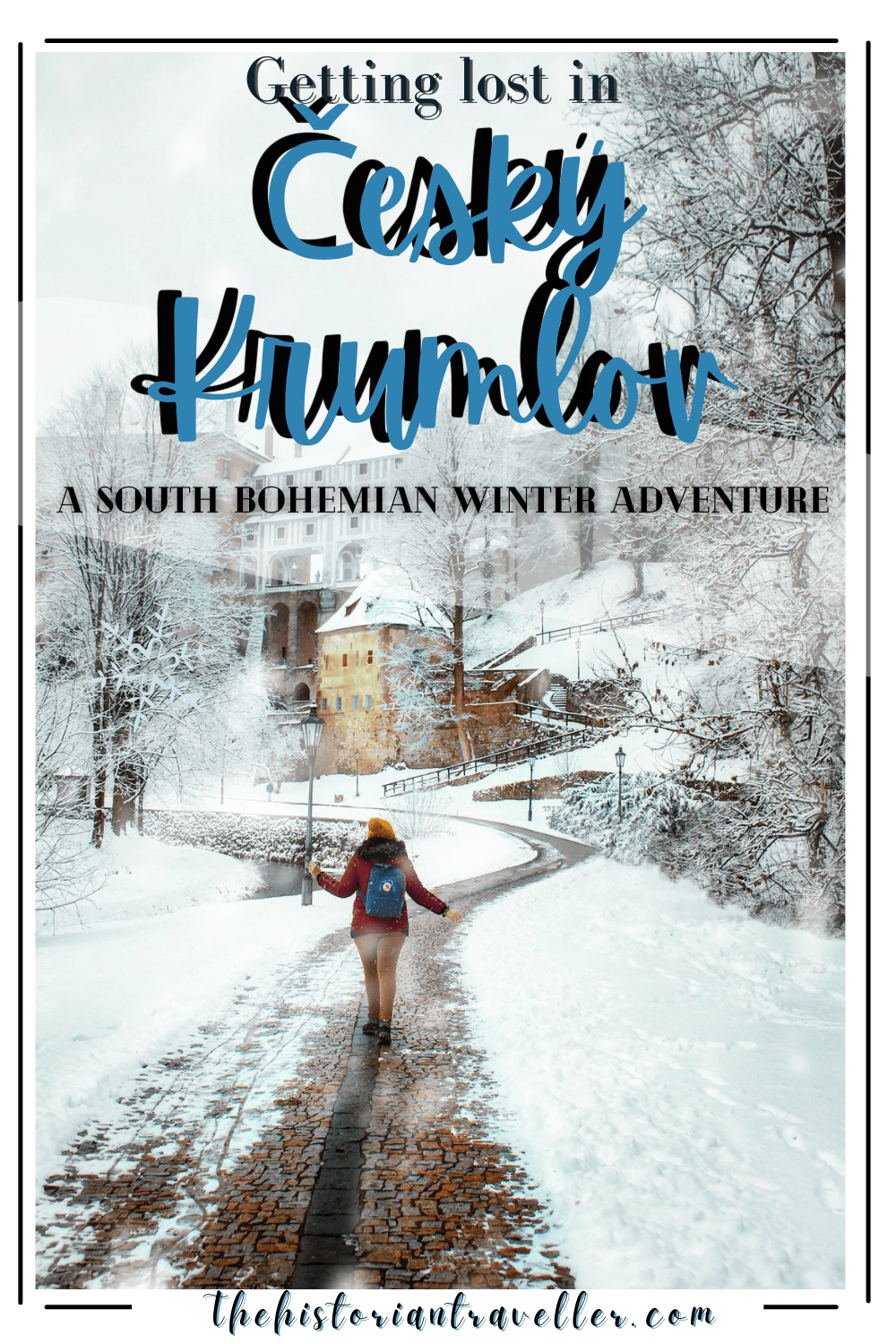
There are places that live of their intrinsic beauty. A charm brought by centuries of history, lives and events that shaped their architectural and visual perception. Český Krumlov is one of those places. Two days getting lost on its narrow cobblestone streets to immediately feel that this little town in South Bohemia is much more than the usual “fairytale location” loved by media. I feel history, tradition, sound of untold stories and sweet smell of gingerbread. In this blog, I will guide you around this beautiful hidden gem of Czech Republic. You will discover all the best Český Krumlov winter activities, history and traditions.
Table of Contents
Český Krumlov a place for history lovers
Český Krumlov’s history is visible from every angle of its lovely cobbled streets. From the signs, silently indicating the names of the houses, to the visible landmarks that are appreciable even from the farthest point in the town. Visiting Český Krumlov without knowing its history means missing out a big part in the understanding of your surroundings. Therefore, read below to know more about the history of this lovely town!
The Crooked Meadow
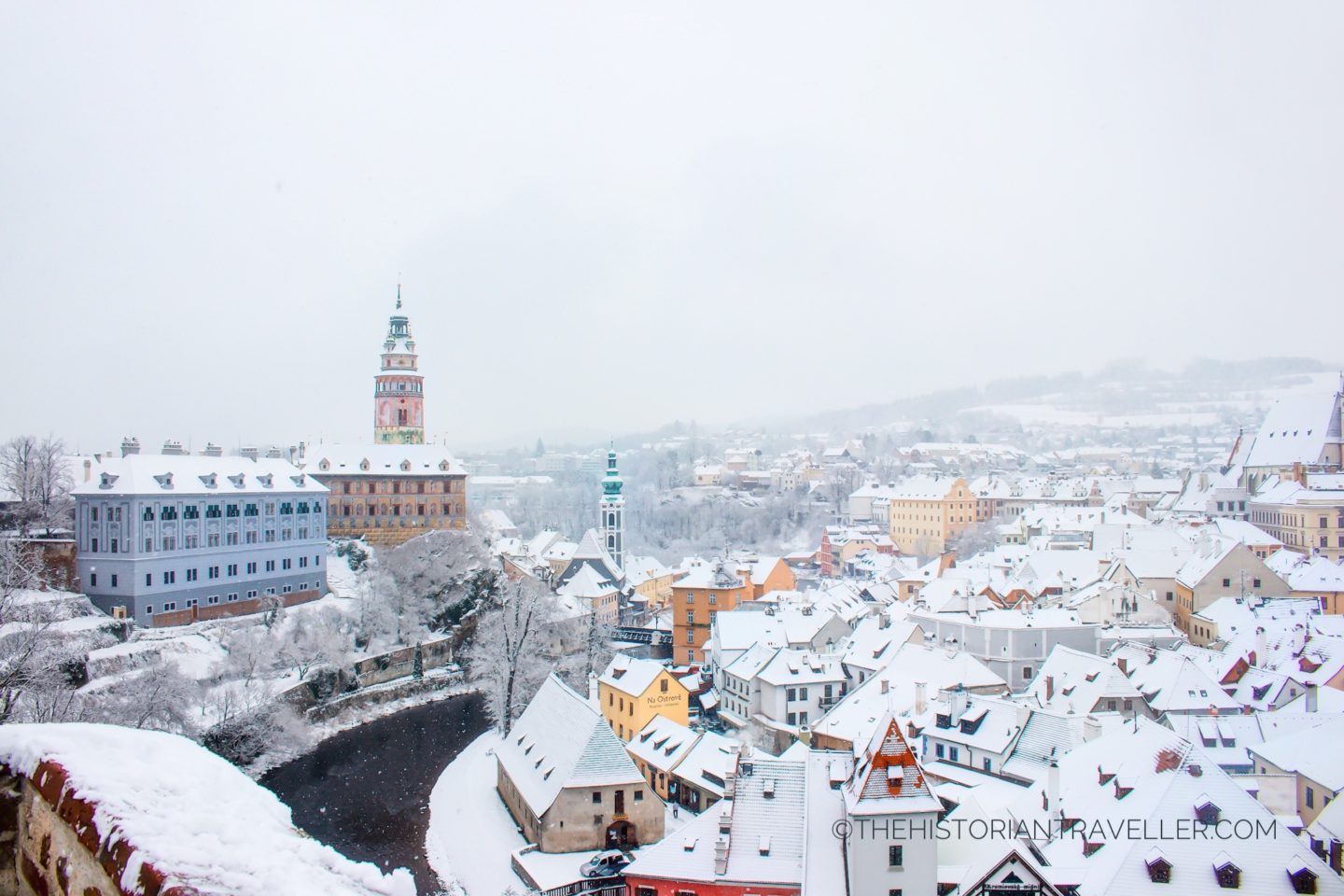
If you go up to the Castle and look the town from above, you will see Český Krumlov’s unusual and beautiful geography. Indeed, the peculiar bend of the Vltava river was probably the main reason behind the town’s curious name. Ancient maps often reported it as Crumlovium. However, according to the legend, the name of the town comes from the medieval High German “Krumme Aue” that means “Crooked Meadow”.
The convenient location of Krumme Aue near the Vltava river, made it an inhabited place since the Older Stone Age (70,000 – 50,000 B.C.). This has favourite the town’s expansion and the creation of trade routes into the region during the Middle Ages. Around the later 9th century, the Witigonen family, best known as Vítkovci became the new owner of this part of lands in South Bohemia. They settled in Crumlovium by establishing their presence into the region. Nevertheless, the first historical records of the castle date back only in 1250-1253. During that period, the oldest part of Český Krumlov, called Latrán, developed in the surrounding of the new fortification.
A second “new” settlement, not far from the fortification, was established later on (a first record of it is dated 1274). Here, the current town of Český Krumlov developed.
In 1302, the last Krumlovian branch of the Vítkovci family became extinct. As per law, the properties of the town passed onto the King Wenceslaus II by escheat. Nevertheless, the King decided to cede them to a secondary branch of the Vítkovci family, the Rosenberg.
300 years of Rosenberg’s
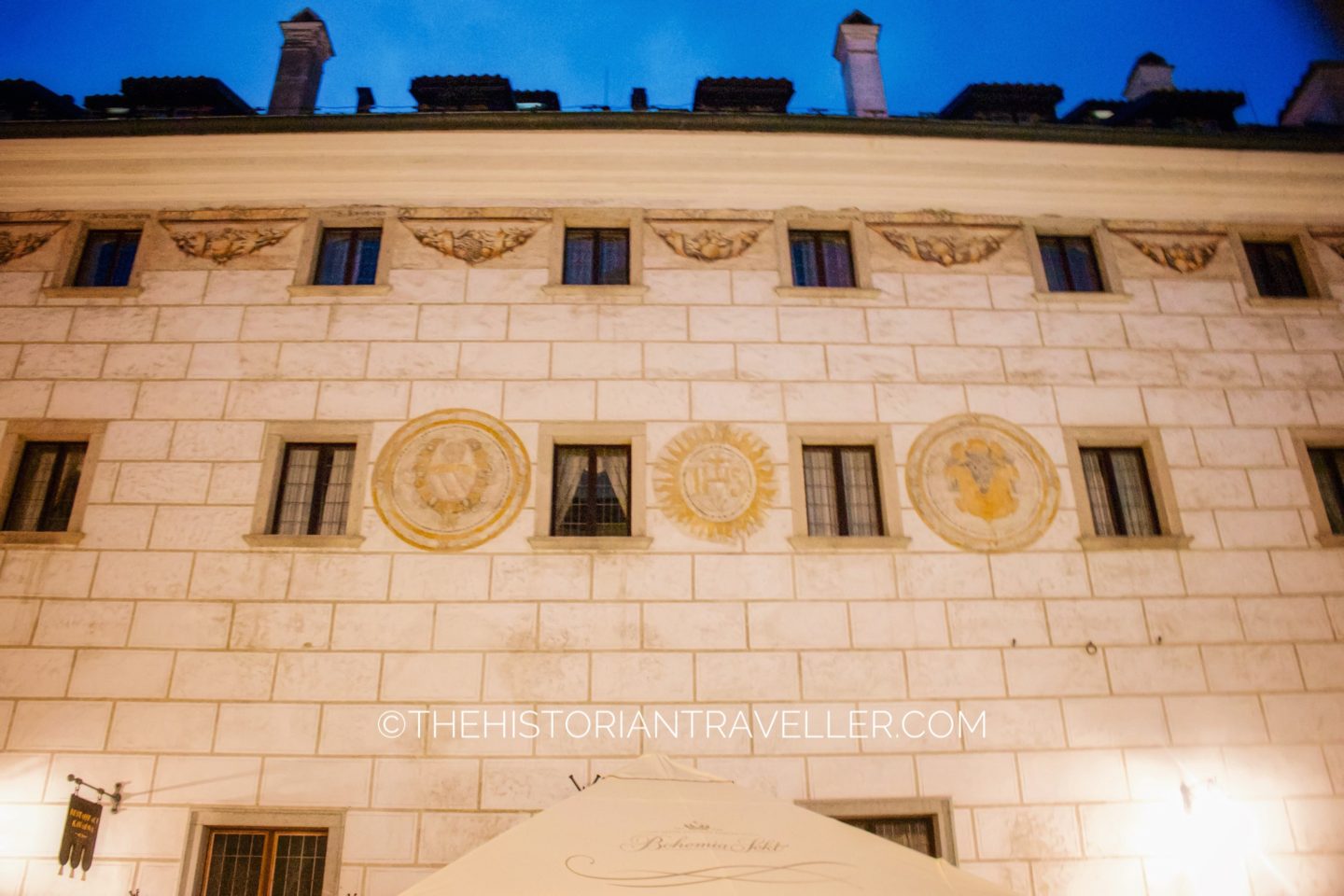
After the cession of the properties, the Rosemberg family moved to Český Krumlov and made it their home for more than 300 years. You need just to look up when walking around the town to see their coat of arms almost everywhere and understand the importance of this family for Český Krumlov. Indeed, under the Rosenbergs, Český Krumlov flourished with new life slowly becoming the town we still walk today.
Peter I von Rosenberg was responsible for the city’s 14th century development. In fact, he was in charge for the construction of the upper part of the current castle. During that period, the town flourished in craft and trade. Moreover, it was granted the privileges of mill, brew beer and hold markets. During the 15th century, Ulrich II von Rosenberg was the main promoter of the town’s welfare. Český Krumlov was living its golden age and was granted permission of holding weekly and annual market attracting a large interest in the region.
Among the most notable Rosenbergs of the 16th century we should mention William of Rosenberg. He gave Český Krumlov its current Renaissance architecture. Moreover, he unified the Latrán part of the city with the Old town settlement that, until that moment, have been two separate administrative units.
The golden age came to an end in 1602. During this year, the last of the Rosenberg, Peter Vok of Rosenberg (brother of William) sold Český Krumlov to Emperor Rudolf II. The Emperor, gave it to his illegitimate son Julius d’Austria.
The end of the aristocratic era and the beginning of UNESCO Český Krumlov.
A turbulent period came after these events (including the Swedish invasion in 1648). These (in 1622) lead the Emperor to leave the town in the hands of the Eggenberg family, who financially supported him during the 30-years-war. Unfortunately, the last member of the Eggenberg family died in 1719. Therefore, the administration of Český Krumlov passed onto their closest heirs, the Schwarzenbergs. This family ruled until 1947. Luckily, the WWII didn’t bring battles or bombing and the town’s architecture survived till nowadays (thanks also to the town’s preservation efforts).
In 1992 Český Krumlov historical centre was designed as UNESCO World Heritage Site for the incredible preservation of its Gothic, Renaissance and Baroque architecture.
The best Český Krumlov winter activities
In my opinion, Český Krumlov is one of those places that during winter is even more magical than in summer. Even if during summer you may take advantage of the warm weather for activities like extensive trekking in the Šumava Bohemian Forest or kayaking in the Vltava river, winter has its advantages too. In fact, the town is less crowded giving you the opportunity to have all its UNESCO sites for you. Moreover, you may find the snow and shoot some winter-postcard pictures. Last, but not least, you can experience some amazing Czech winter traditions and visit the Christmas markets.
Note: Due to the Covid-19 Pandemic, all the 2021 Christmas Markets in Czech Republic have been suspended. The situation may change in 2022 and I will keep this post updated.
Experience medieval life at the Kláštery Český Krumlov
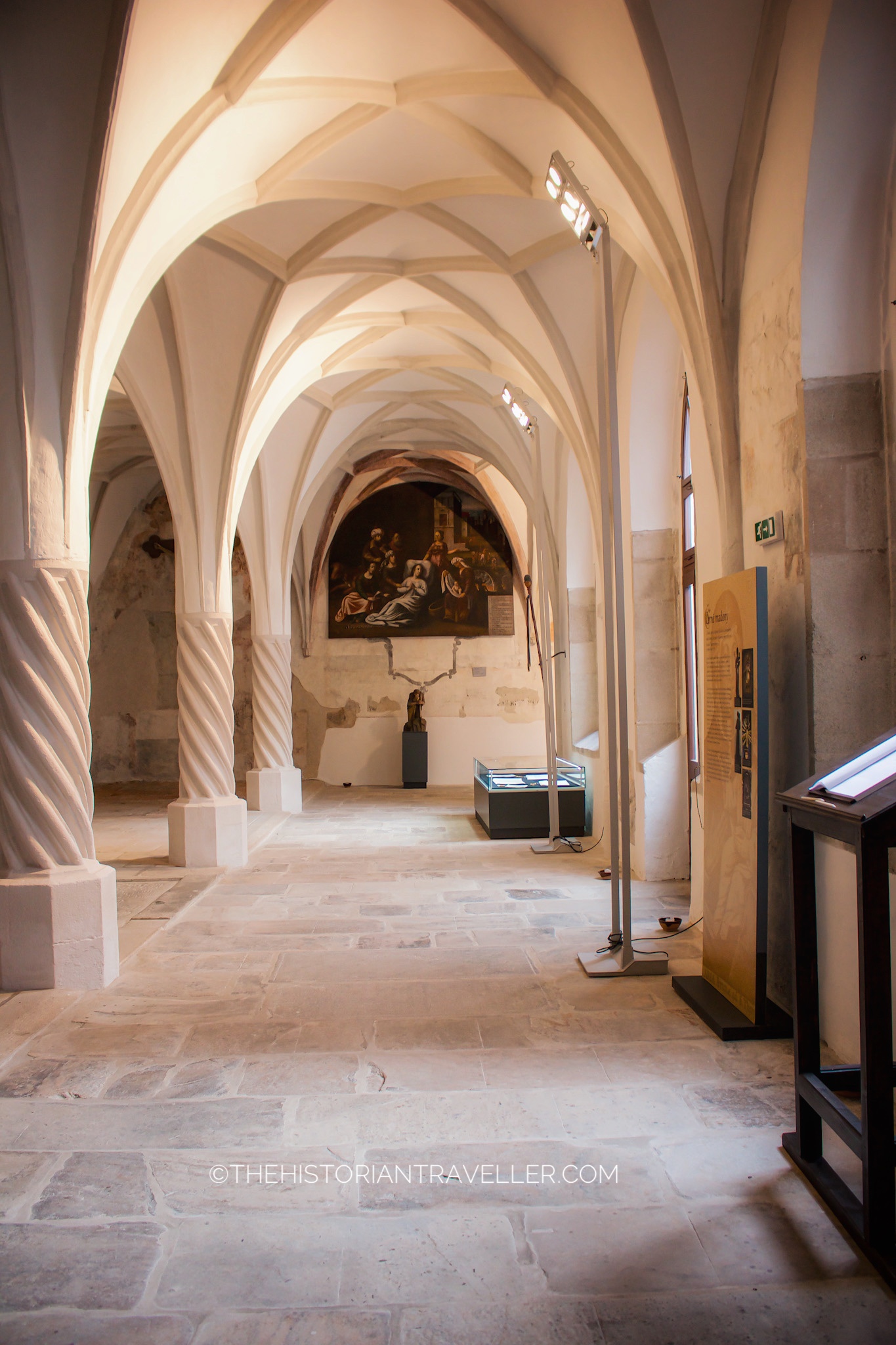
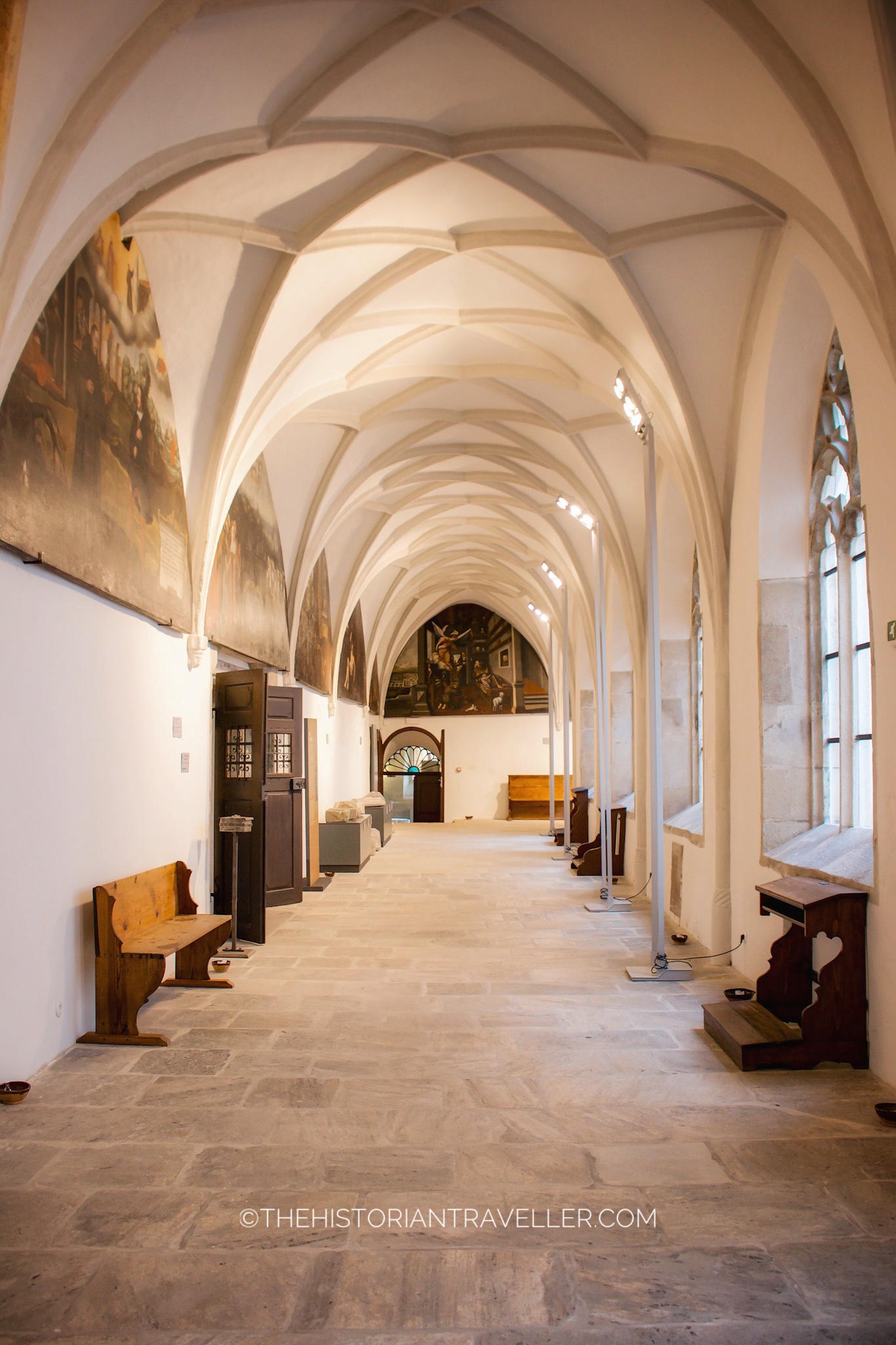
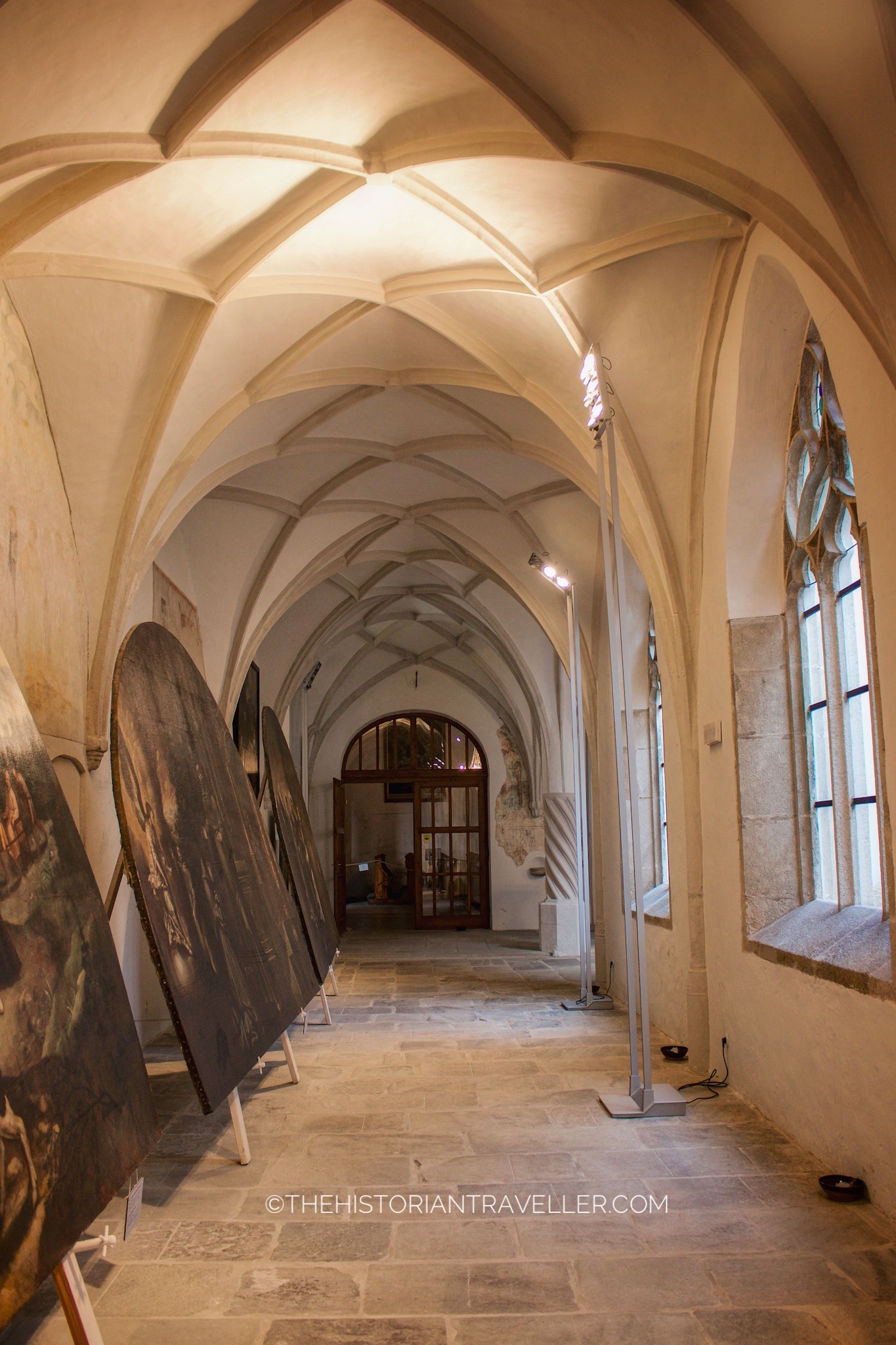
If someone told me I would have a lot of fun inside a Minorite Monastery, I wouldn’t believe it. However, the Český Krumlov Kláštery is special and you have to see it for believe it. But first, let me start with a bit of historical context.
The Kláštery in Český Krumlov has always been special. In fact, after its foundation by the Rosenberg family in the first half of the 14th century, it became one of the rare religious institutions used as a double monastery. Indeed, both brothers and sisters of St. Francis’s order established in the complex and influenced it’s administration from a cultural and architectural perspective.
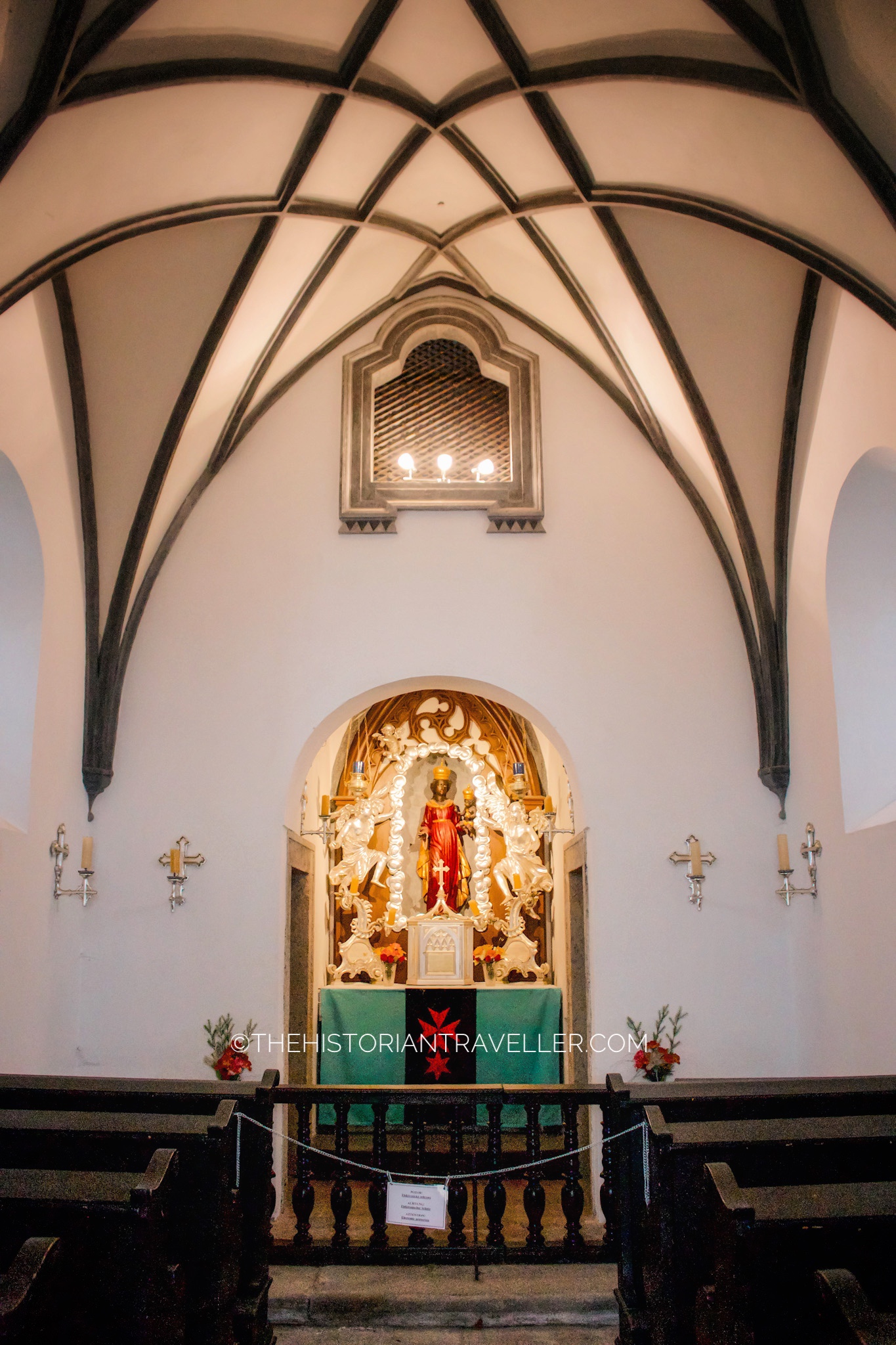
Both monasteries, dedicated to the Corpus Christi and Virgin Mary, had great cultural and religious significance not only for Krumlov but also for the neighbouring towns. Like many others, during the reign of Emperor Joseph II, the Clarissine monastery was abolished in 1782. However, the Minorite monastery continued its function until 1950, when it was abolished by the Communist K-plan.
The monasteries revitalisation started in 2014. This included the creation of an interactive educational centre for families and children and an space for art exhibitions.
The core of the monastery (including the Corpus Christi church) can be visited through the “Life and art in Krumlov monasteries” exhibition.
Learn from the Middle Ages. The Interactive exhibition of human skills. 3+Galleries
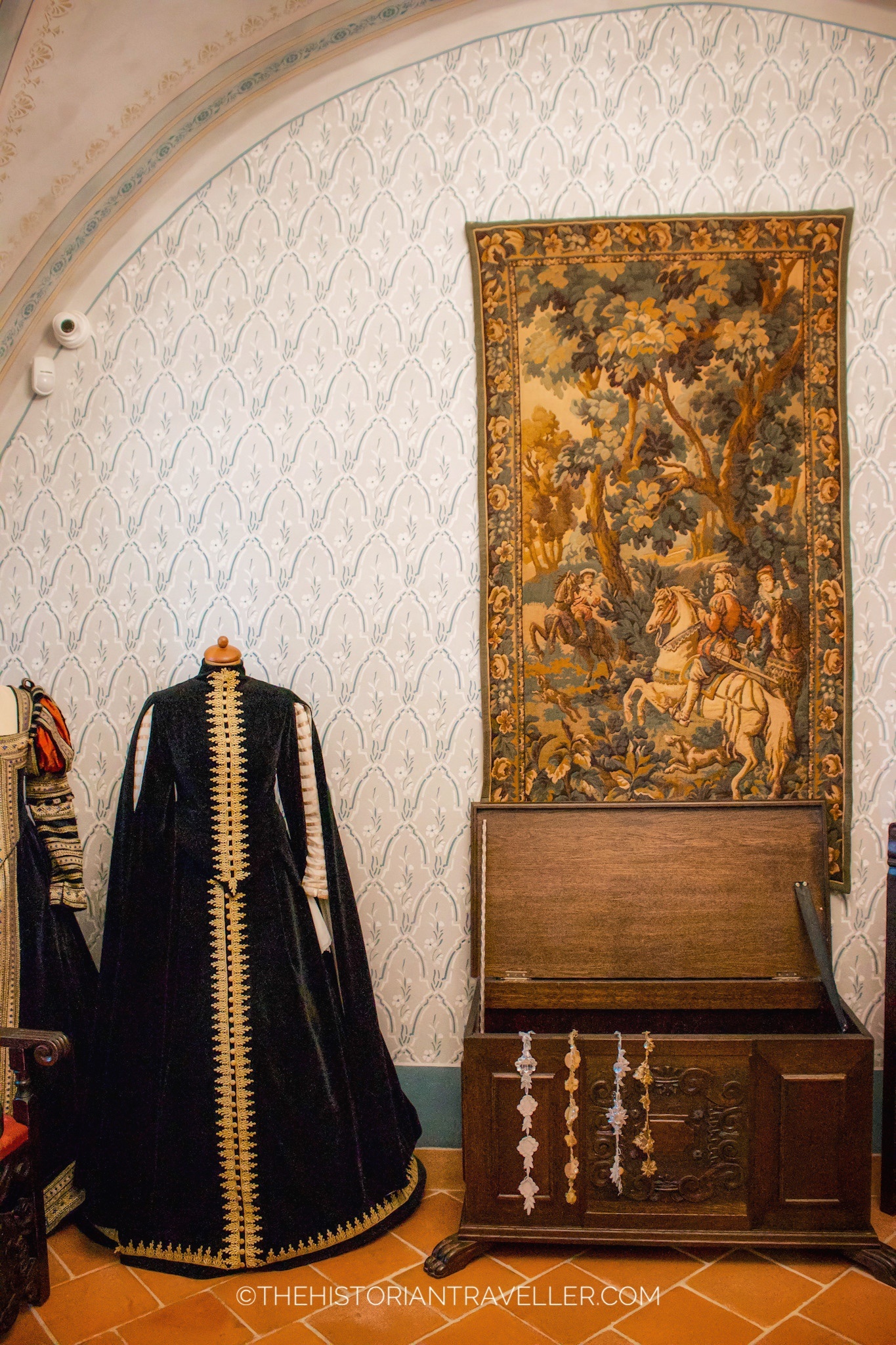
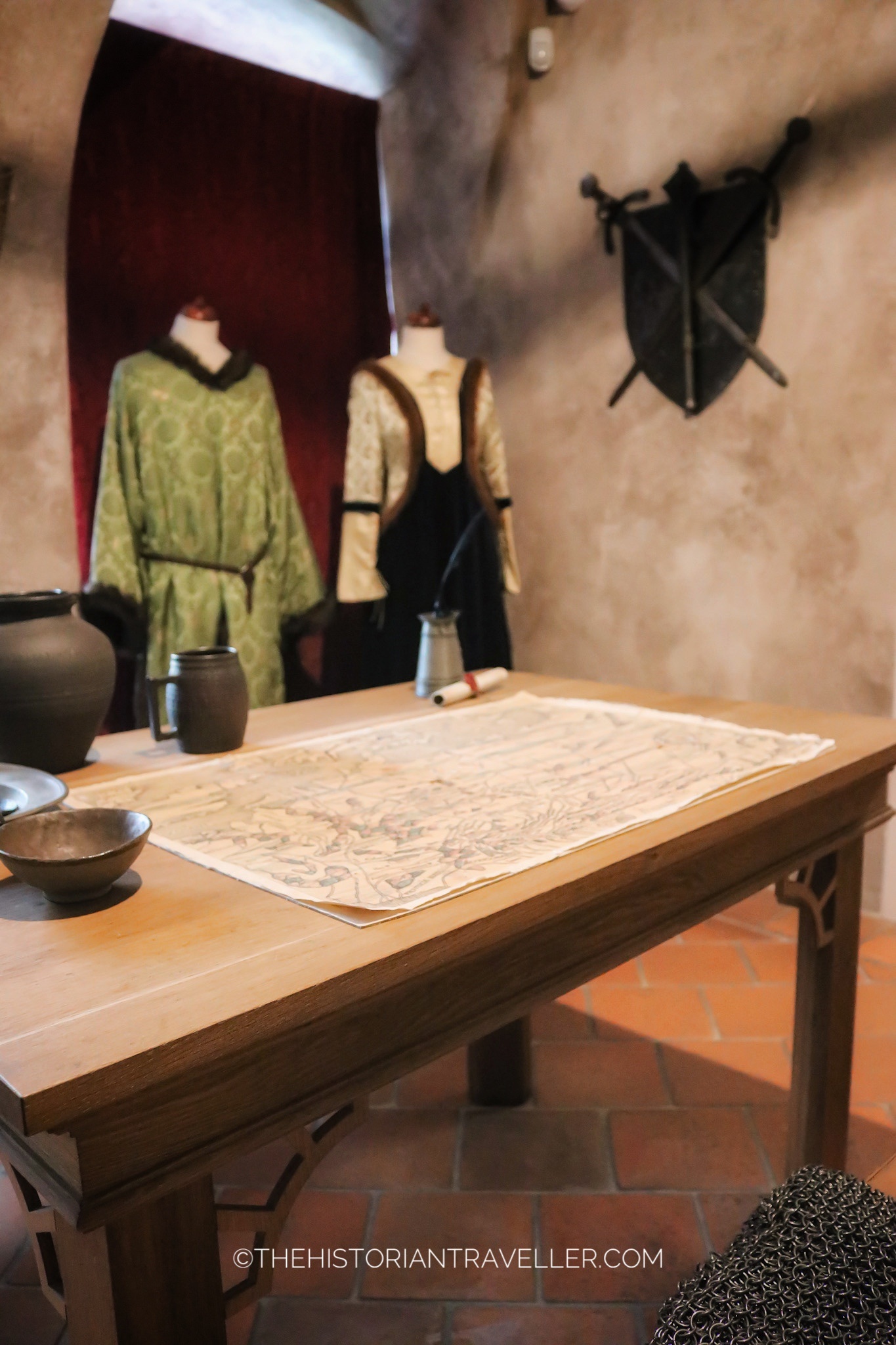
My favourite part of the monastery included the Interactive exhibition of human skills that is now called 3+Galleries. This includes the illustration exhibition, the creative playrooms and the craft workshops. As a medieval historian, I couldn’t appreciate enough the revitalisation of the monastery in such a constructive and faithful way! In fact, this exhibition (that is open to everybody but particularly appreciated by children and young people) will teach you everything about life in the monastery during the Medieval and Renaissance times. The most amazing thing is that visitors are not just passive spectators of the exhibition but they are actively involved in this experience. Children and their families can touch materials, create things (e.g. the medieval seals or potions), smell products and learn in a very funny way. Moreover, the exhibition is barrier-free and completely accessible to disabled people (only the Alchemist room in the basement has not accessible stairs).
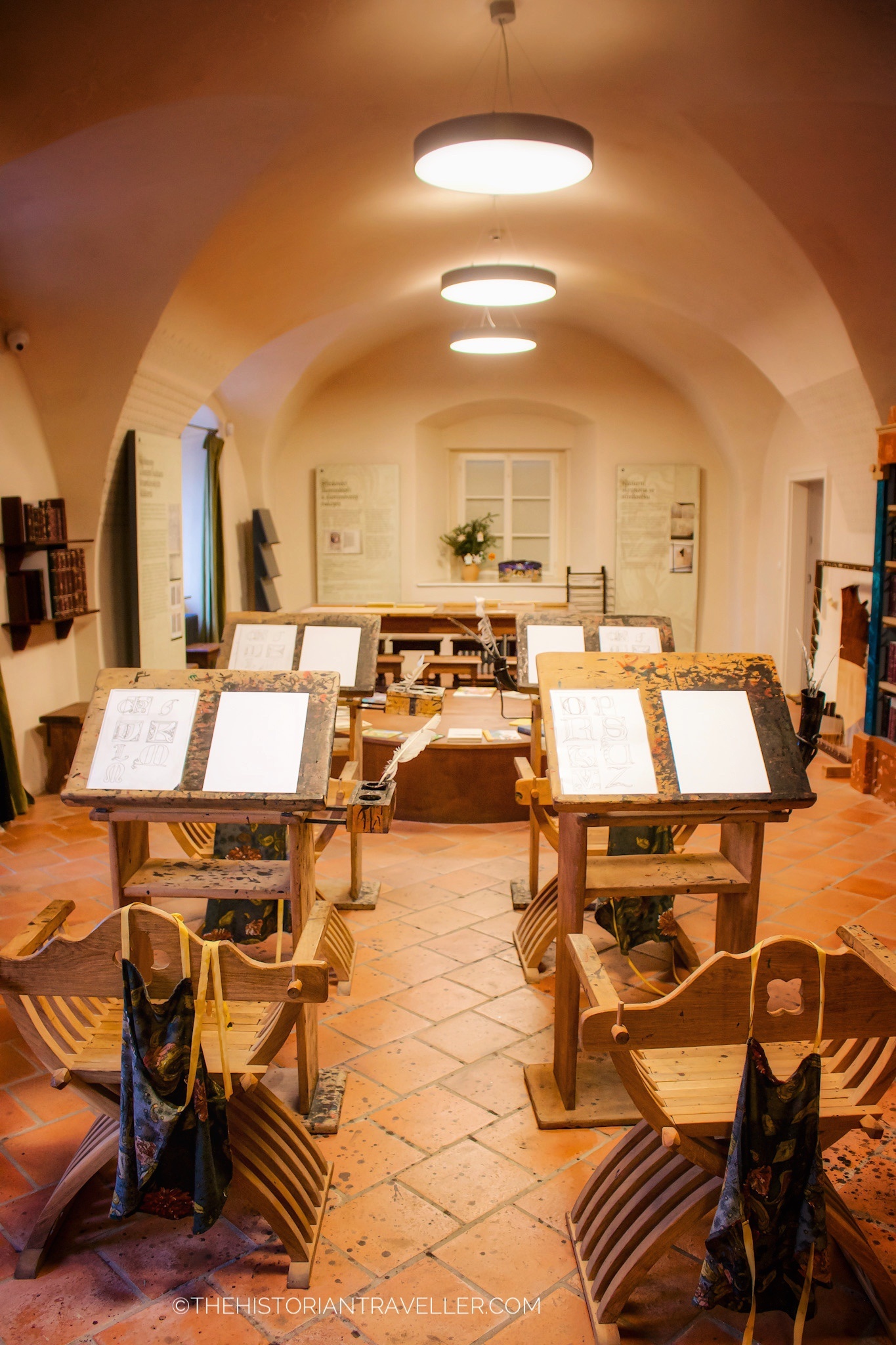
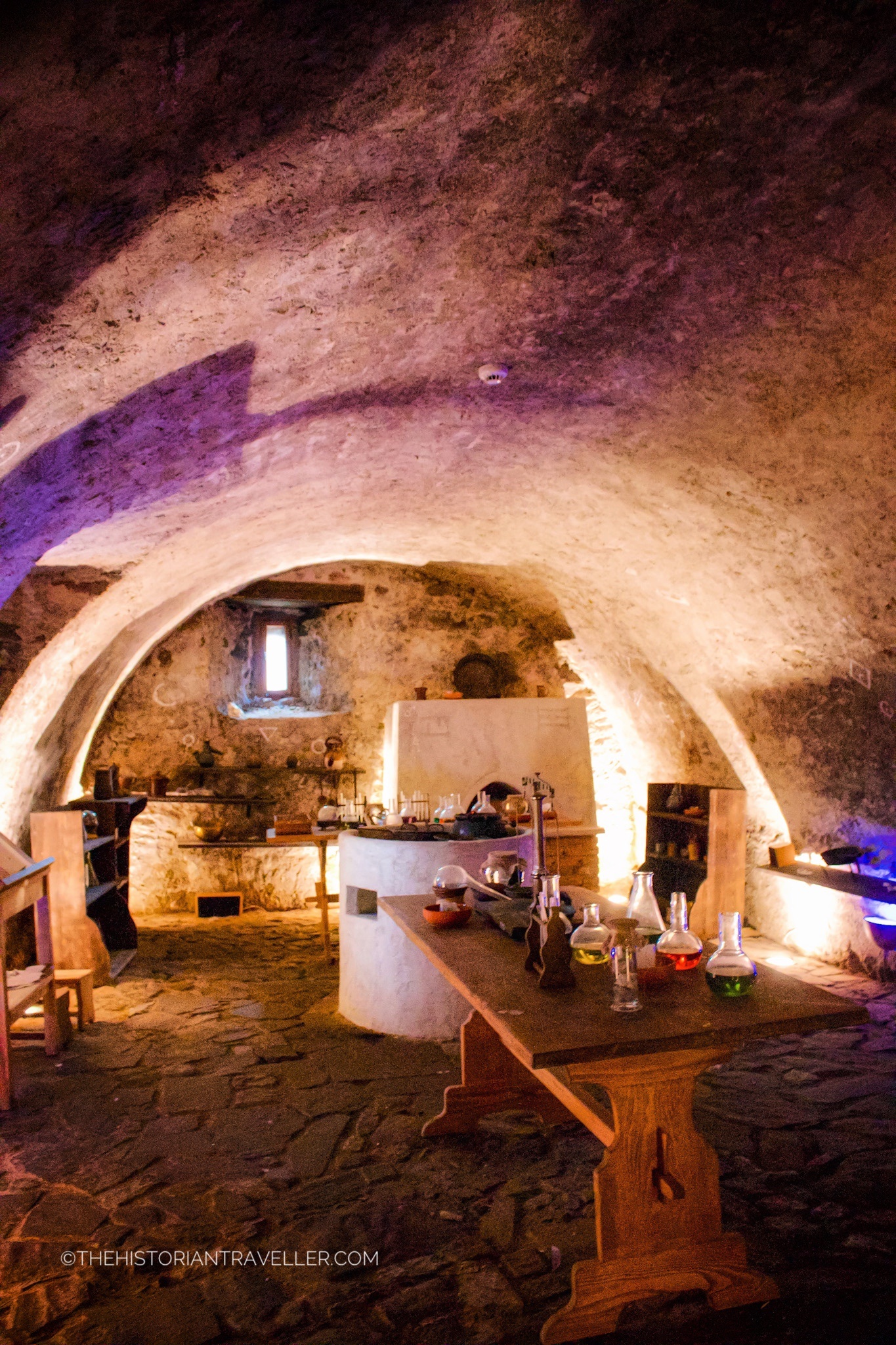
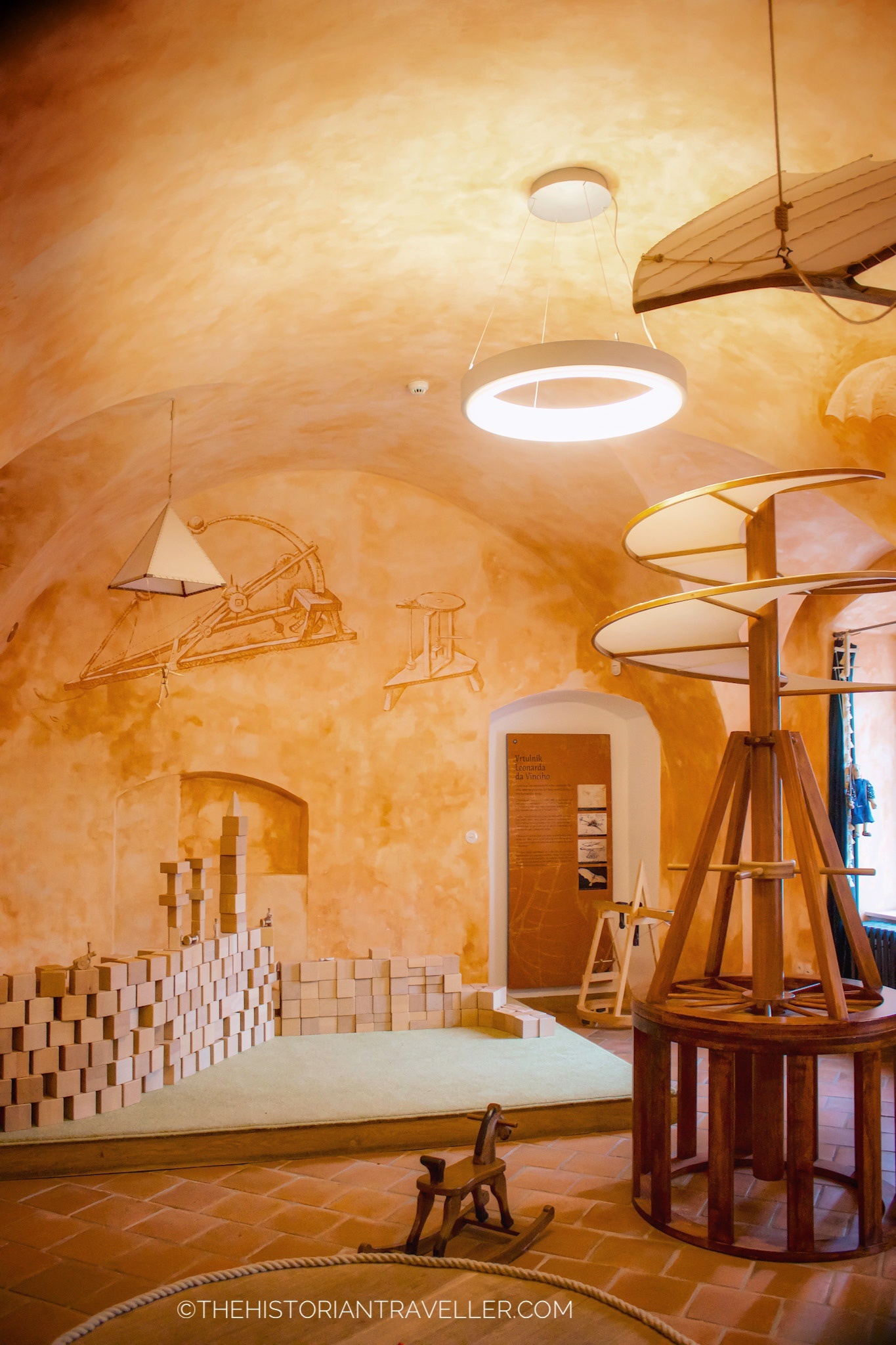

I appreciated that spaces like the scriptorium remained faithful to their medieval/Renaissance function. This gives people a more authentic experience of how spaces were used during those periods. Among the top activities visitor can do at the museum you can find: manuscript illumination workshop, alchemist potion class, apothecary and craft workshops.
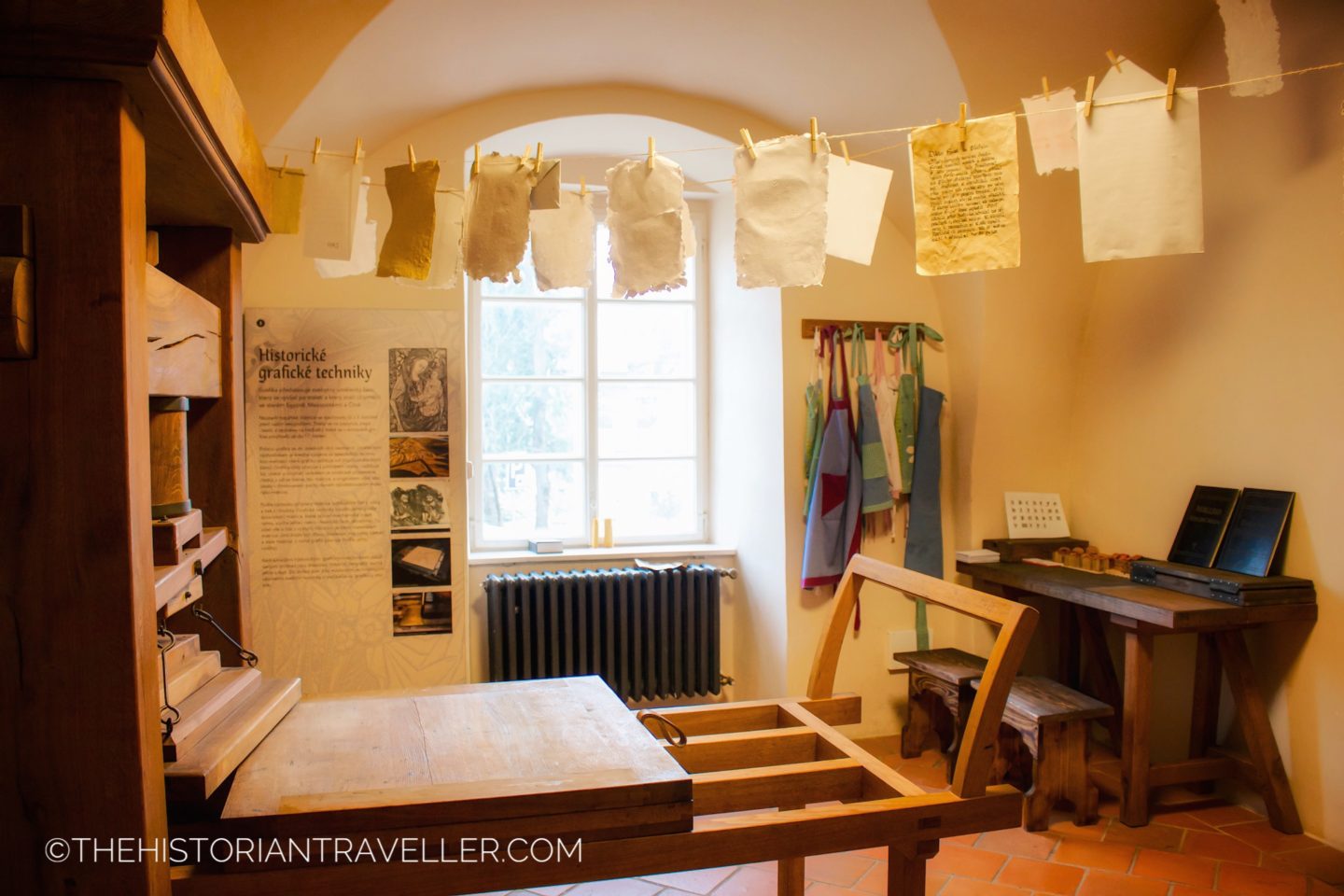
Other exibitions at the Kláštery. Jindra Čapek’s fantasy work
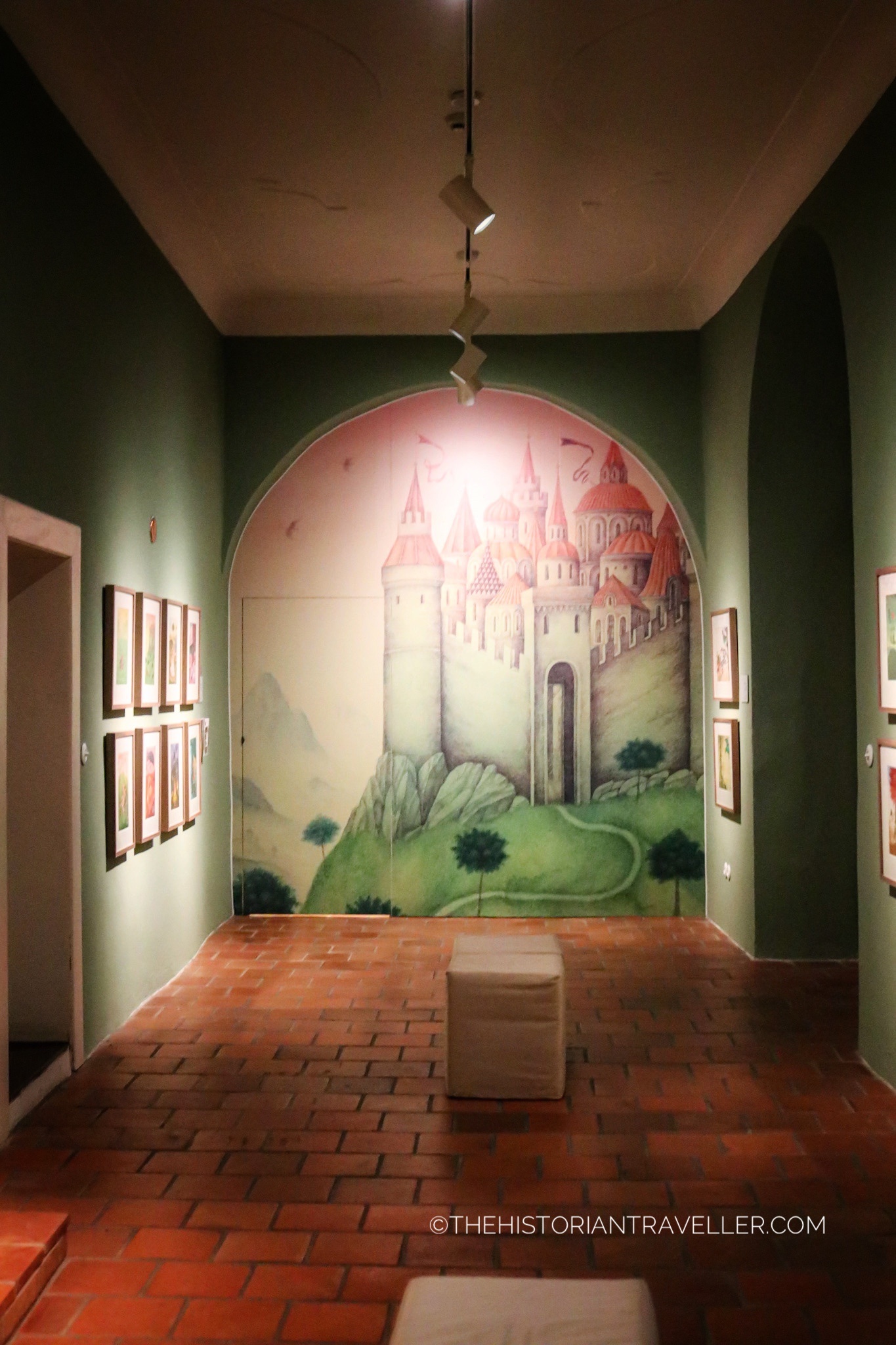
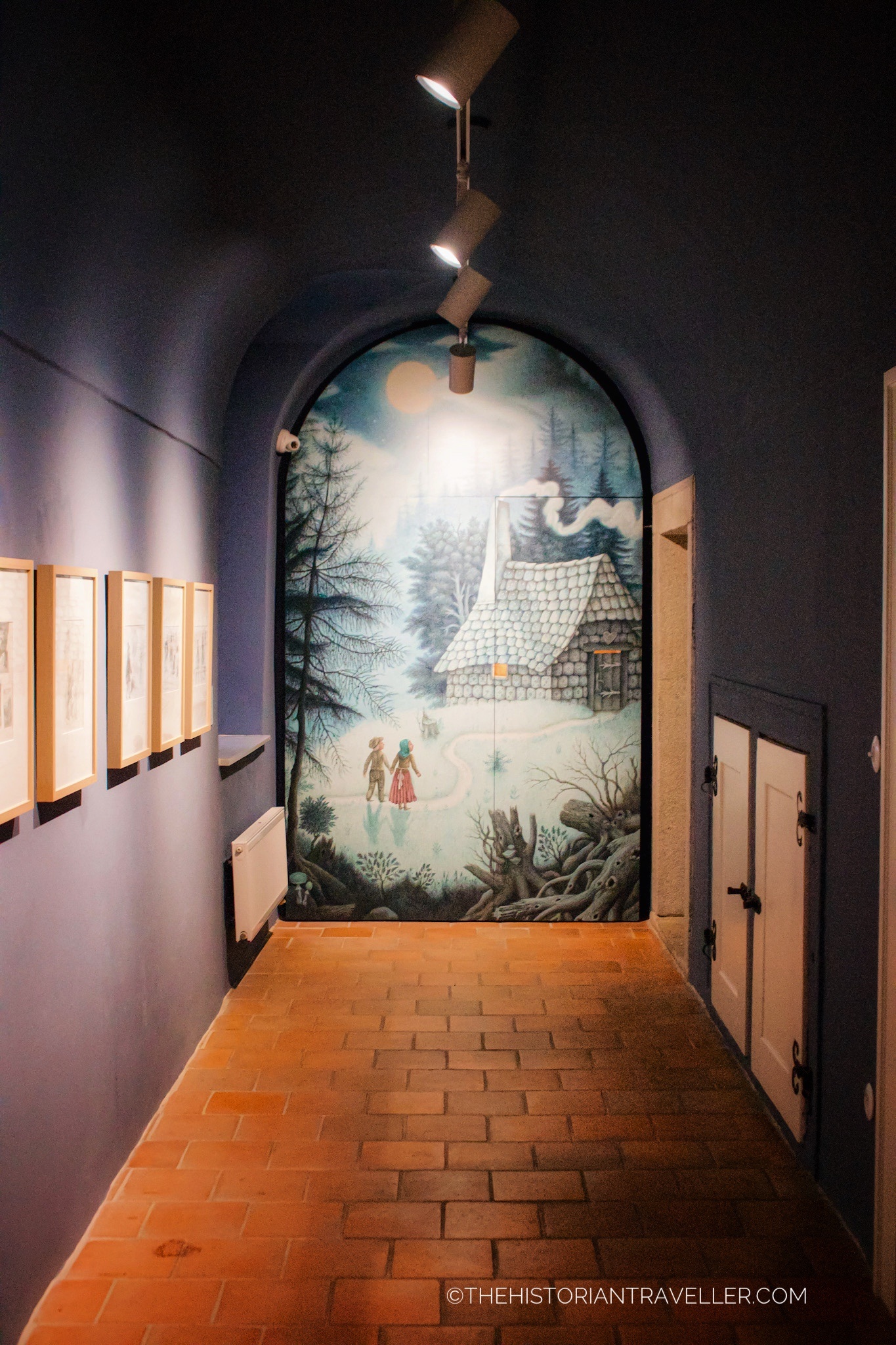
While visiting the Kláštery, you can have the opportunity to visit an additional exhibition entirely dedicated to children fairytale book’s illustration. The worldwide famous Czech artist Jindra Čapek will guide you through his beautiful illustrations. While walking around the monastery’s corridor you will discover a fantasy world full of mysterious creatures coming alive at the touch of your phone, beautiful fantasy landscapes and known loved fairytales. Children have also the possibility of undertaking a fantasy game based on the collection of playing cards around the exhibitions space.
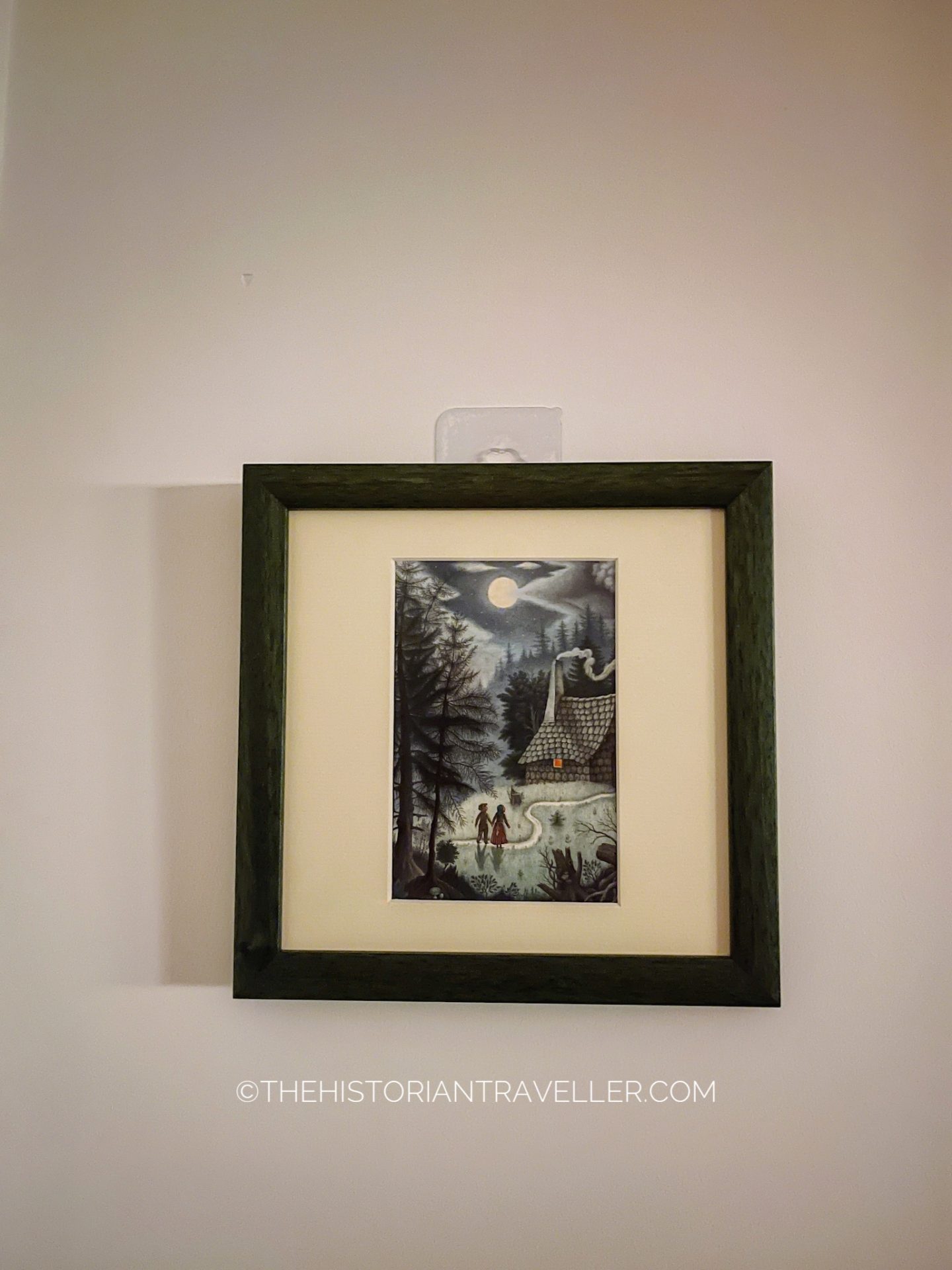
I honestly love Jindra Čapek illustrations and I am so happy to have one of my favourites hung on the walls of my home (picture above)!
Practical Information
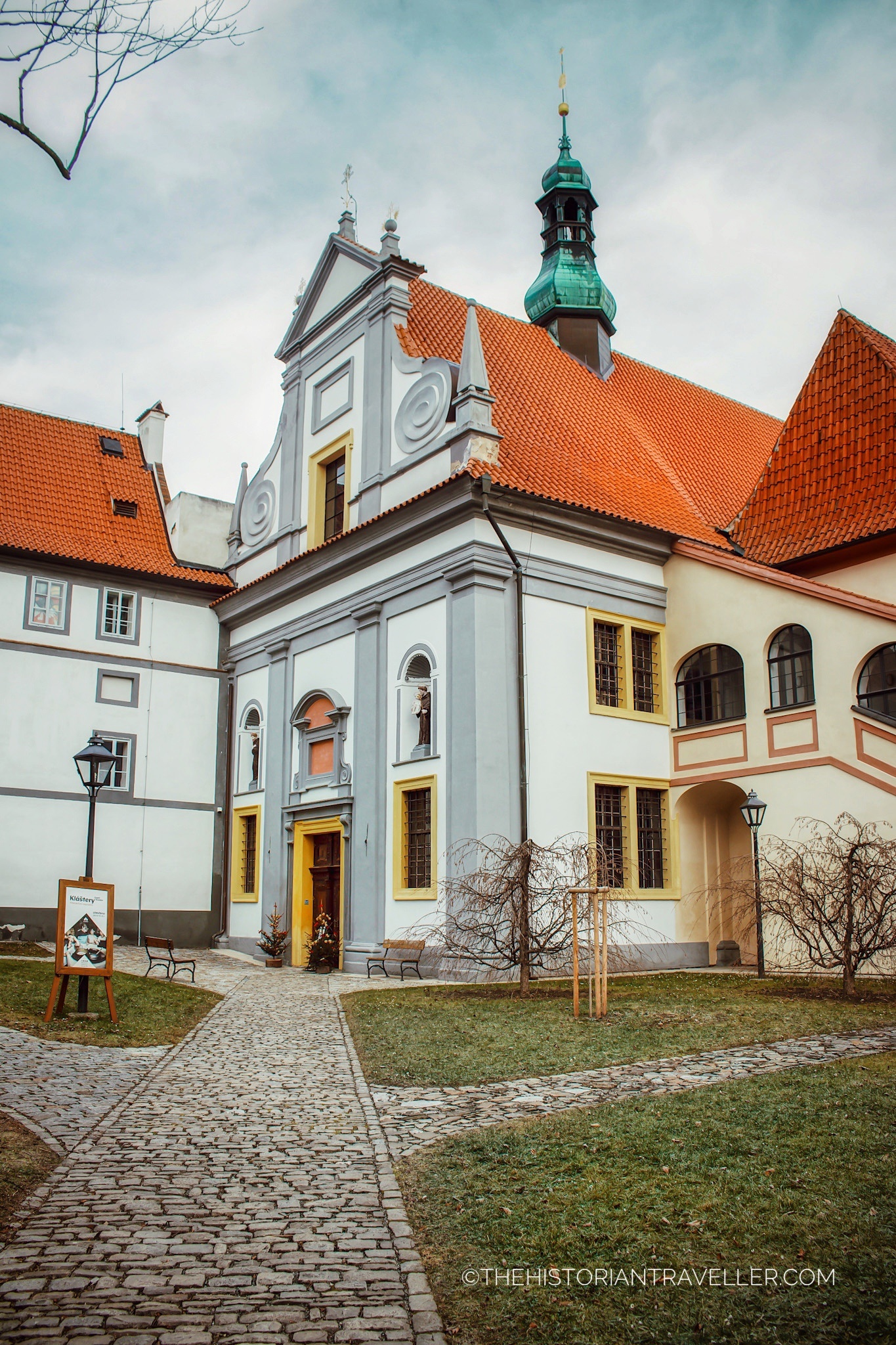
Opening times: All the exhibitions are open Mon-Sun from 10.00 to 18.00 (The visitor centre opens at 9.30)
Fees: Life and Art in the monasteries (150 CZK); Interactive exhibition of human skills (190 CZK); Jindra Čapek’s Fantasy world (190 CZK); Grand Tour – All the exhibitions (380 CZK). Visitors with a Český Krumlov card have free access.
Address: Klášterní Dvůr 97, 381 01 Český Krumlov, Czechia
Email: informace@divadlock.cz
Website: https://www.klasteryck.cz/cz/klastery-cesky-krumlov/
Get a winter 1910′ photo-shoot at the Museum Fotoatelier Seidel
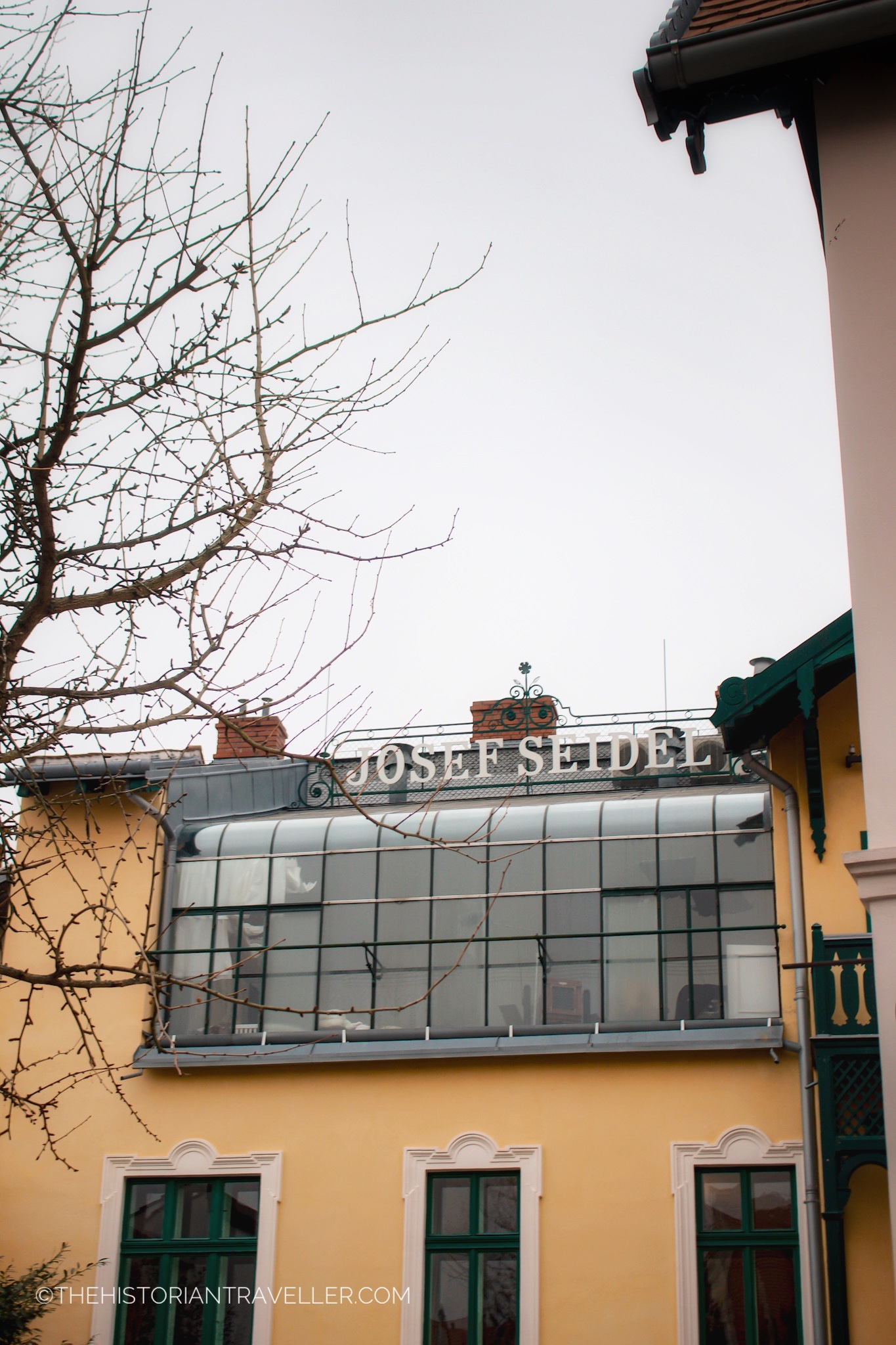

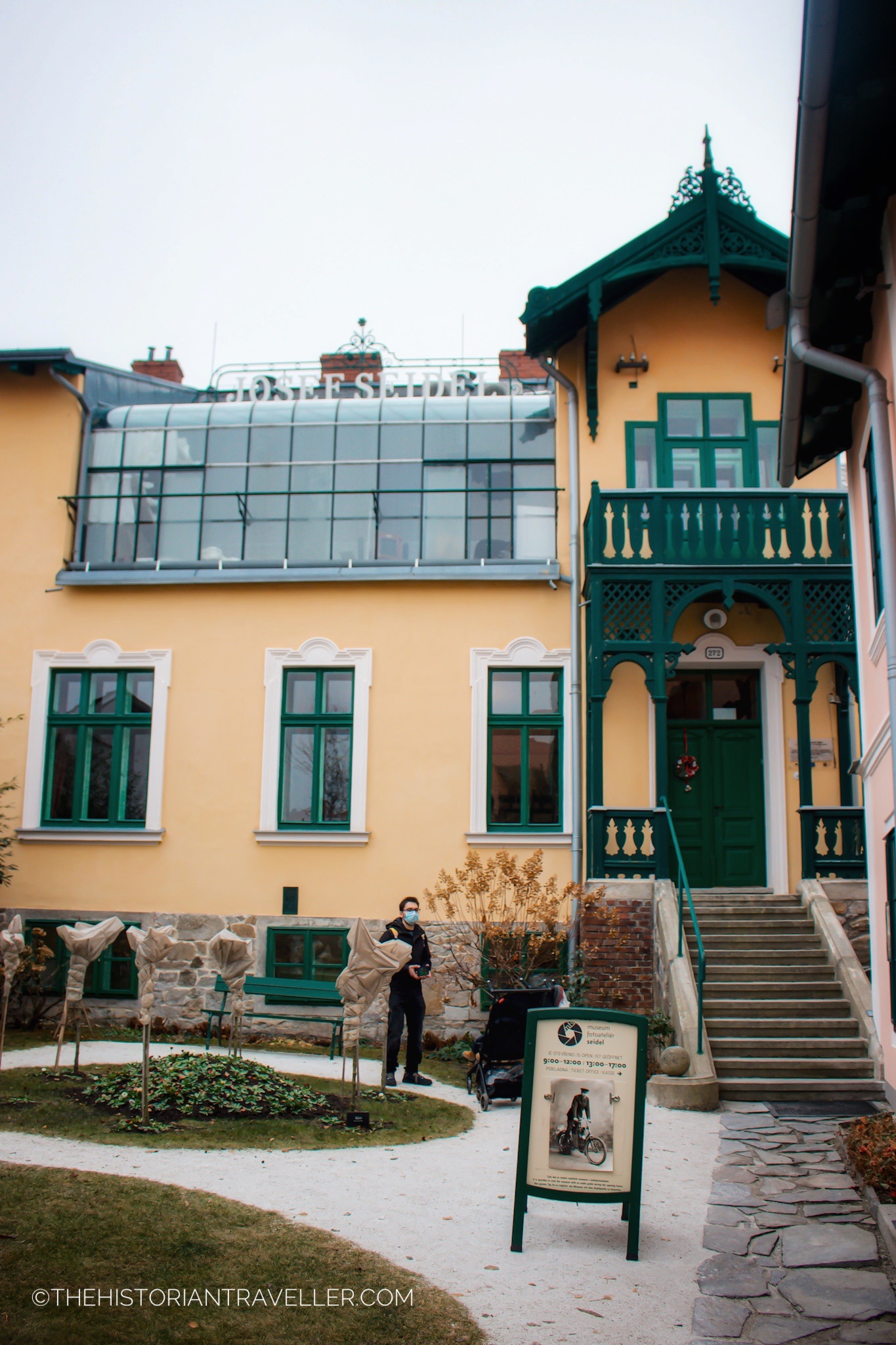
Are you ready to get back in time? Because at the Museum Fotoatelier Seidel this magic is possible. For real.
Who is Josef Seidel?
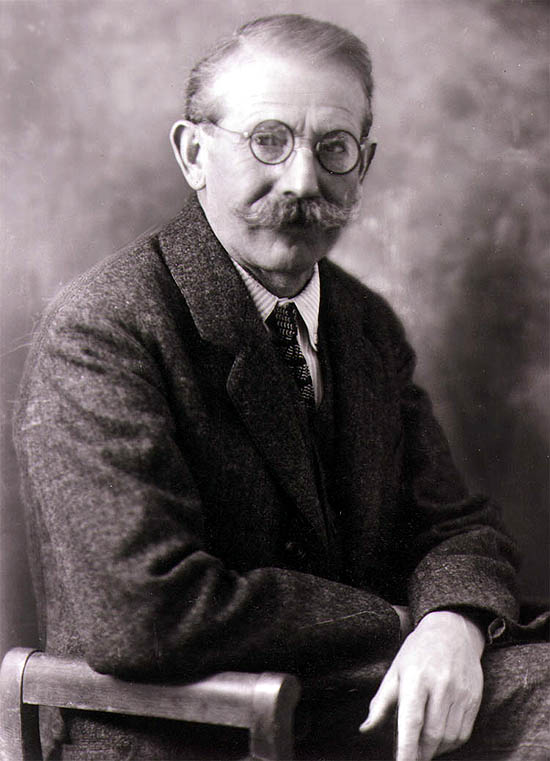
Josef Seidel was a German photographer who lived between 1859 -1935. He was a pioneer of panoramic and landscape photography. Moreover, he mastered the art of photo-chronicle by picturing the Czech-German-Austrian border between the end of the 19th and the first half of the 20th century. He was particularly famous as the “Šumava photographer” for its focused work on the Šumava and the Novohradské Mountains.

In 1888, he became the head of Gotthard Zimmer’s photo studio in Český Krumlov. Nevertheless, two years after Zimmers death, he decided to take over the entire photo studio in Linecká Street no. 64. Here, he became specialised in portrait photography and managed a publishing house specialised in photographic postcards. In 1905, the house with the photographic studio was rebuilt/renovated and still appears as we know it today. The work of Josef Seidel was carried on by his son František who administered the studio until the early ’90. The Seidel house had a very extensive renovation in 2006-2008 before opening as a Fotoatelier and Museum.
Visiting the Museum
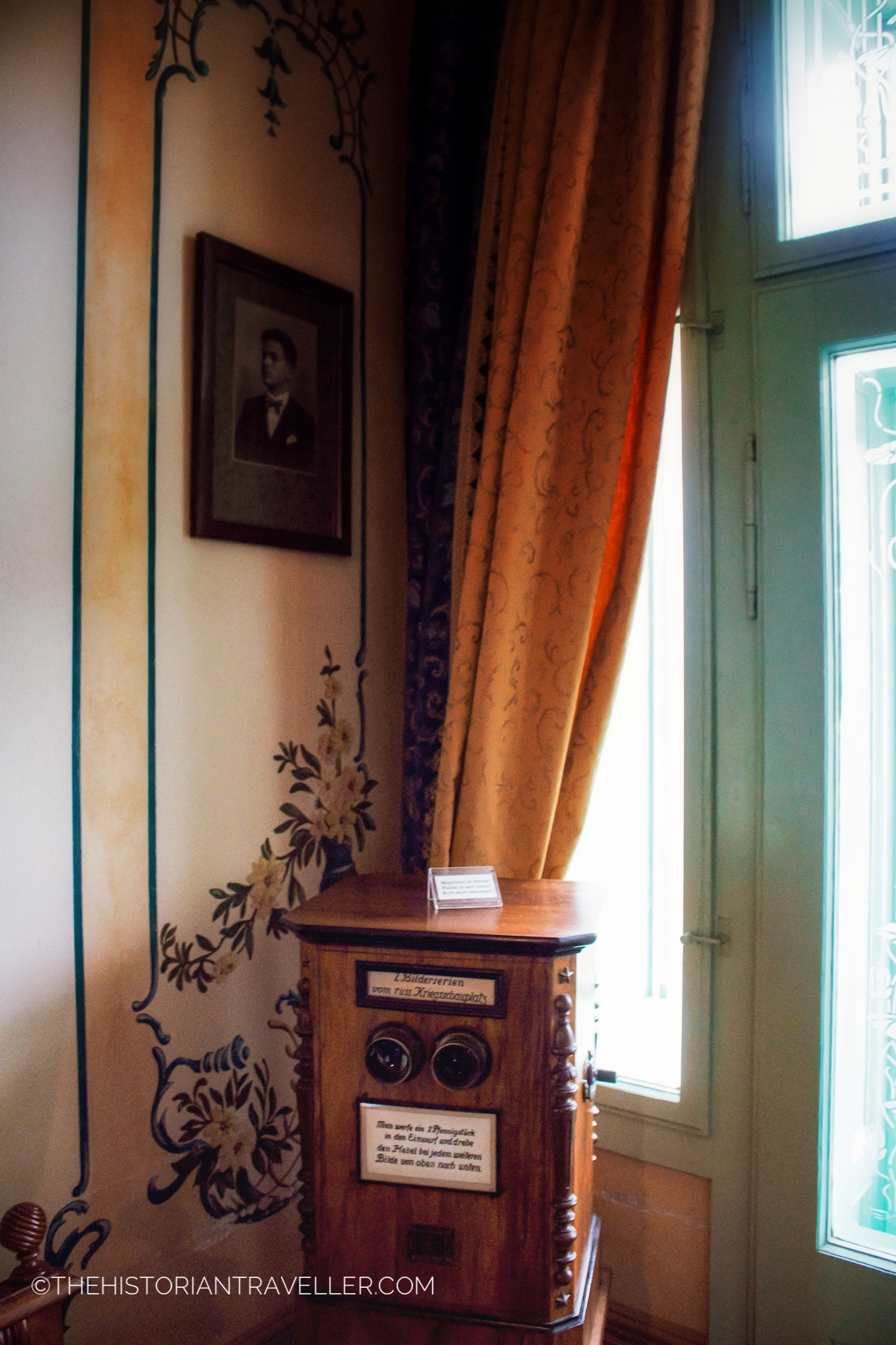
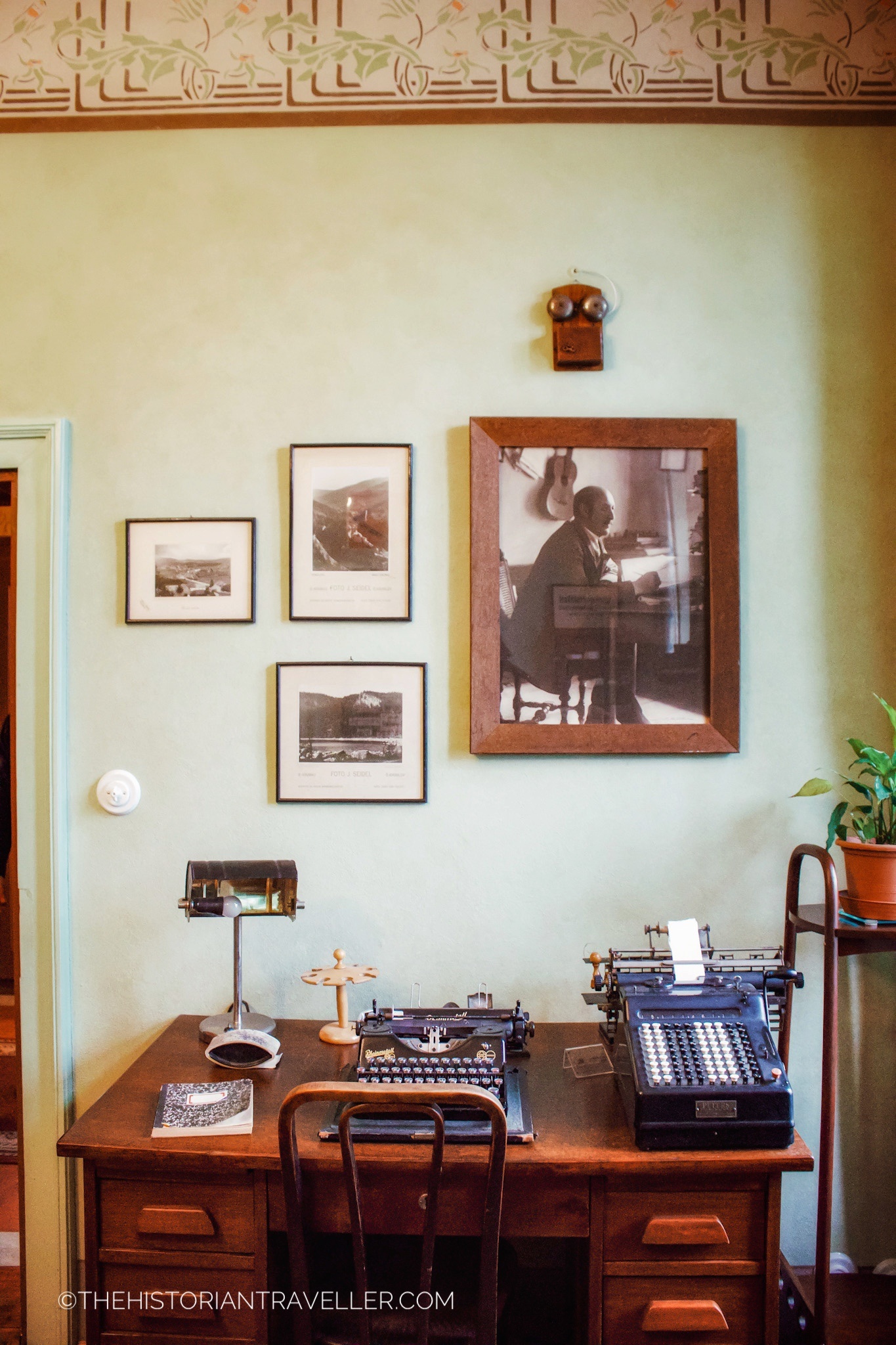
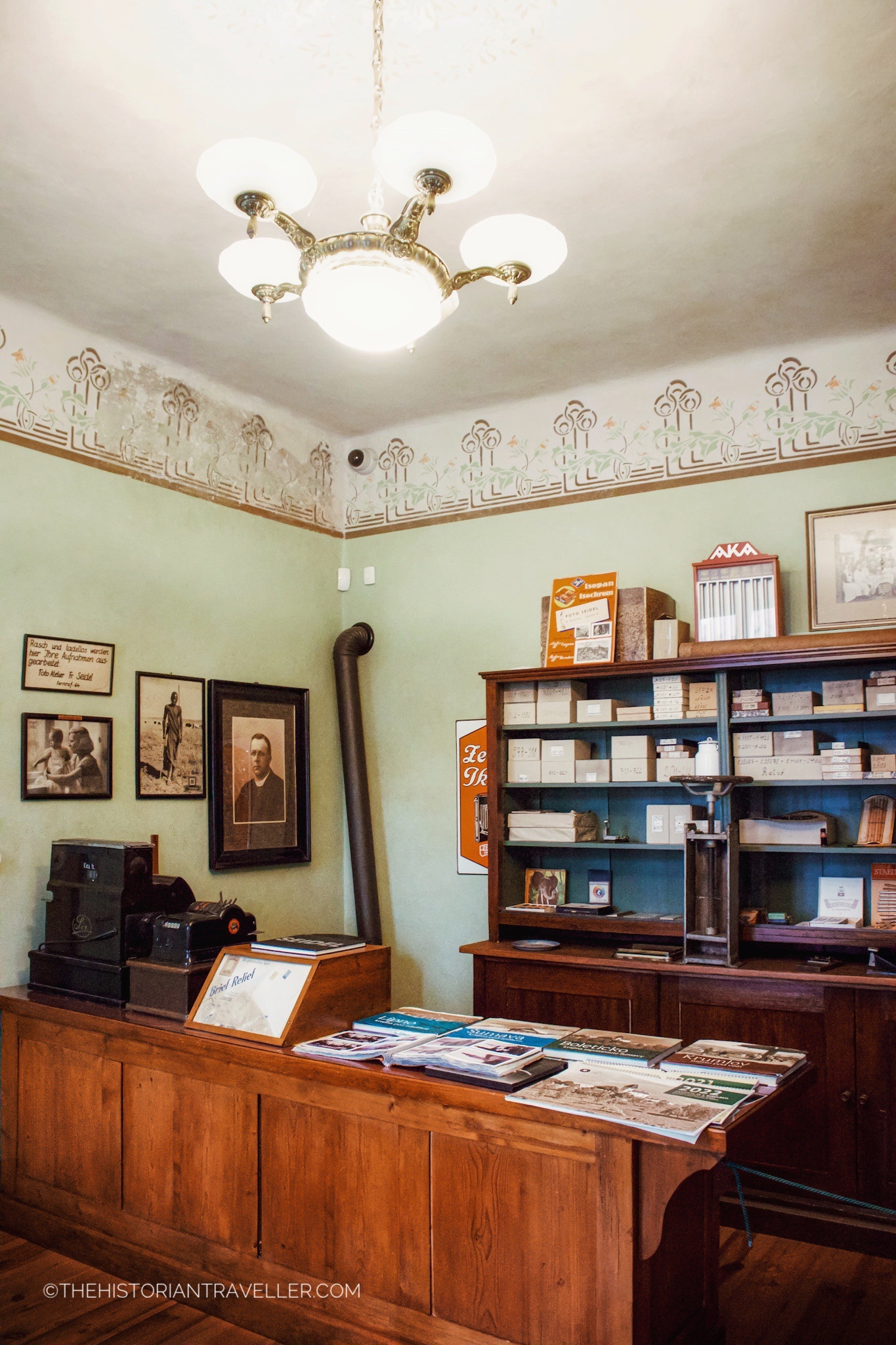

The 1905 Seidel studio house served as a photographic studio until 1949. All the original equipment is still preserved inside the building. This includes the photo chamber, the technical equipment and about 140,000 glass plates, as well as celluloid tapes with negatives. Moreover, an extensive photographic archive is preserved by the museum and it’s under digitisation. Part of the digitised collection is accessible here.
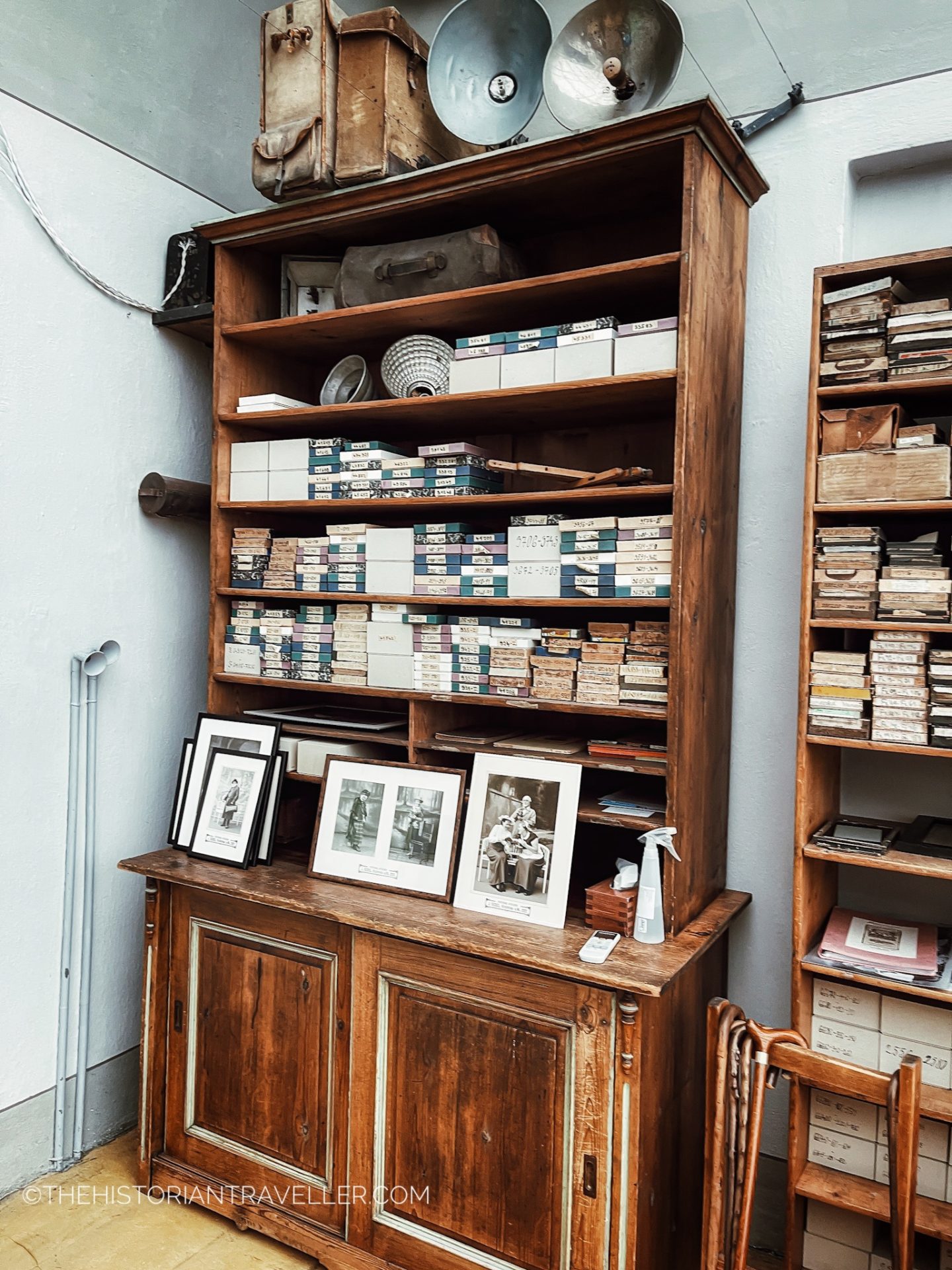

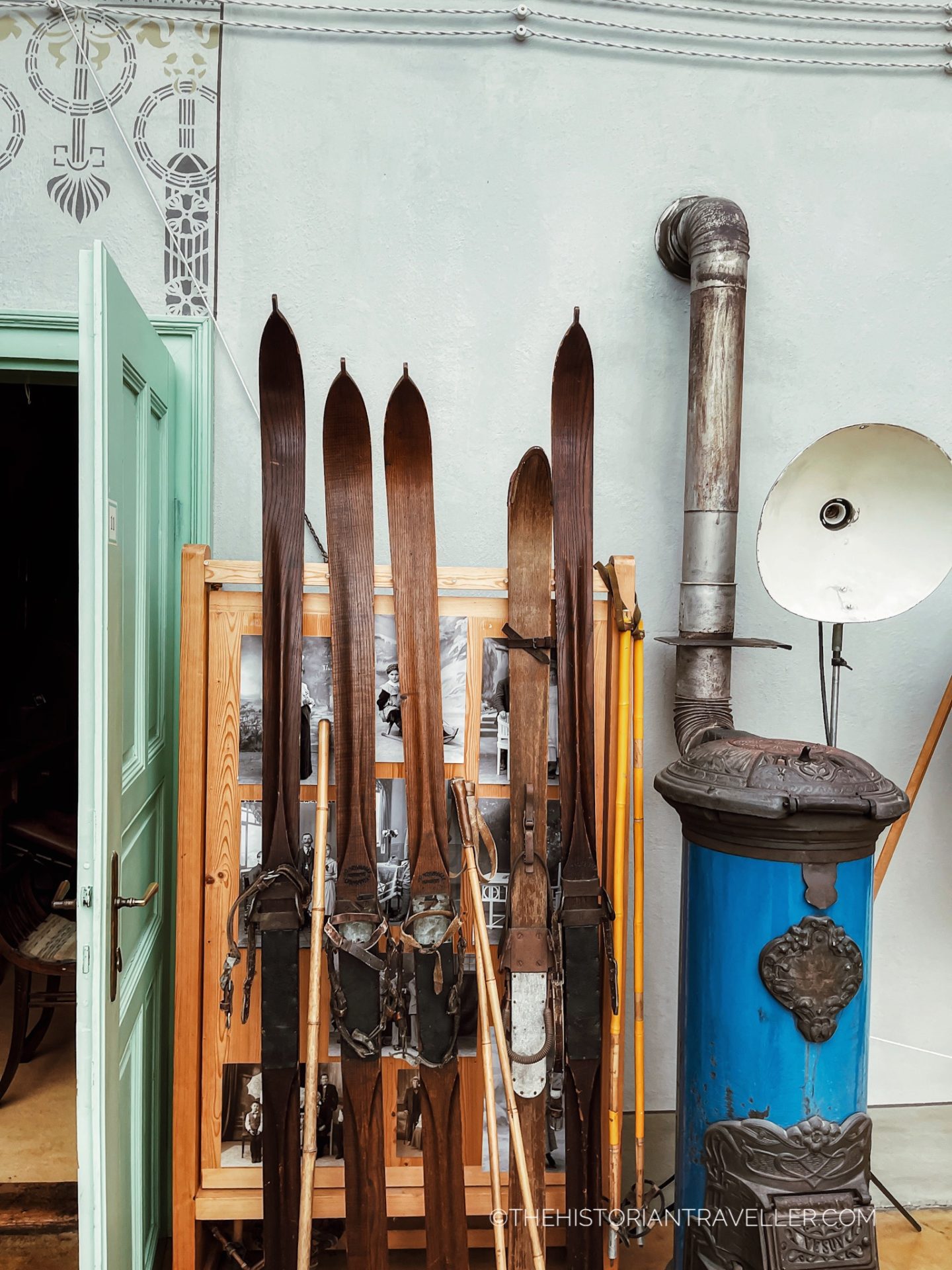
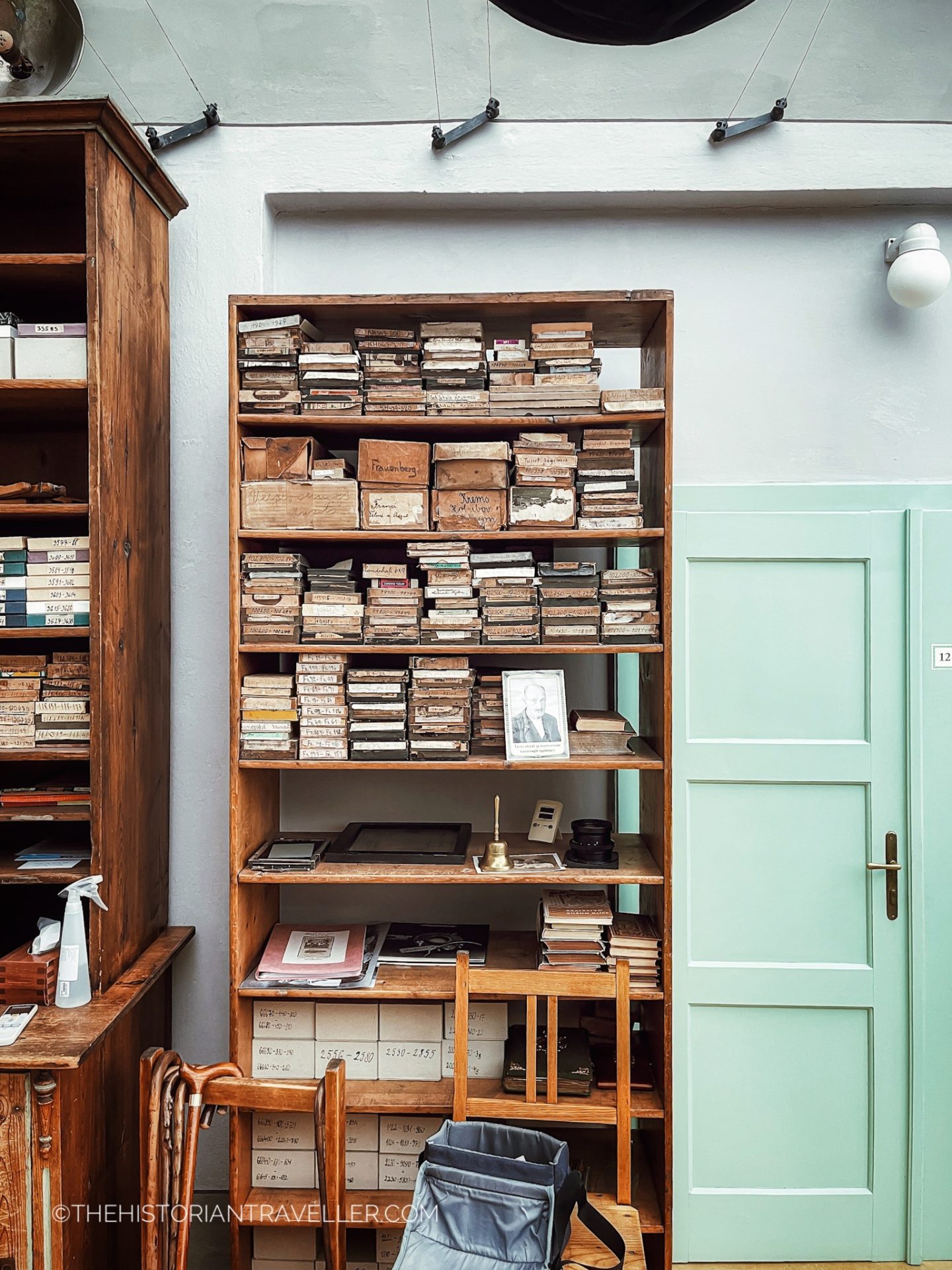
The museum is organised into two different levels and reflect the way Josef Seidel and his son worked. On the ground floor, visitors will find the “administrative area” that included a reception office and an accountant space. On the second floor, visitors will find the original fotoatelier used by Seidel for his customers. A Part of this room is made entirely of serrated glass for the use of natural light in portrait photography. The private area of the house (where Seidel lived) still preserves all the original furniture.
1910′ Photo-shoot
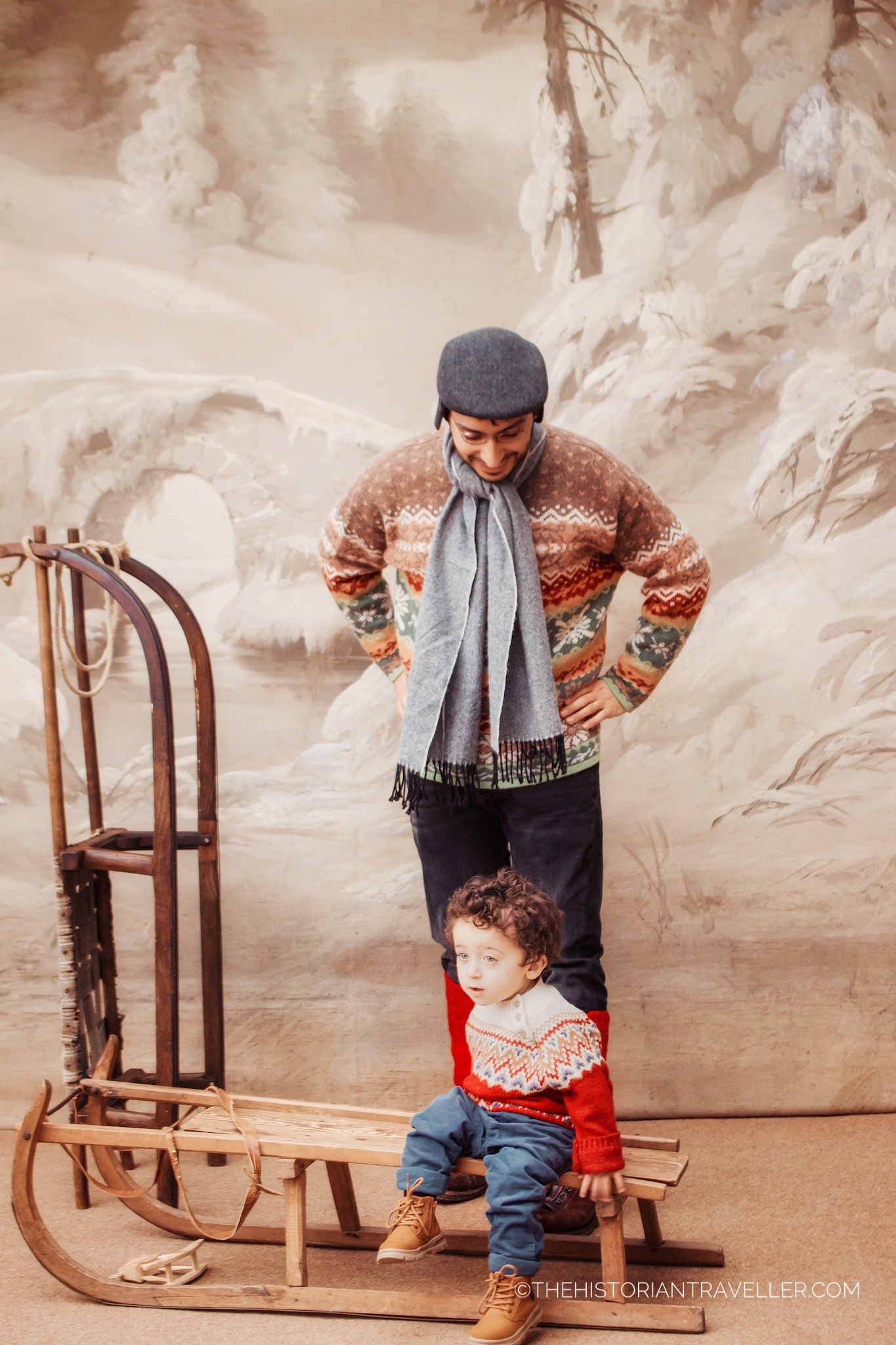
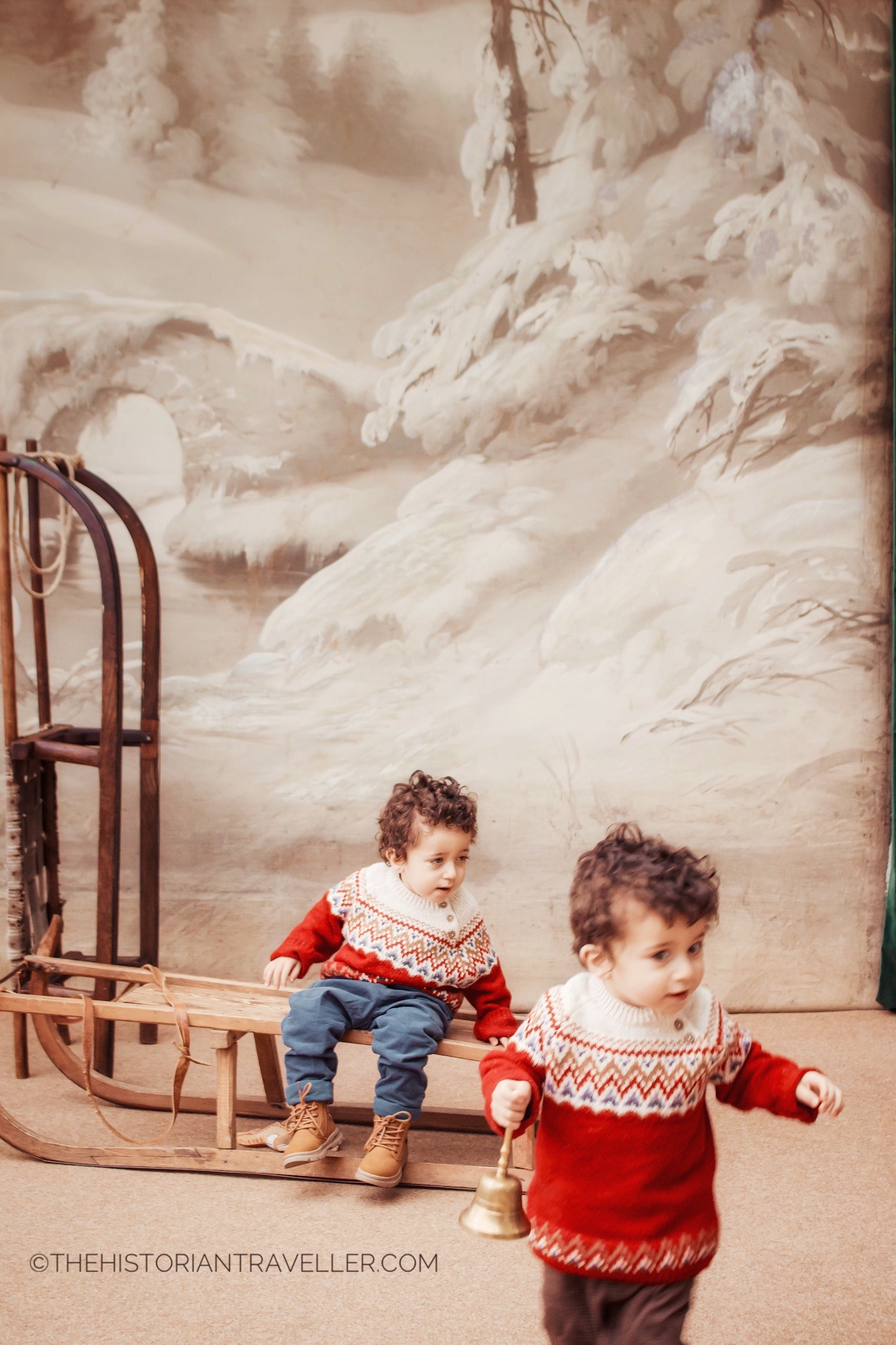
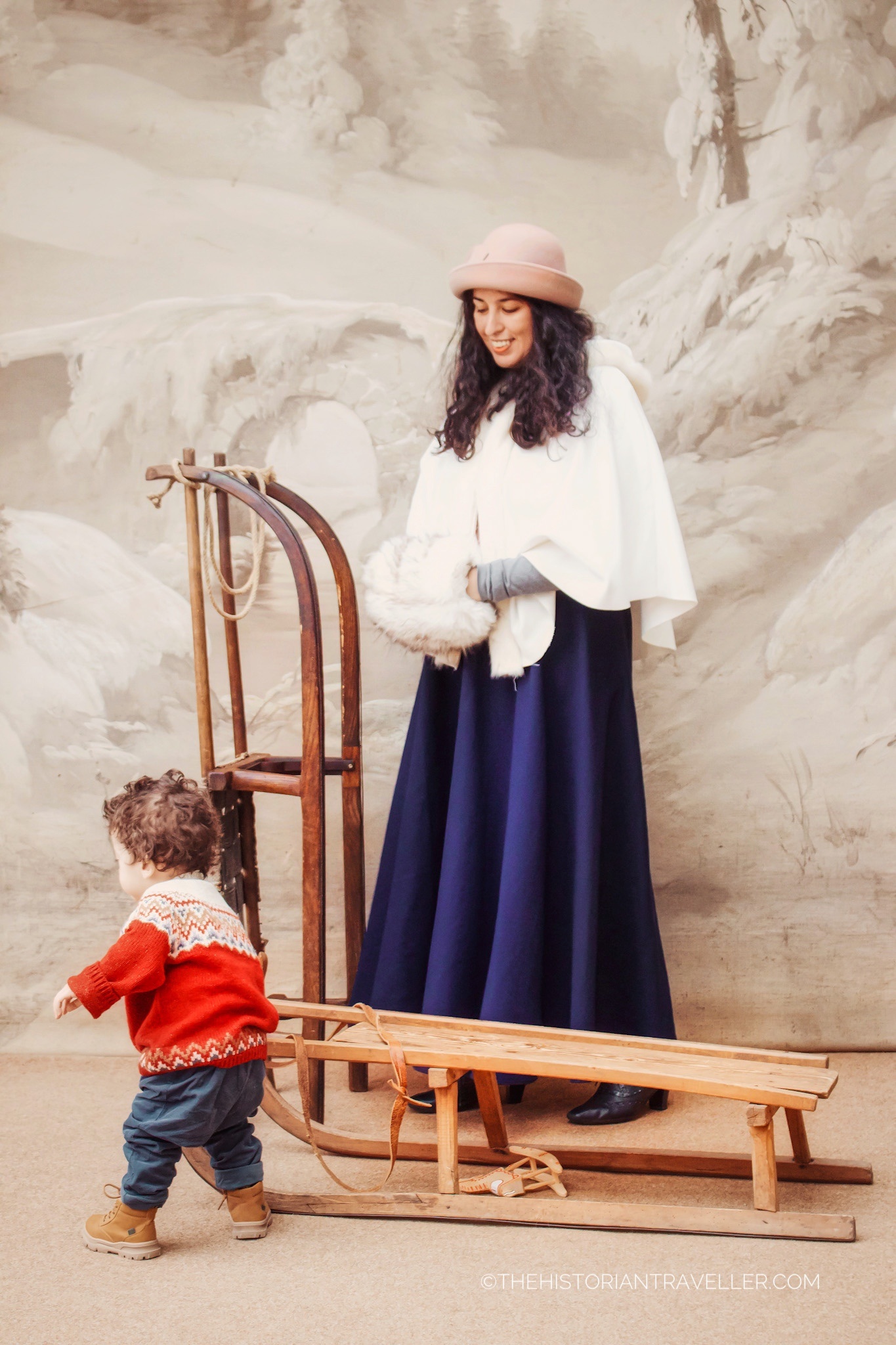
Amazingly, the Seidel fotoatelier Art Nouveau Studio is still fully functioning and, as if by magic, you can travel back to 1910 and have a thematic photo-shoot. In fact, the fotoatelier has a vast selection of period costumes carefully adapted to each season and occasion of the year. This is completed by hundreds of different photo props added to the thematic background (e.g. toys, ski equipment, benches etc.).
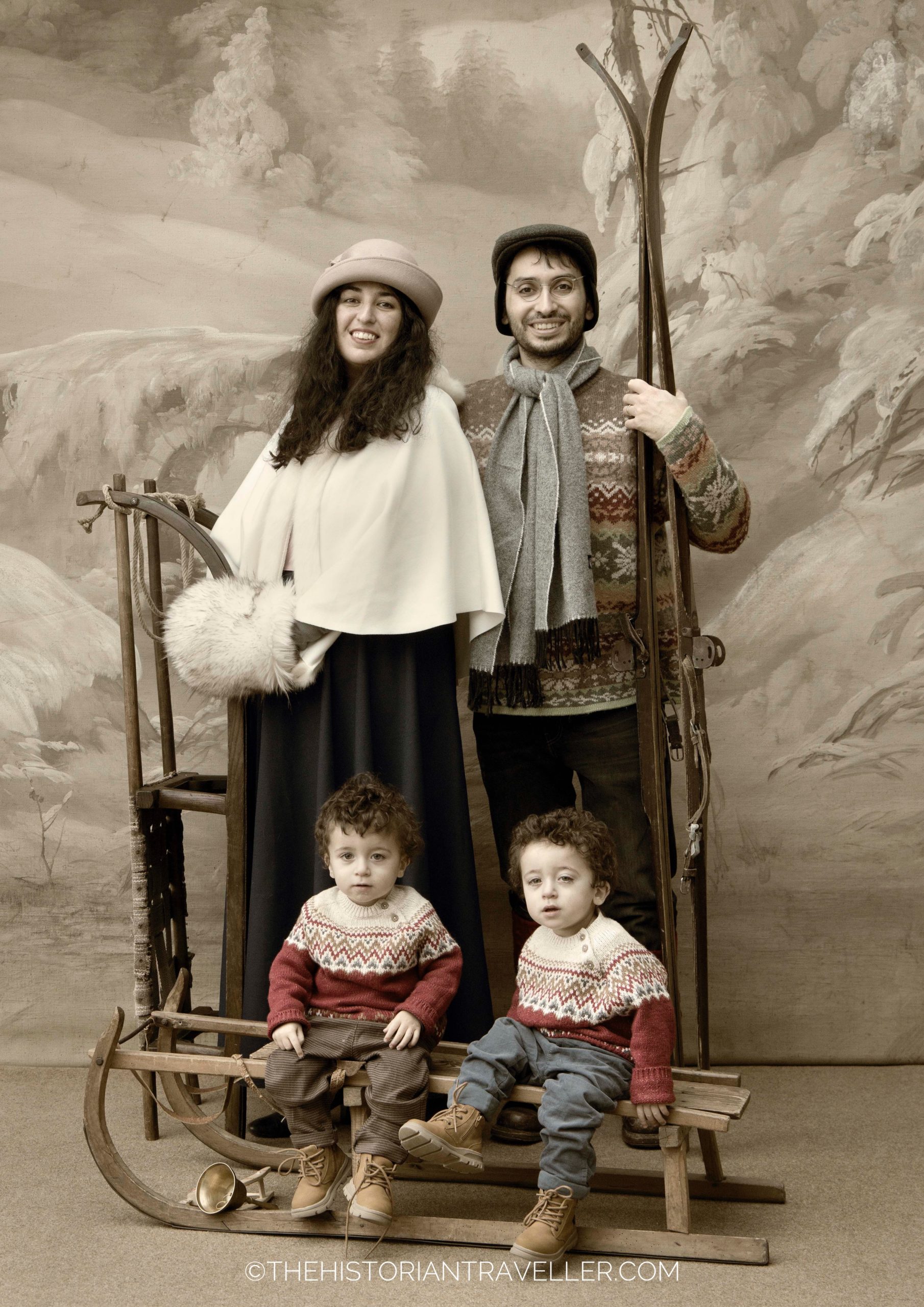
The experience was really fun and made us enjoying the museum even more! Moreover, the staff was really amazing. They dressed us with the perfect costumes and the photographer patiently shoot numerous pictures until the we got the nicest one. In fact, the two little ones didn’t like much to stay in pose and started running (and crying) all around the studio. After the photo-shoot, you can have your photos printed (you will receive them in two weeks) or sent via email (jpg. format).
I also appreciated we’ve been left the studio for some time to shoot our own pictures that came out really amazing!
How do I have to book my own photo-shoot in period costumes?
Your visit to the Museum Fotoatelier Seidel doesn’t come with the photo-shoot included. This has to be booked separately and well in advance by calling at +420 736 503 871 or sending an email to info@seidel.cz. An updated price list can be found here.
Practical Information
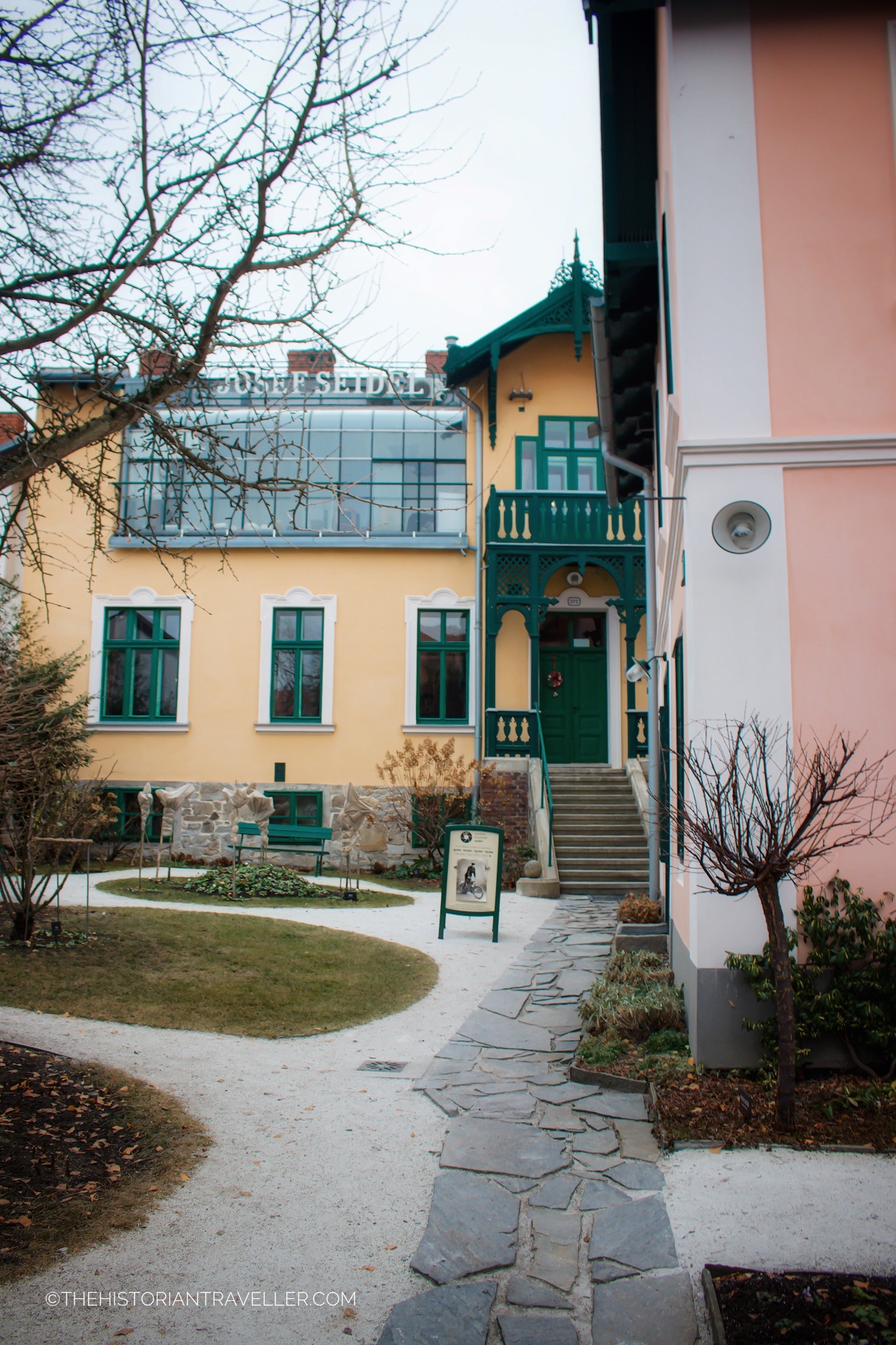
Opening times: The Museum is open from Tuesday to Sunday 09:00 to 12:00, 13:00 to 17:00
Fees: Adults 120 CZK
Accessibility: The museum is not barrier free
Address: Museum Fotoatelier Seidel – Linecka 272, 381 01 – Cesky Krumlov
Email: info@seidel.cz
Website: http://www.seidel.cz/cz/museum_fotoatelier_seidel_cesky_krumlov/
Explore one of the largest Castles in Central Europe
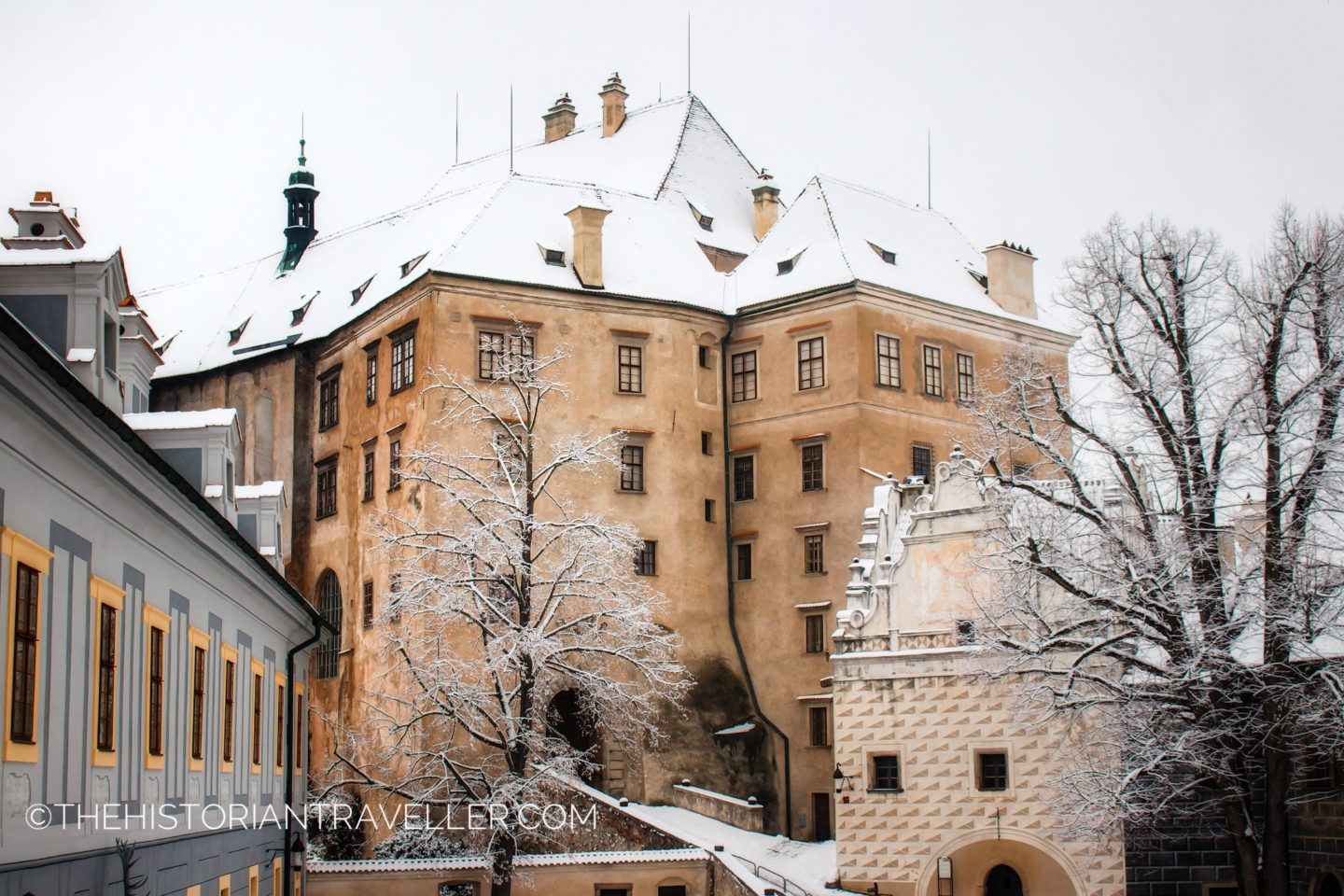
While walking around in Český Krumlov it’s impossible to not see the imposing castle. This dominates the town from its rocky hill like a fairytale postcard. The Český Krumlov Castle is one of the largest castles of Central Europe. Indeed, it was built and expanded for more than five centuries! It’s construction dates back to 13th century but additional sections and renovations were done until the 19th century.
Today, the castle includes a 86 mt tower, 5 courtyards and 41 separate palaces. Moreover, it features several outbuildings, a baroque theatre and a 12-hectare ornamental castle garden.
Visiting the whole structure in one day is not impossible. However, it’s quite challenging, especially if you want to take it slowly. So, if you want an extensive tour of the structure, you have to plan your visit accordingly. Of course, not all the 41 different palaces are accessible to visitors. Below, you’ll find more information about what you can visit.
A little history of the Český Krumlov Castle
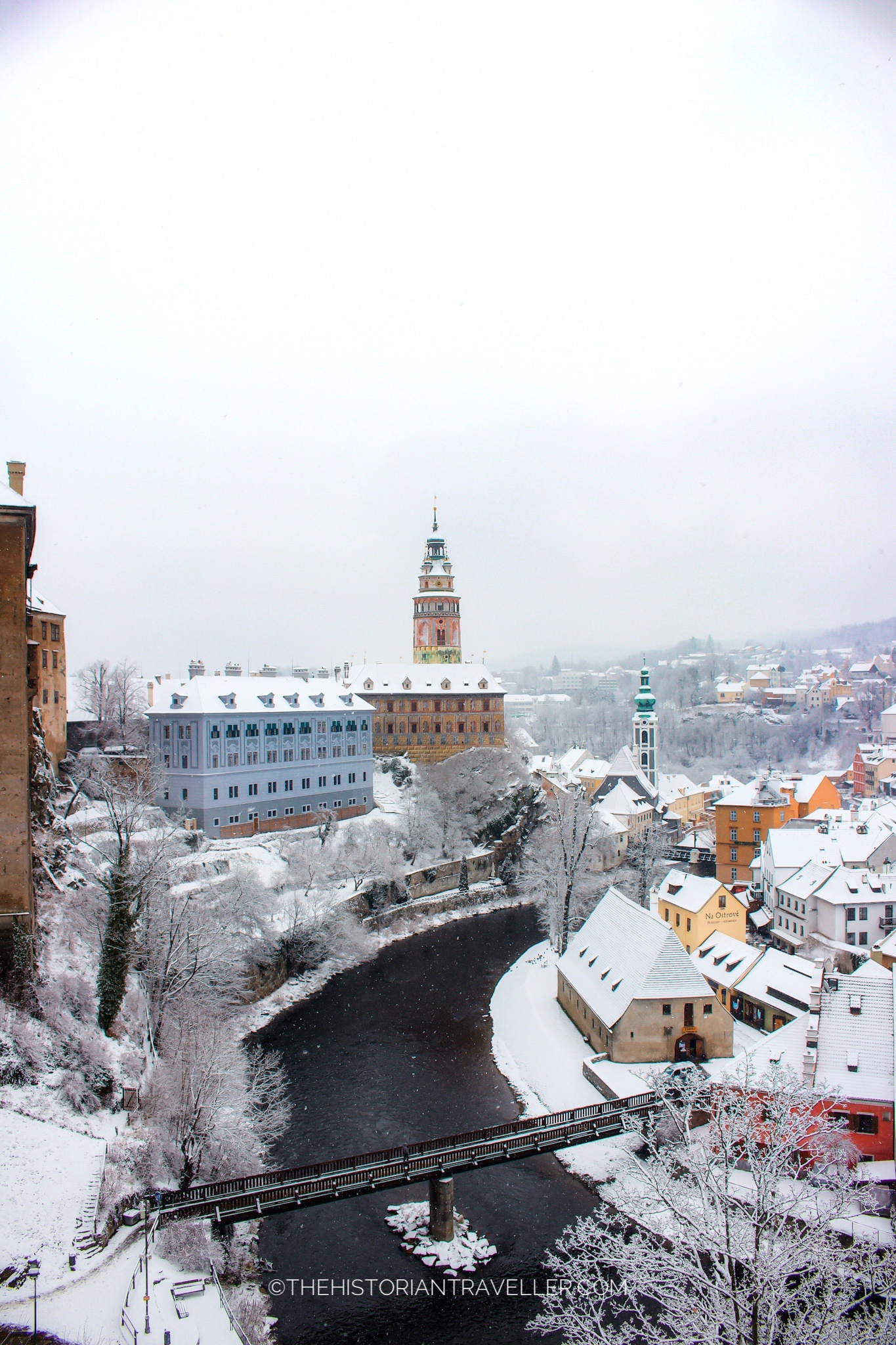
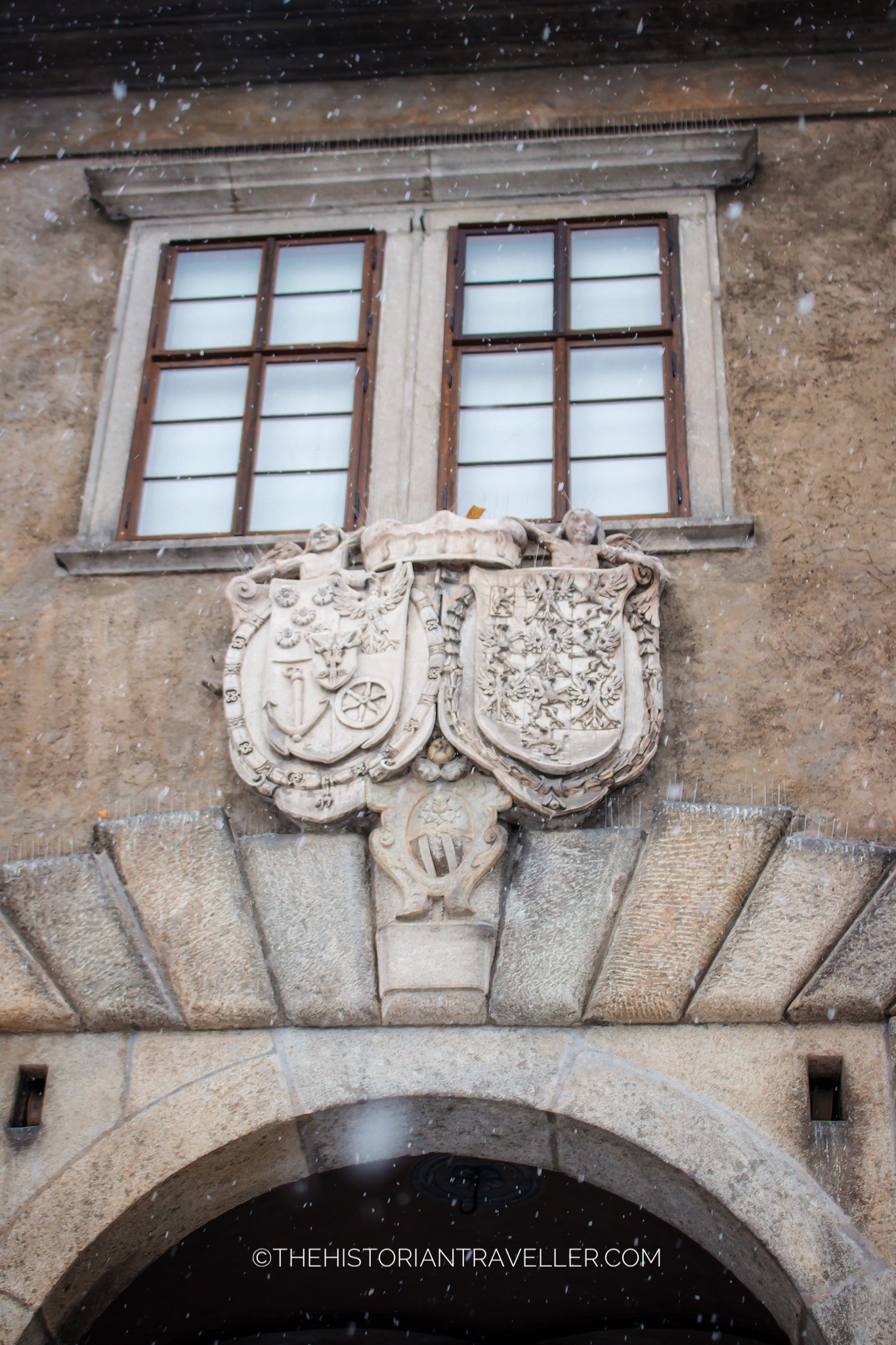
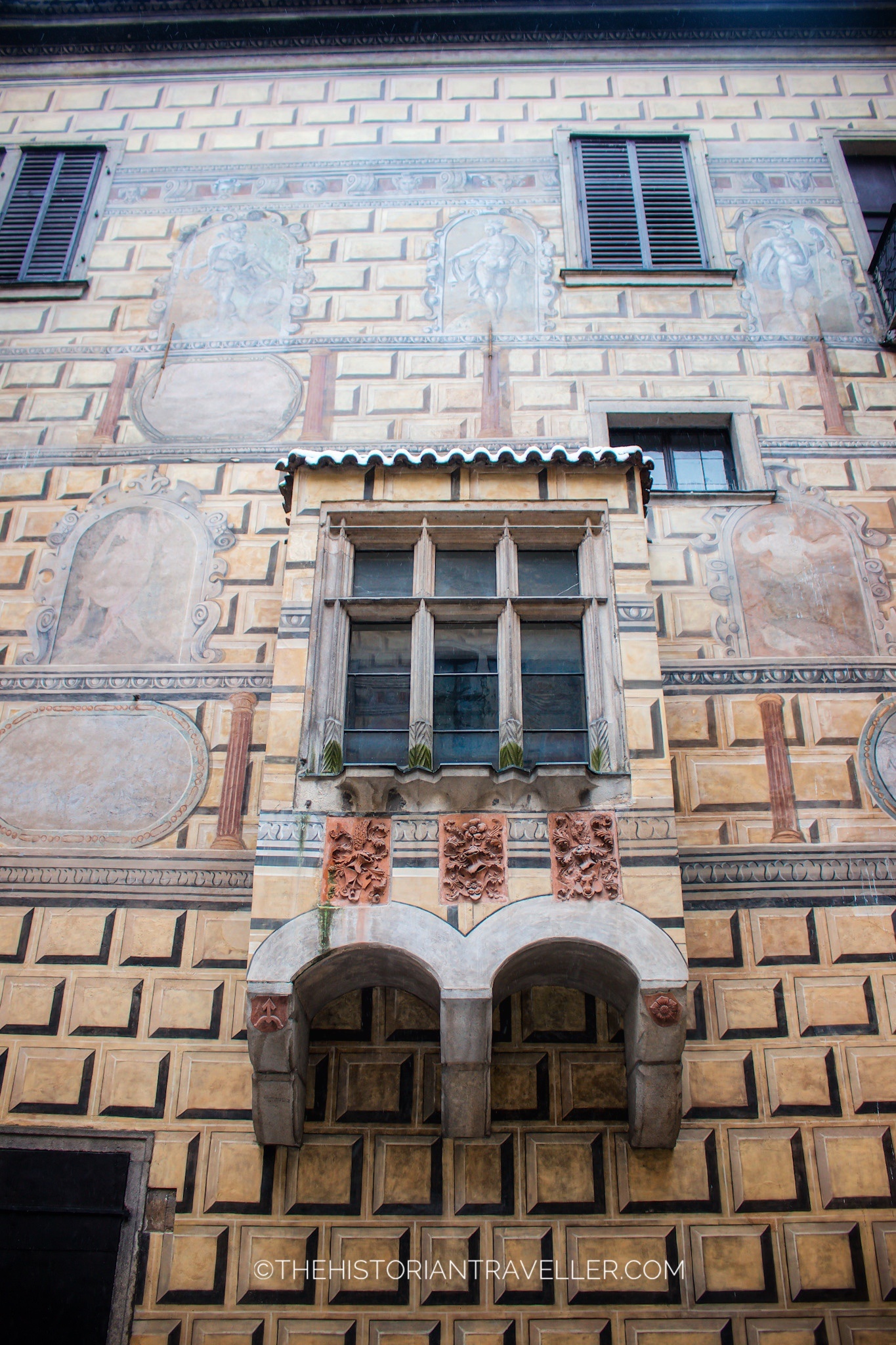
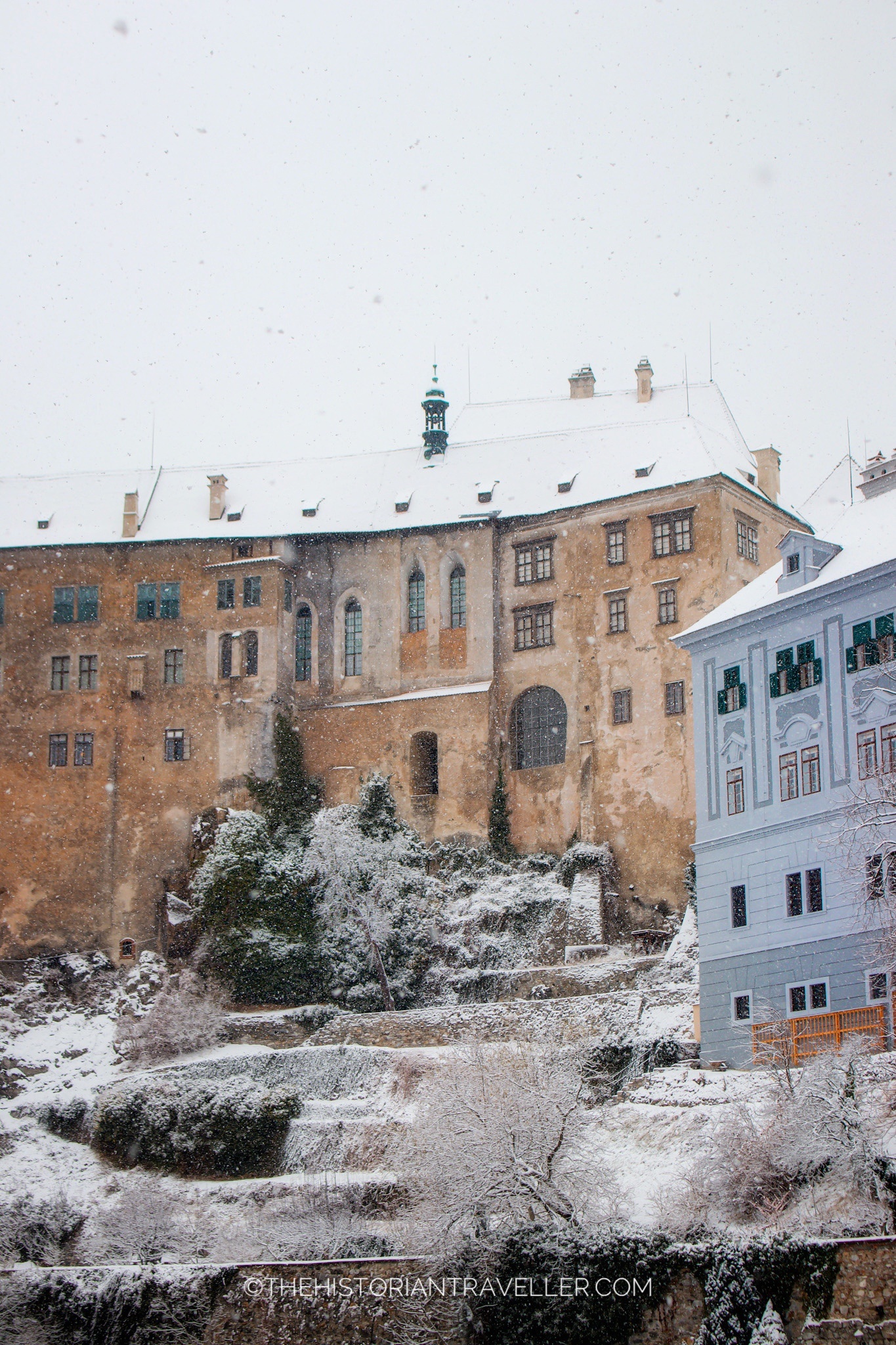
The rocky area of the the Český Krumlov Castle was inhabited since the Bronze Age. Nevertheless, only in the middle ages, precisely around 1250, the structure of a Gothic Castle appeared over the promontory. This was established by the Lords of Krumlov who hold it until 1302. After this date, the last member of the family died out and the castle passed onto the Rosenberg family. The Rosembergs made of Český Krumlov their official residence and inhabited the castle until 1602.
The Renaissance residence
During these 300 years the castle became a luxurious Renaissance residence. In fact, it was enriched with its most important architecture: the Rosenberg residence. In 1602, the last member of the Rosenberg family, Petr Vok, found himself in a bad economic position. Unable to administer this immense and costly property, he sold the castle and estate to the Emperor Rudolf II. Twenty years later, the Emperor Ferdinand II assigned the property of the castle and estates to the Eggenbergs.
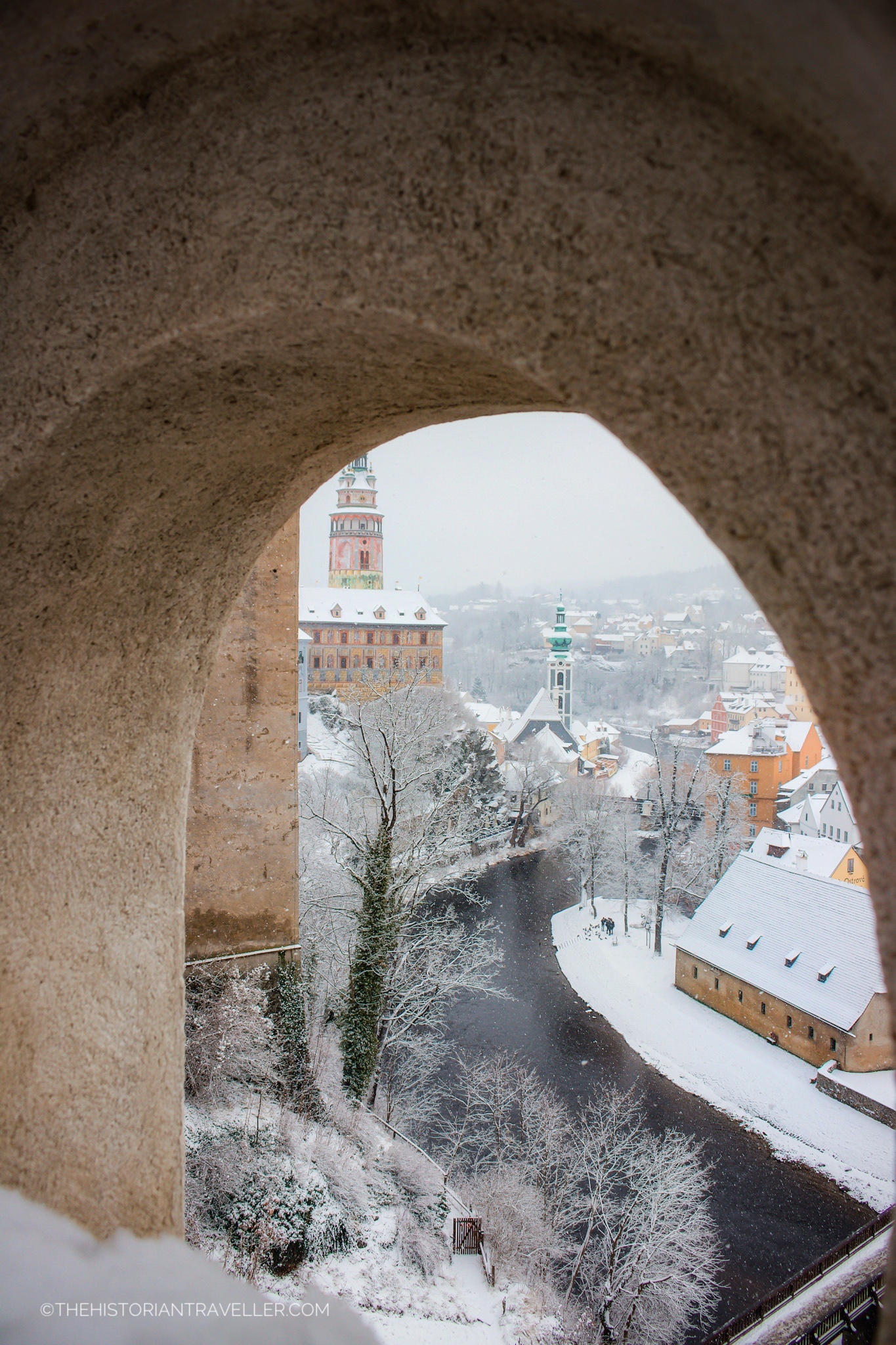
The Eggenberg family, particularly Johann Christian I, started the Baroque reconstruction of the castle. Johann Christian I was responsible for some of the most important addictions of the castle like the Castle Gardens and a theatre (that later would become the Baroque Theatre). In 1719, the last member of the Eggenberg family died without successor. The castle was then inherited by the Schwarzenberg. This family, particularly Joseph Adam zu Schwarzenberg, was passionate of the arts and lovers of the Viennese culture. During this period, (1765-1767), the old theatre in the Deer Hall was rebuilt into a new independent building that became the Baroque Theatre.
The golden age of the castle ended in 1782. In fact, the castle ceased to be the main residence of the Schwarzenberg family and was no longer inhabited. In 1947, the Castle and Estate property were transferred to the Czech provincial properties (becoming state owned in 1950).
Český Krumlov Castle guide- Things to see
The Český Krumlov castle is immense and not all of its estate is open to public. However, there are some notable sights you should plan to visit on your tour. Read below to know more!
The Český Krumlov Castle Tower
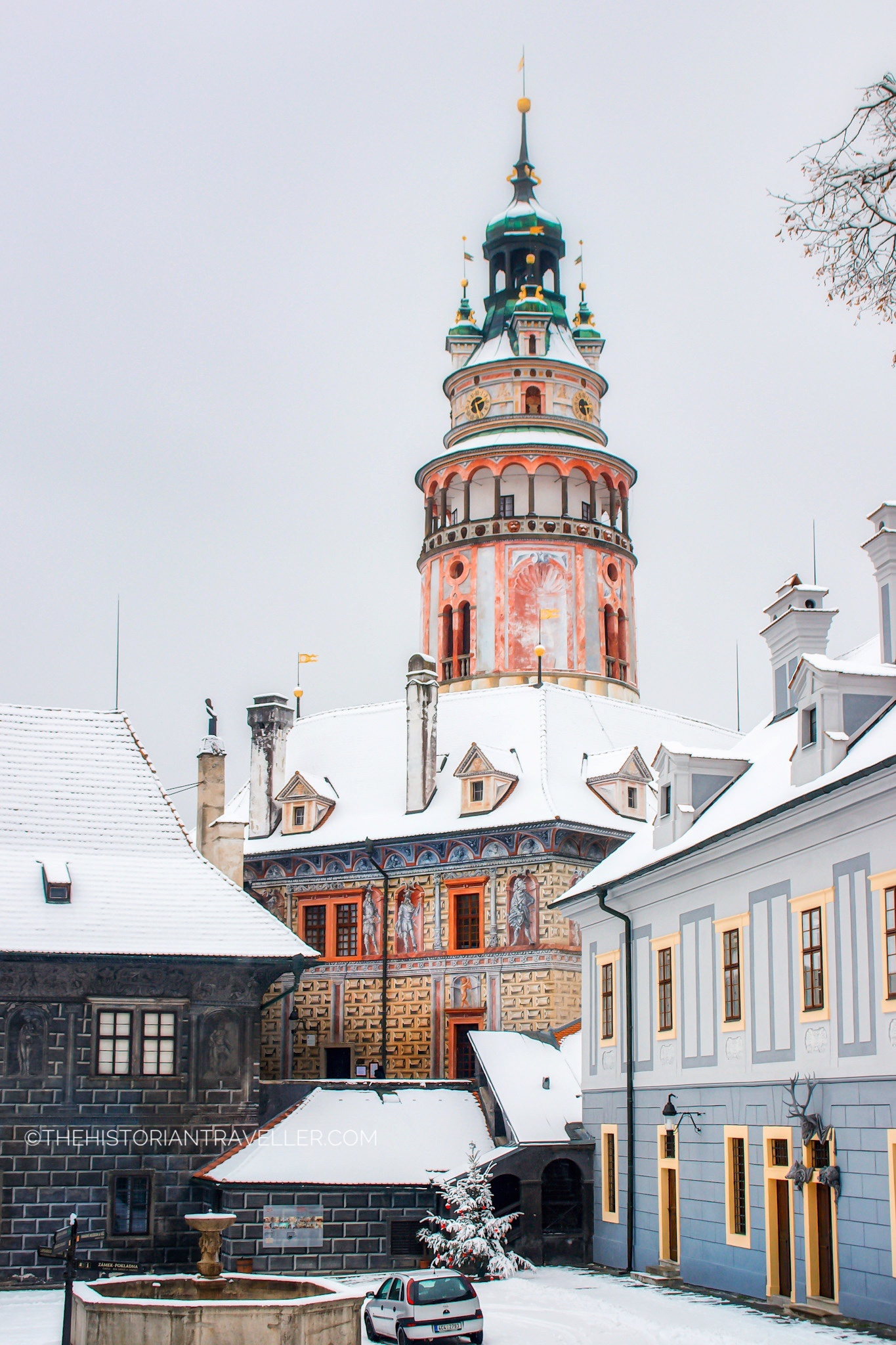
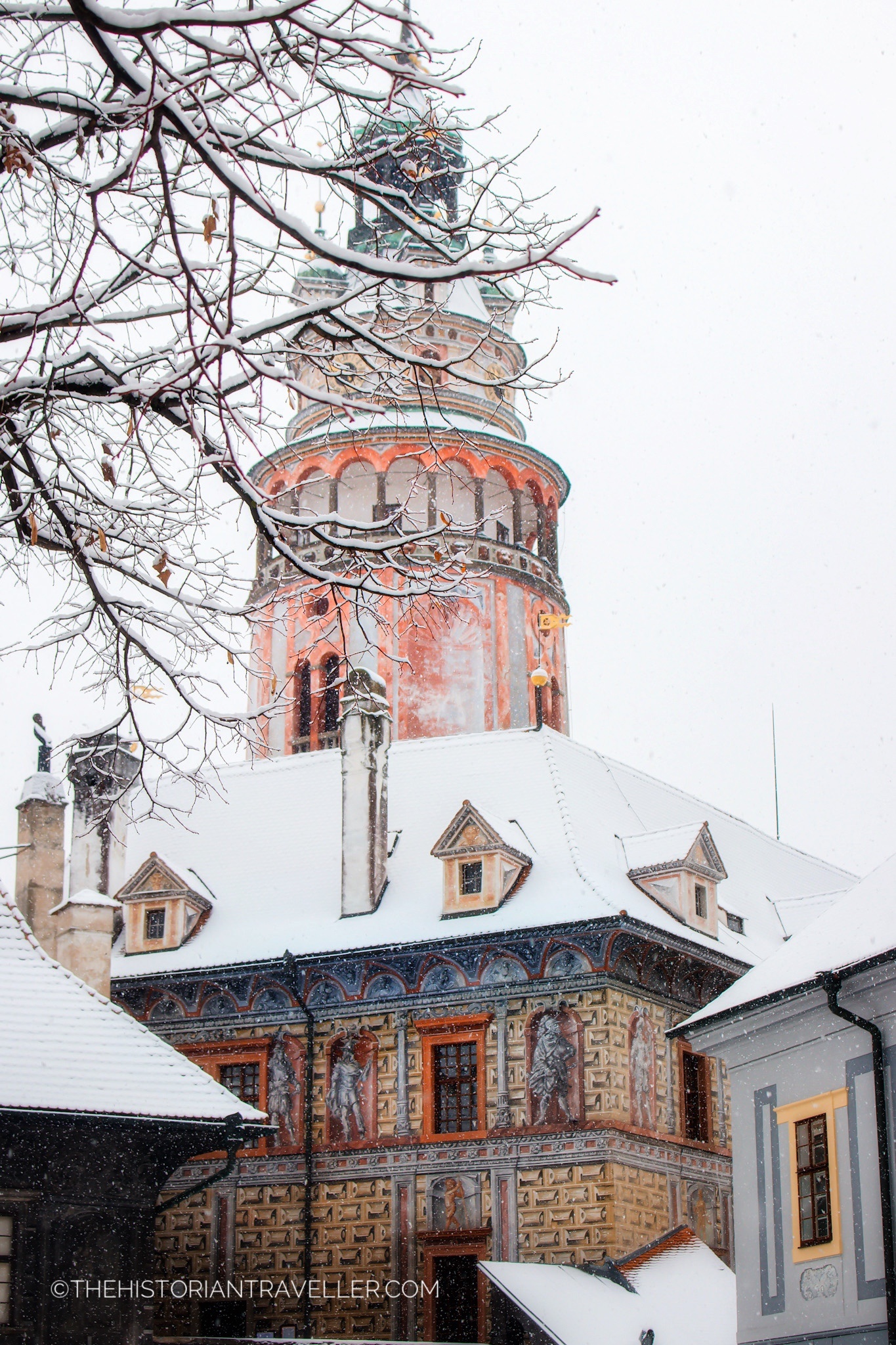
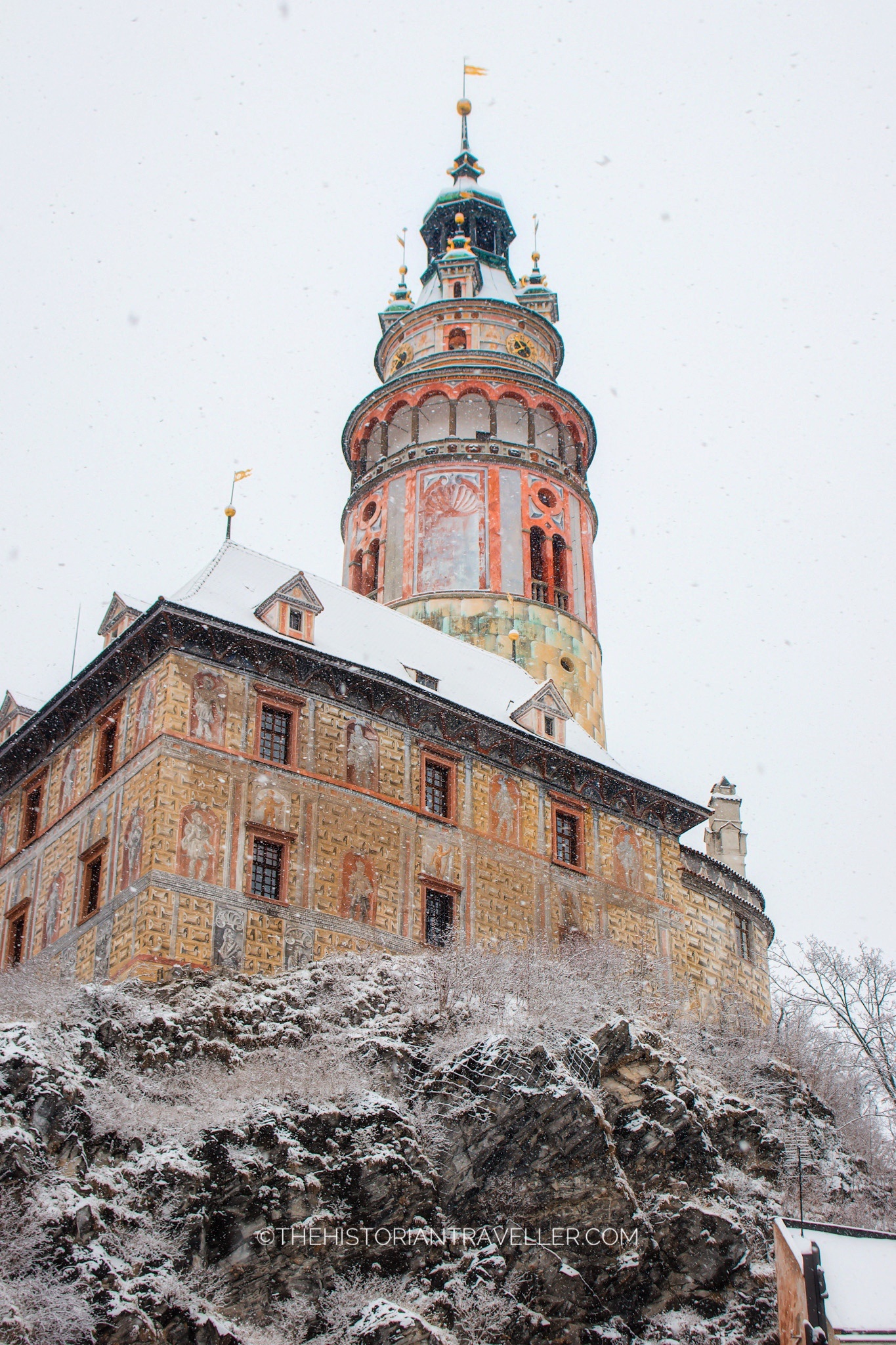
The Castle Tower, located between the 1st and 2nd courtyards, is one of the most notable sights of Český Krumlov and you can see it from almost every part of the town. Moreover, this is also one of the oldest part of the Castle. In fact, its first construction dates back to the 13th century. The first two floor of the tower still preserve their Gothic origin (13th-14th centuries). Moreover, a perfectly-preserved Renaissance facade and upper floors with all the original 16th-century ceilings are the most striking features of the whole building. The tower height is of 86 mt from the Vltava river and it includes 4 bells, 19 Tuscan colums, 162 steps and a six-storey architecture with a to-floor arcade gallery realised in 1581.
All the tower decoration were made by the Rosemberg’s painter Bartoloměj Beránek in 1590.
I was supposed to climb the tower on my visit but I was affected by different adverse circumstances. First, the day before Alessio injured his back on the train while grabbing both babies. Second, it was snowing very heavily that day and we left the twins on their strollers with the snow /rain cover. Third, the lady at the ticket counter acted like Gandalf and told me “you shall not pass” with the babies (because it was unsafe/steep for them on the tower).
I climbed different towers with them on my shoulders (including the steep Gothic tower of Evora) but it was always safe to do it and I wouldn’t risk otherwise. So, destiny was against me that day and I remained out of the tower like the Rapunzel’s Flynn Rider. I will come back and climb those stairs I promise!
The Cloak Bridge

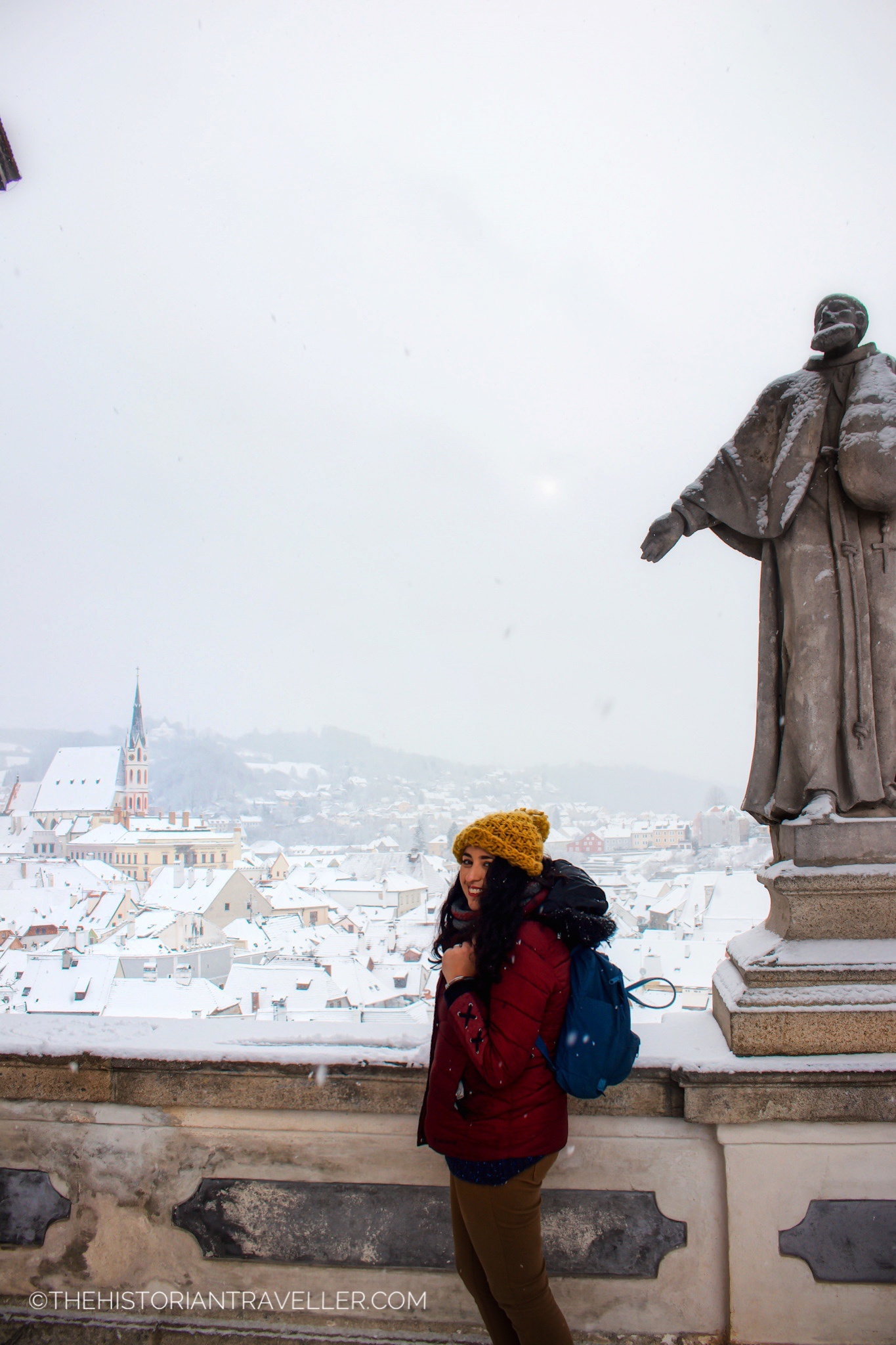

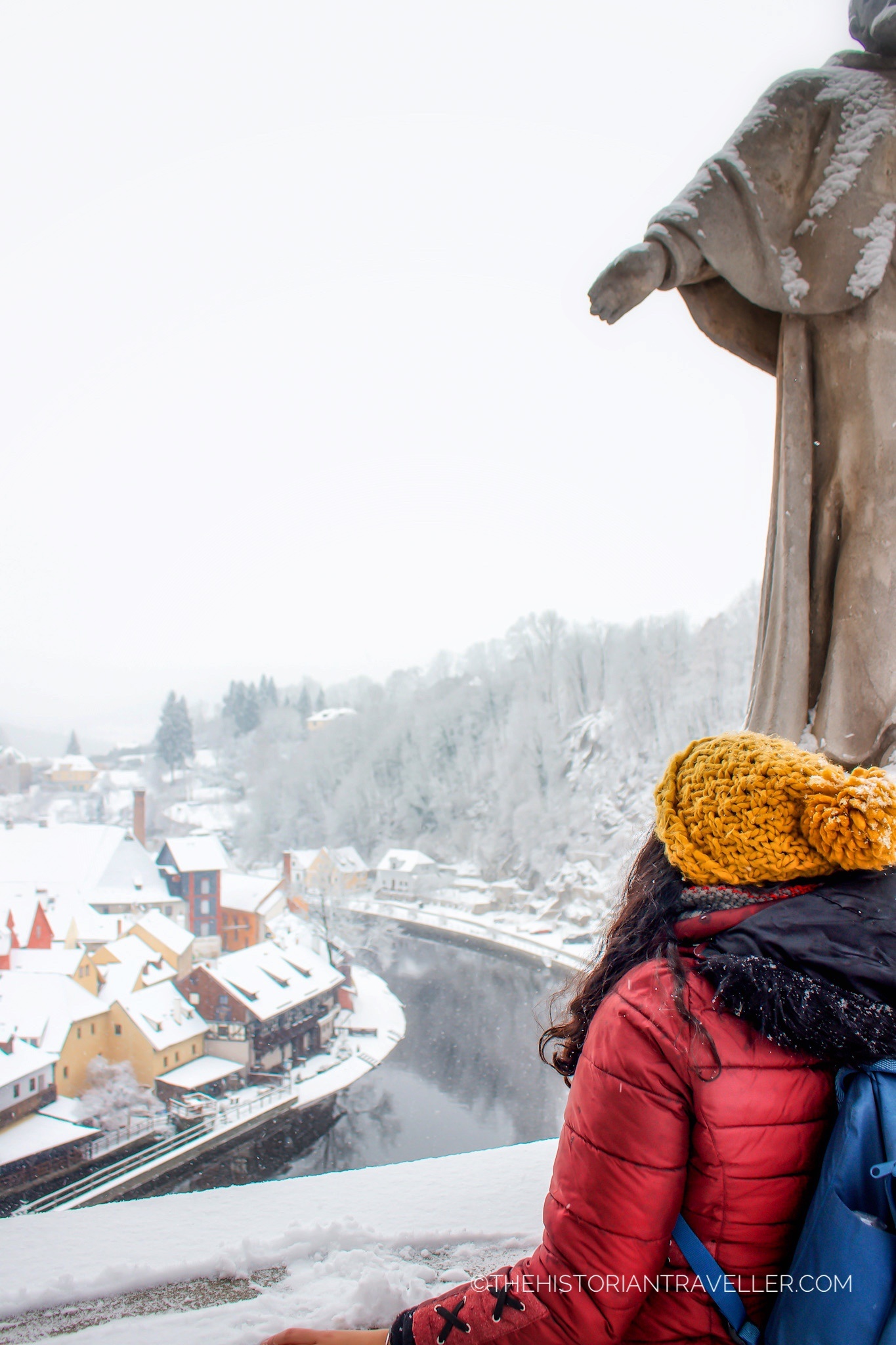
The Cloak Bridge is one of those places that catch you with great surprise for its beauty. The name comes from the old fortifications that used to protect the castle. It’s construction dates back to the 15th century when it was entirely made of wood. However, during the 16th century, it was renovated according to the most fashionable Italian inspiration. In fact, it was inspired by the covered bridges of Florence, particularly by the “Corridoio Vasariano” built in 1565 by Cosimo I de Medici.
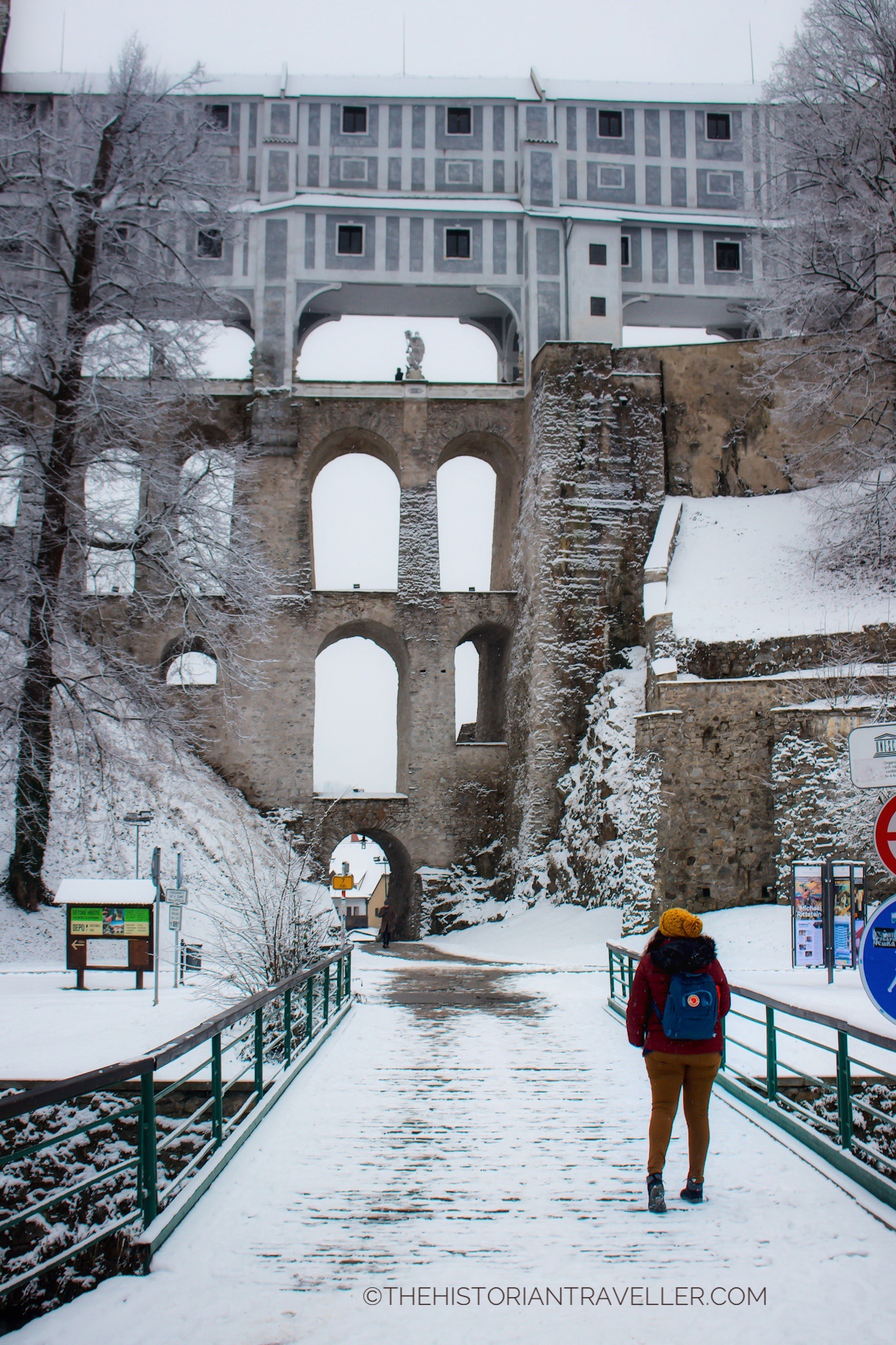
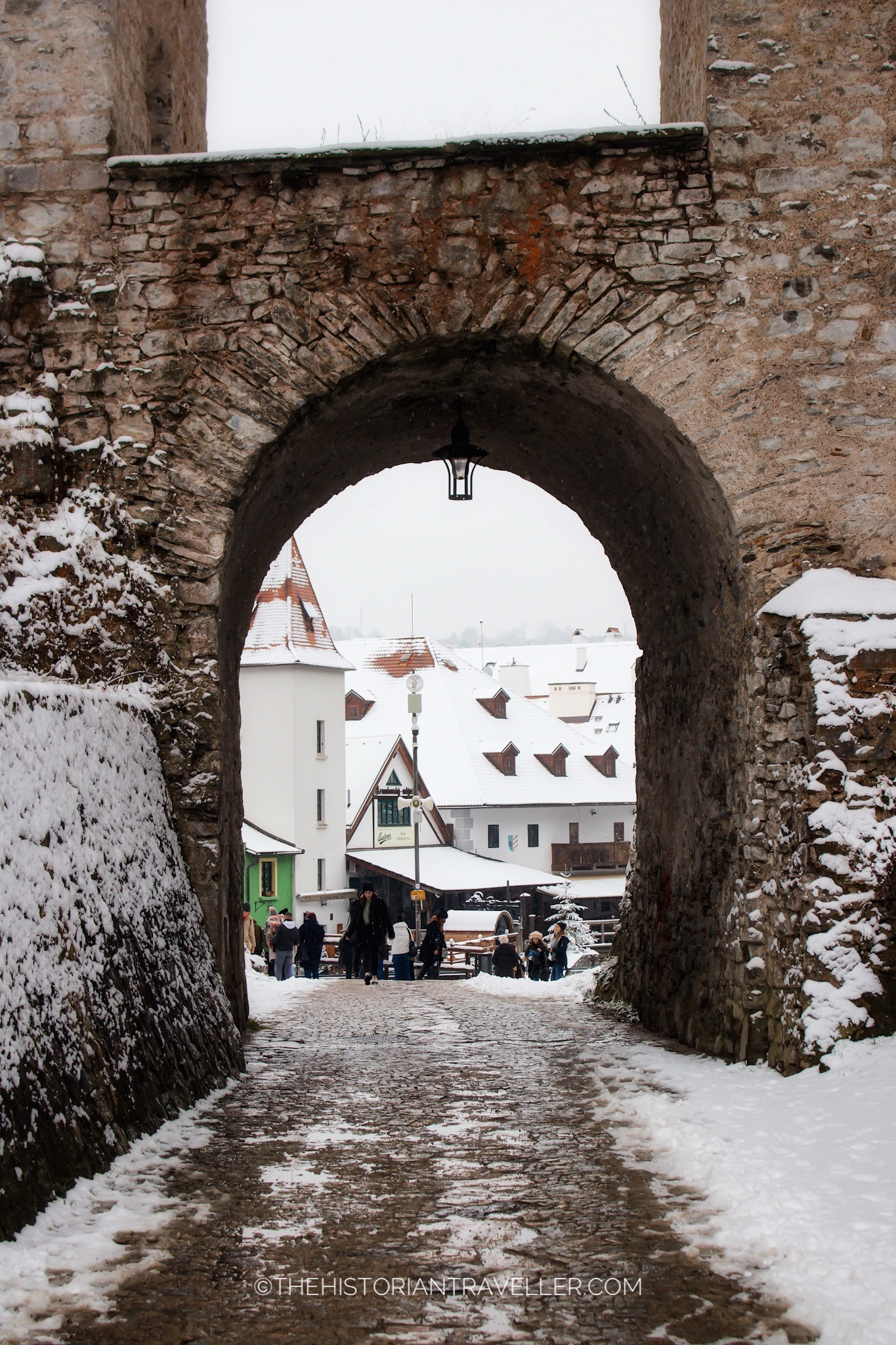
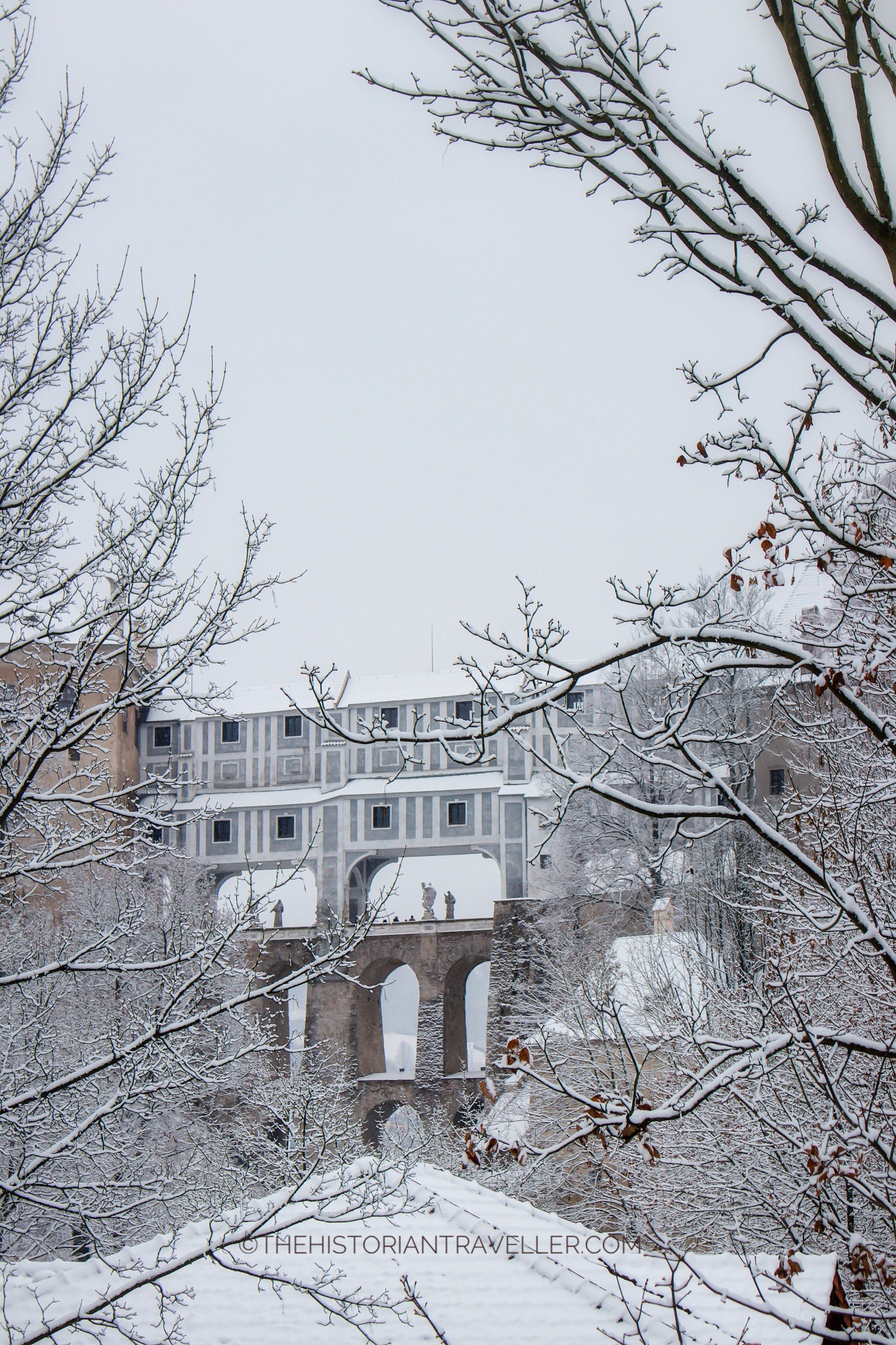
I would say that this place is appreciable from two different perspectives. The first is by coming from the IV courtyard. Indeed, the main scope of the bridge was that of connecting the IV and V courtyards. From this perspective, you can appreciate its Renaissance details and admire the view of the town. The second perspective is the one “below” the castle. This is appreciable coming from the Český Krumlov bus station. Here, you will see the immense structure of this bridge and its scale.
The V courtyard
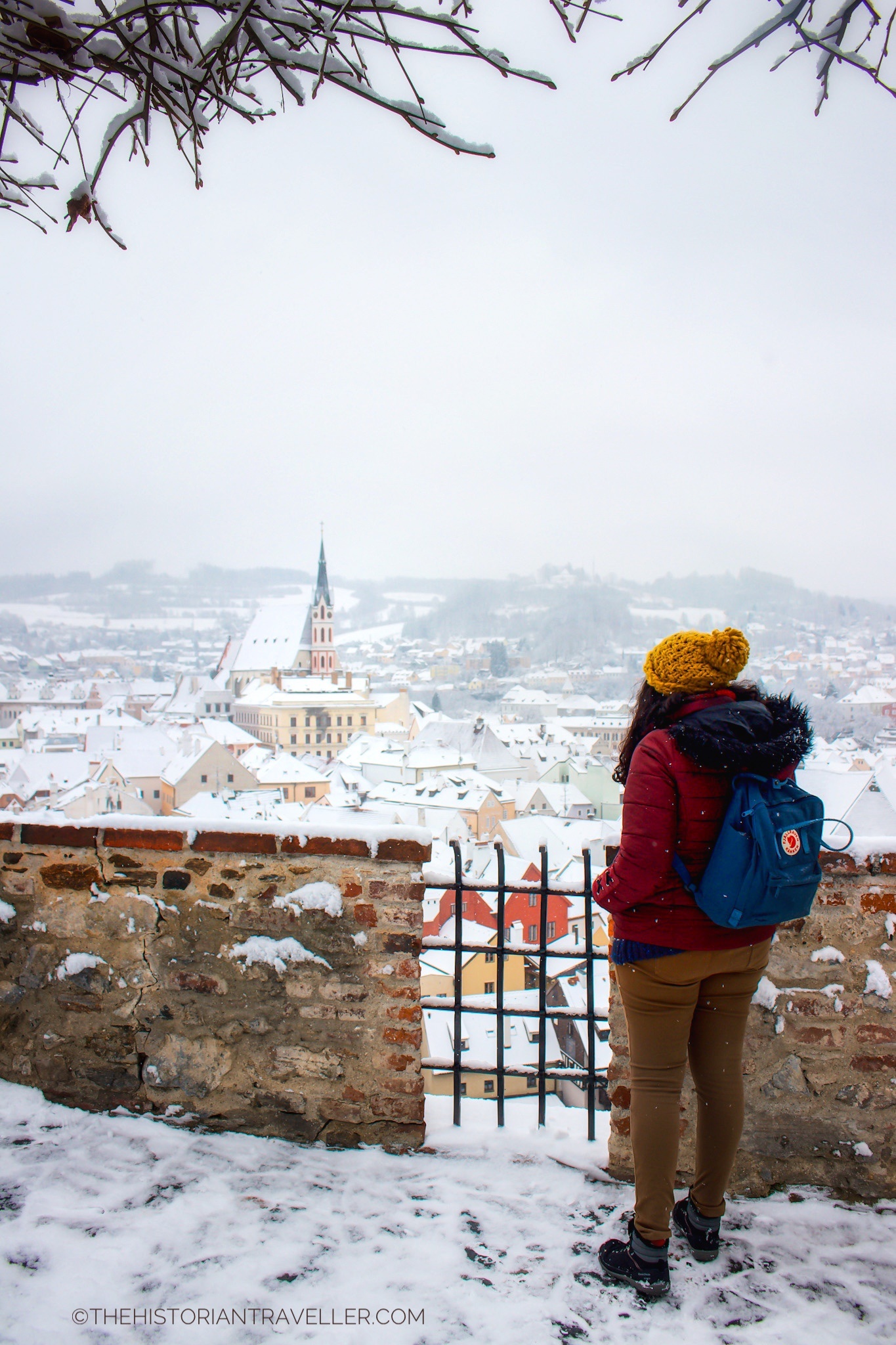
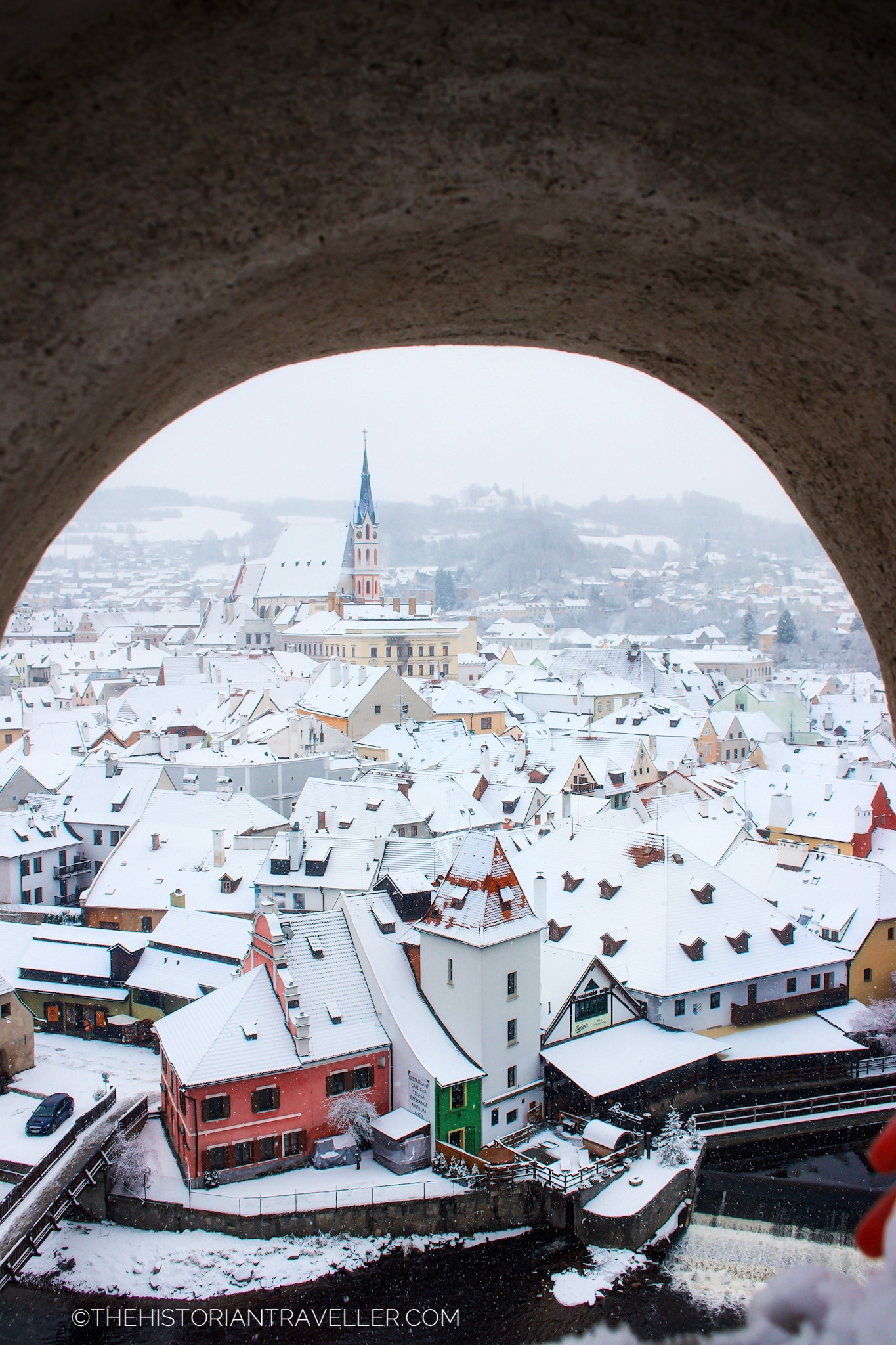
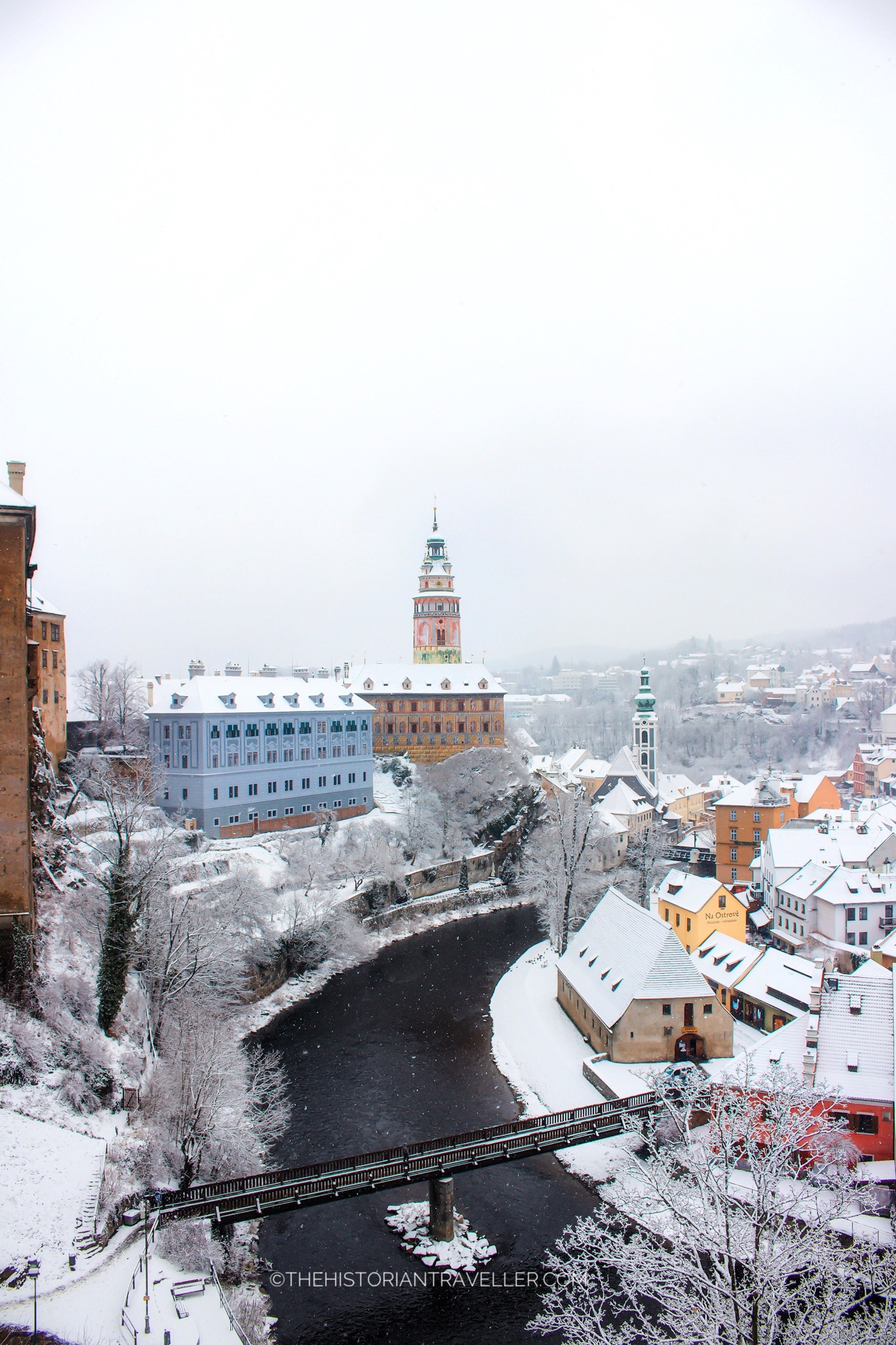
The V courtyard of the Castle is famous for being the location of the Baroque Theatre. However, in my opinion it’s also one of the best place where to take your pictures! In fact, there are various points where you can get stunning photographs of Český Krumlov. One of these is the little panoramic terrace before the iron gate.
Guided tours of the Castle
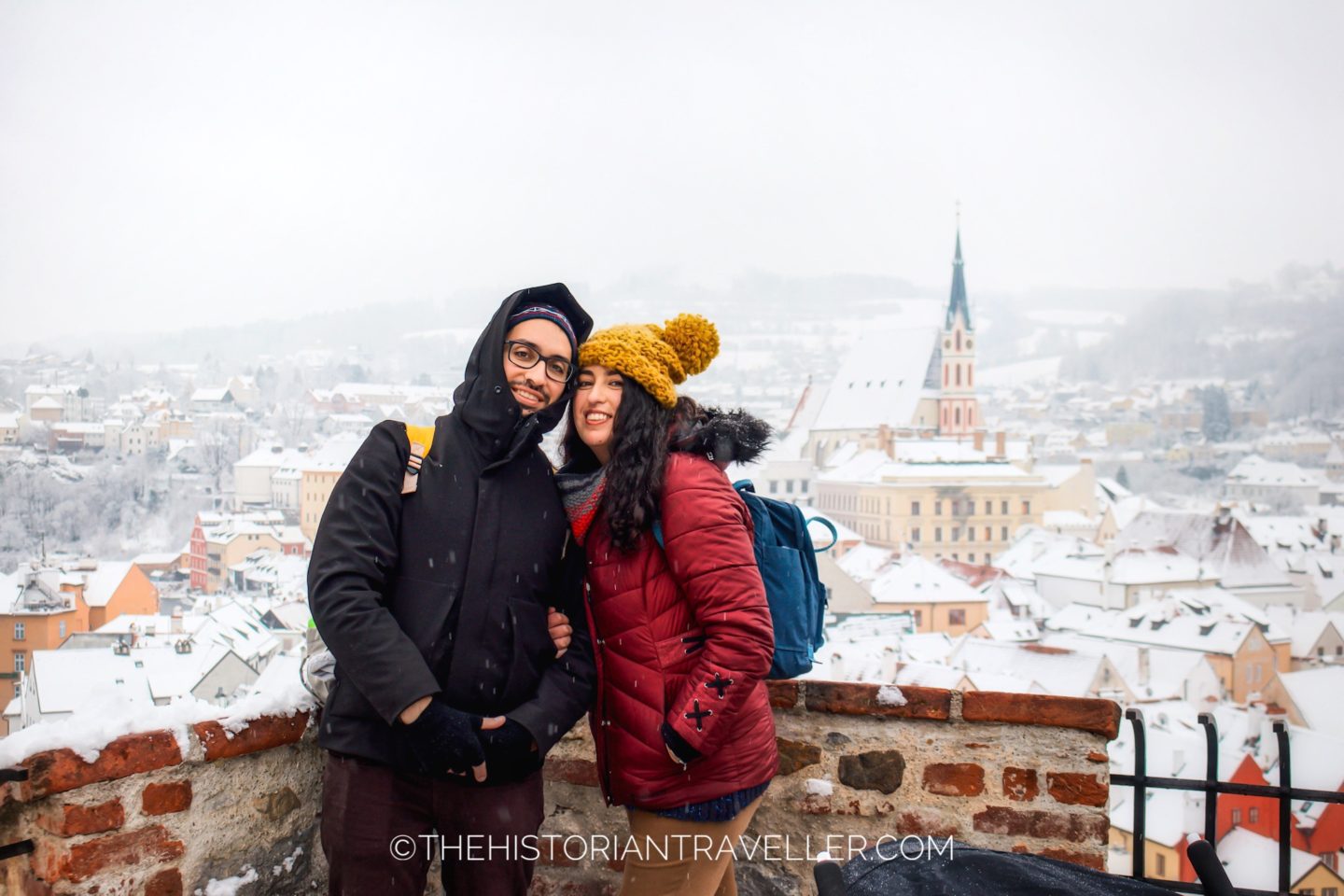
If you want to explore more than the castle grounds, guided tours of the various parts of the castle are available. There are two different types of tour. The Tour n. 1, encompasses a visit to the original Castle interiors from the Renaissance and Baroque periods including the beautiful Masquerade Hall. The Tour n. 2 is focused on the history of the Schwarzenberg family. Here you will visit their private apartments and the Schwarzenberg Portrait Gallery.
The Baroque Theatre is visitable on a separate tour and only in summer. Tickets go away very fast because each tour is limited to 10 people-only.
Practical information
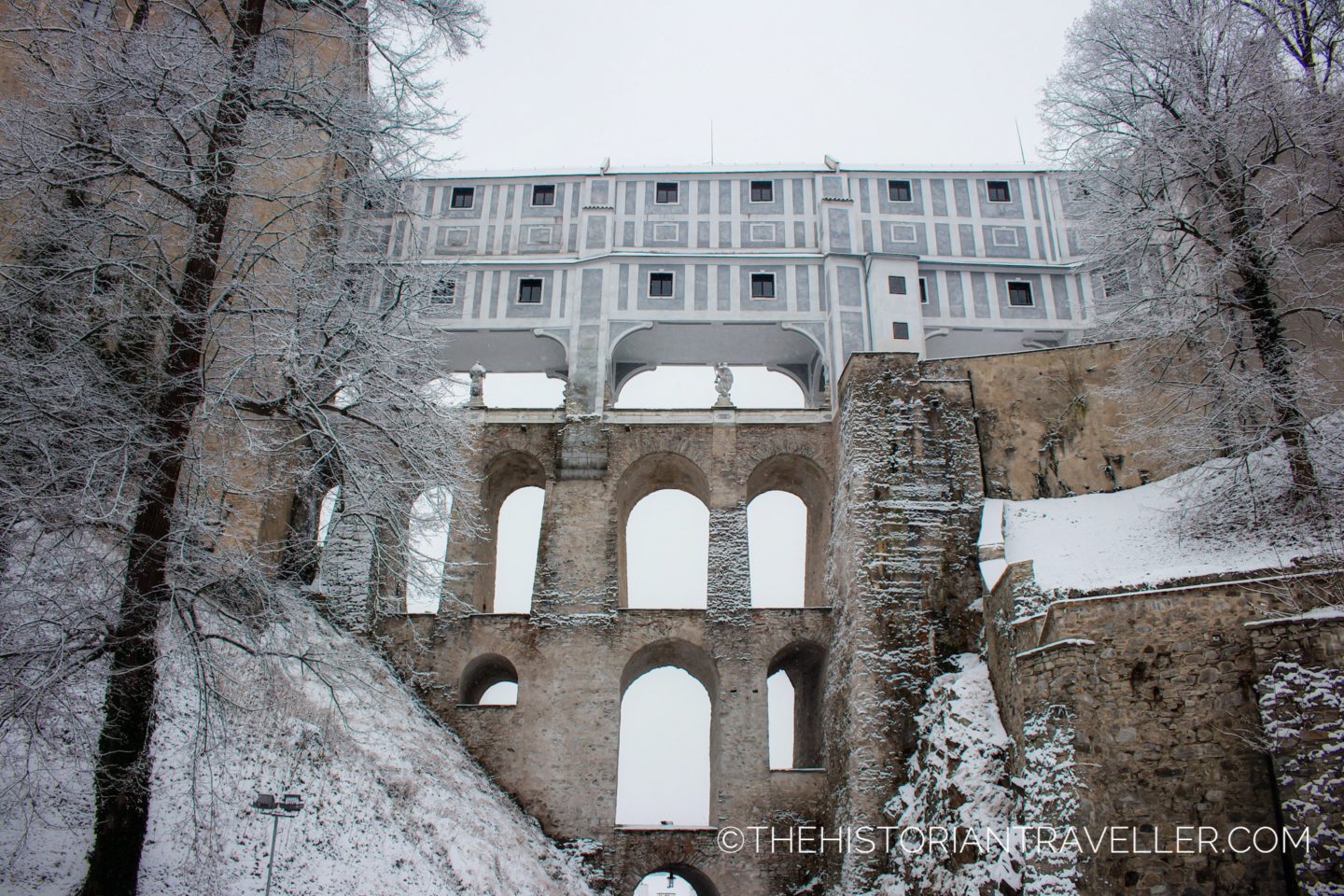
Opening hours: Guided tours of the Castle, Gardens and the Baroque Theatre are available only from May to October. The Castle Tower and Museum are open Mon-Sun from 9 am to 16 pm.
Admission prices: Baroque Theatre, 250 CZK; Guided Tour 1, 210 CZK; Guided Tour 2, 180 CZK; Castle Museum and Tower 150 CZK; Stables, 50 CZK; Garden, free.
Website: https://www.zamek-ceskykrumlov.cz/en/plan-your-visit/admission
Adventure on a night-walking tour of the town
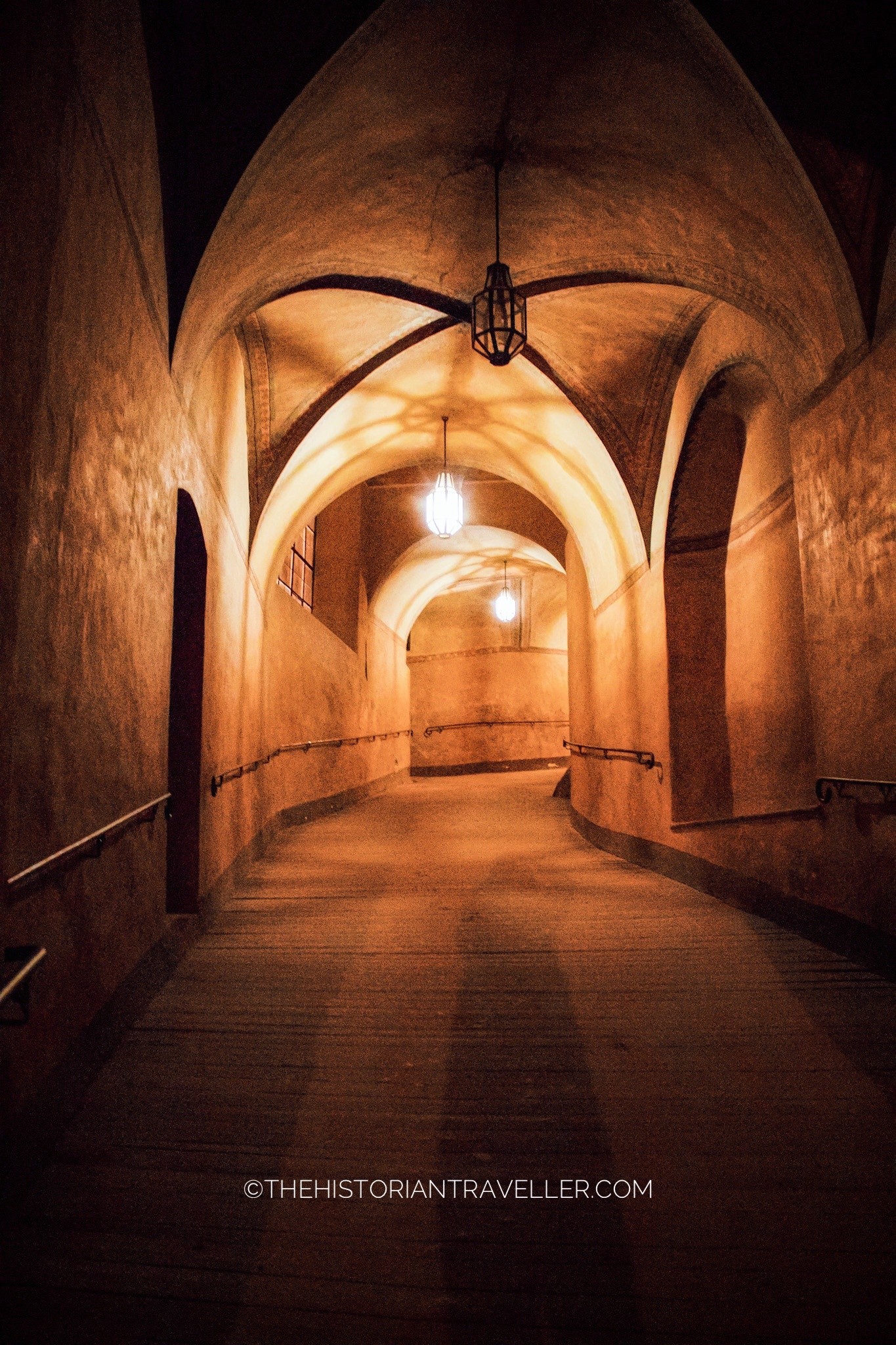
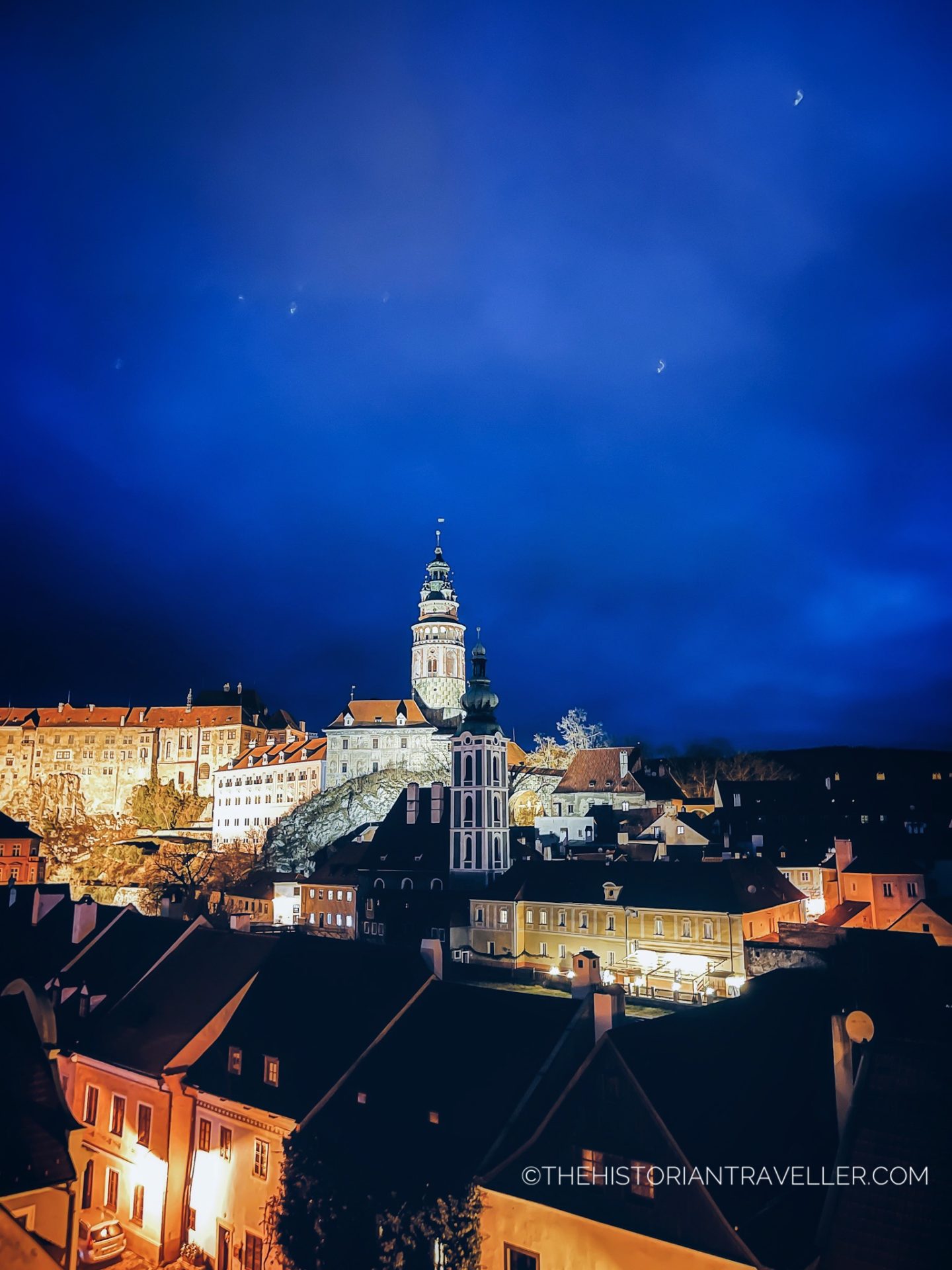
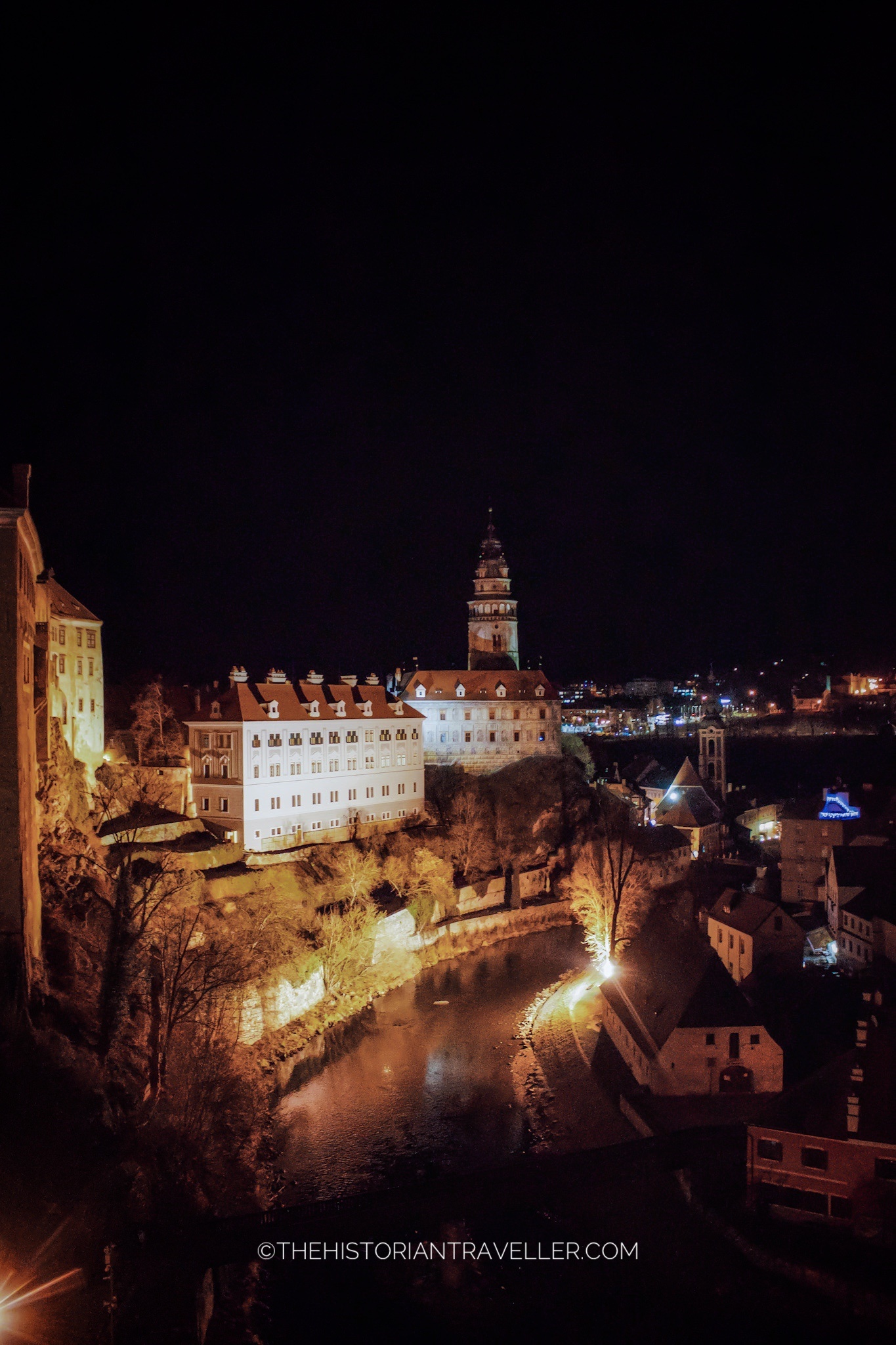
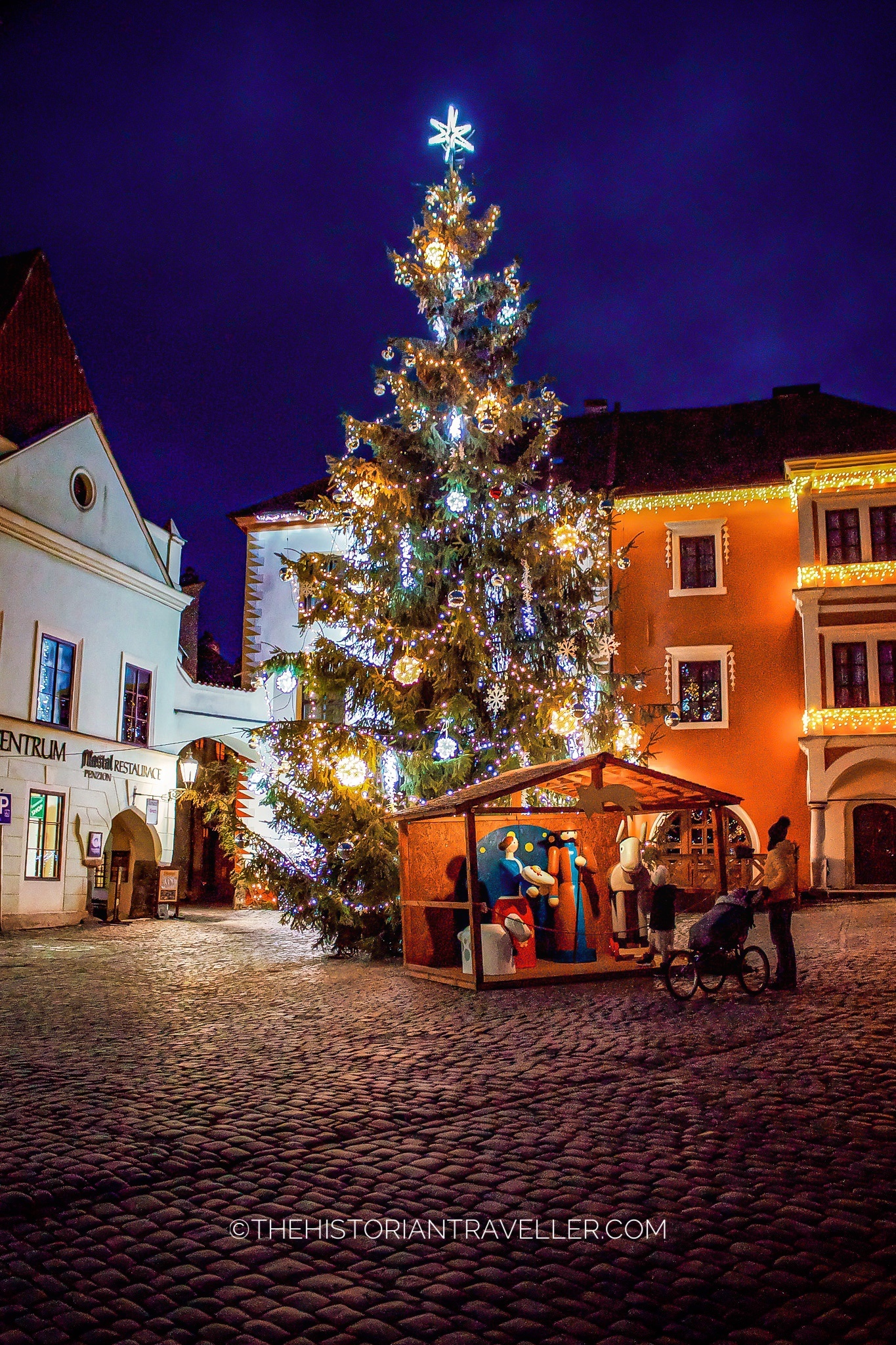
If you fancy something different, a night-walking tour of Český Krumlov is highly recommended. I went o a night walking tour with Wiseman Free Tours and I enjoyed see the city with a different light. Český Krumlov at night is really magical! Moreover, my guide Jan was very knowledgeable about the town and its secrets.
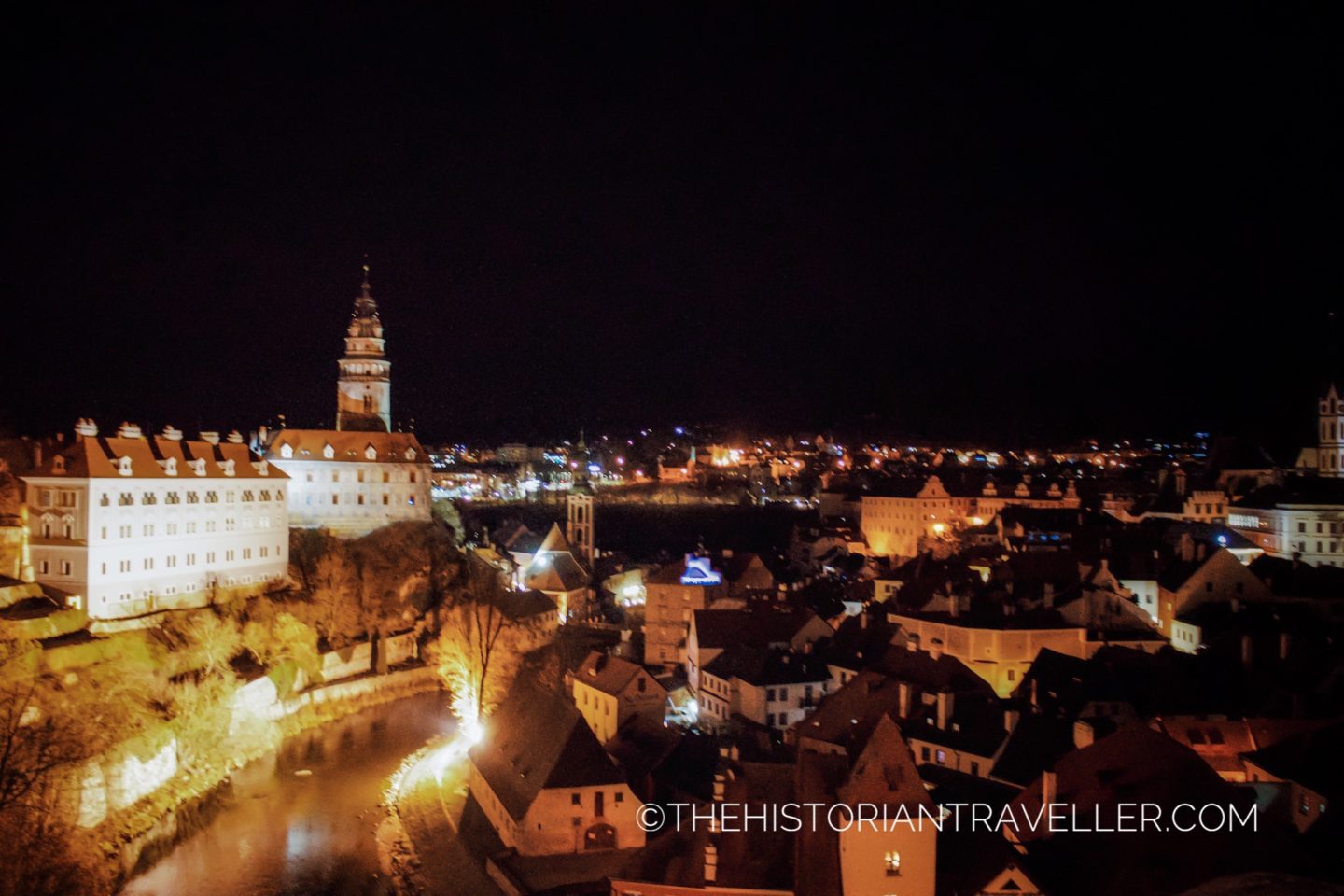
Night tours are not free because are private tours and you can book them throughout the website. They cost around €59 per person.
Have a taste of South Bohemian cuisine
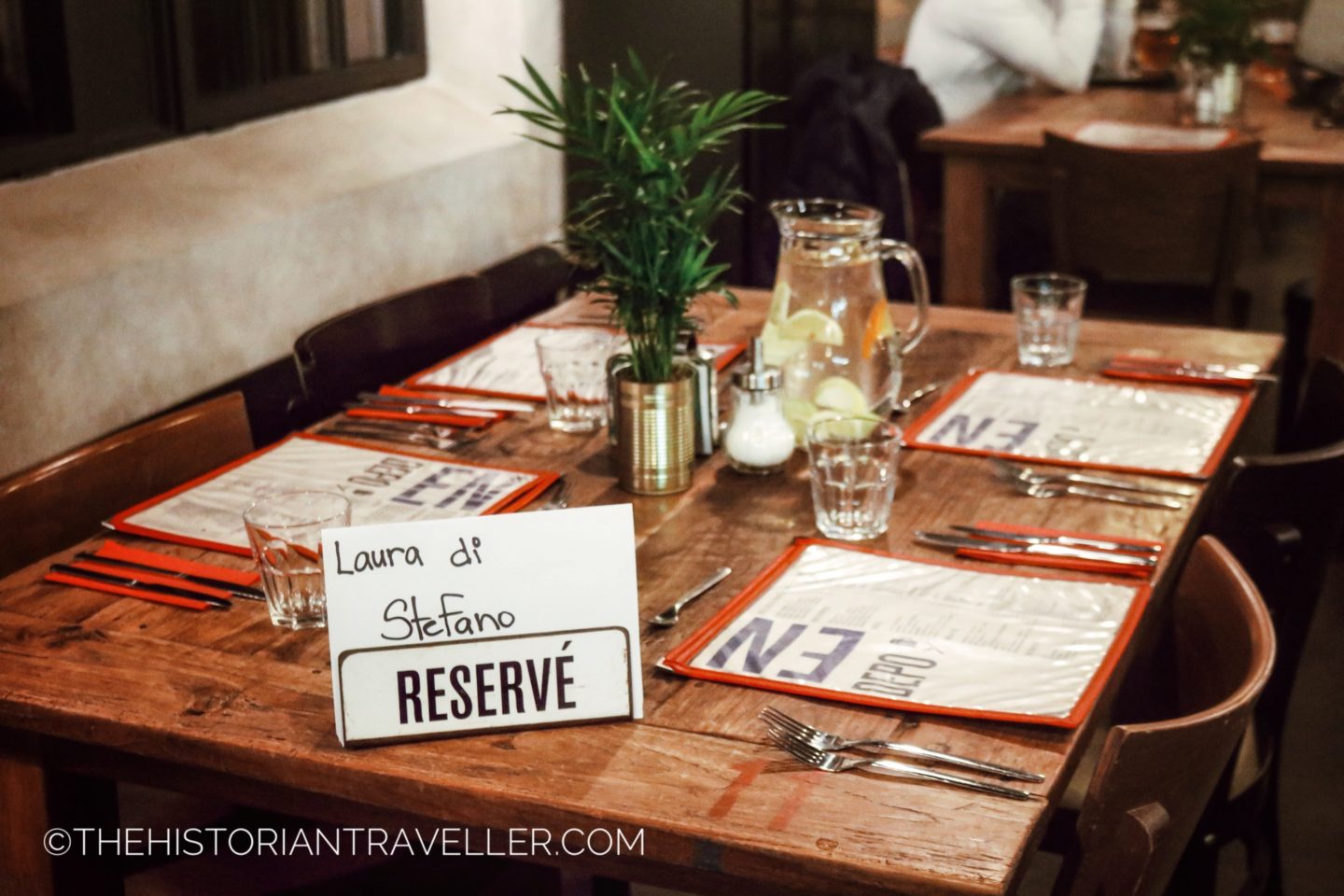
Everyone knows I am a foodie and I love to try new dishes. Therefore, I was very enthusiast of trying Czech cuisine and it didn’t disappoint at all. Despite being influenced by the surrounding countries (e.g. Austria and Germany), Czech cuisine has also its own distinctive flavours. Moreover, it has also its own way of presenting known central European dishes like the Schnitzel (řízek in Czech). South Bohemian cuisine is distinctive for its predominance of fish, particularly the carp, that is prepared in several different ways. Carp is served also for the Christmas Eve, you can read about it here. Particularly famous are the carp à la Třeboň or à la Blatná.
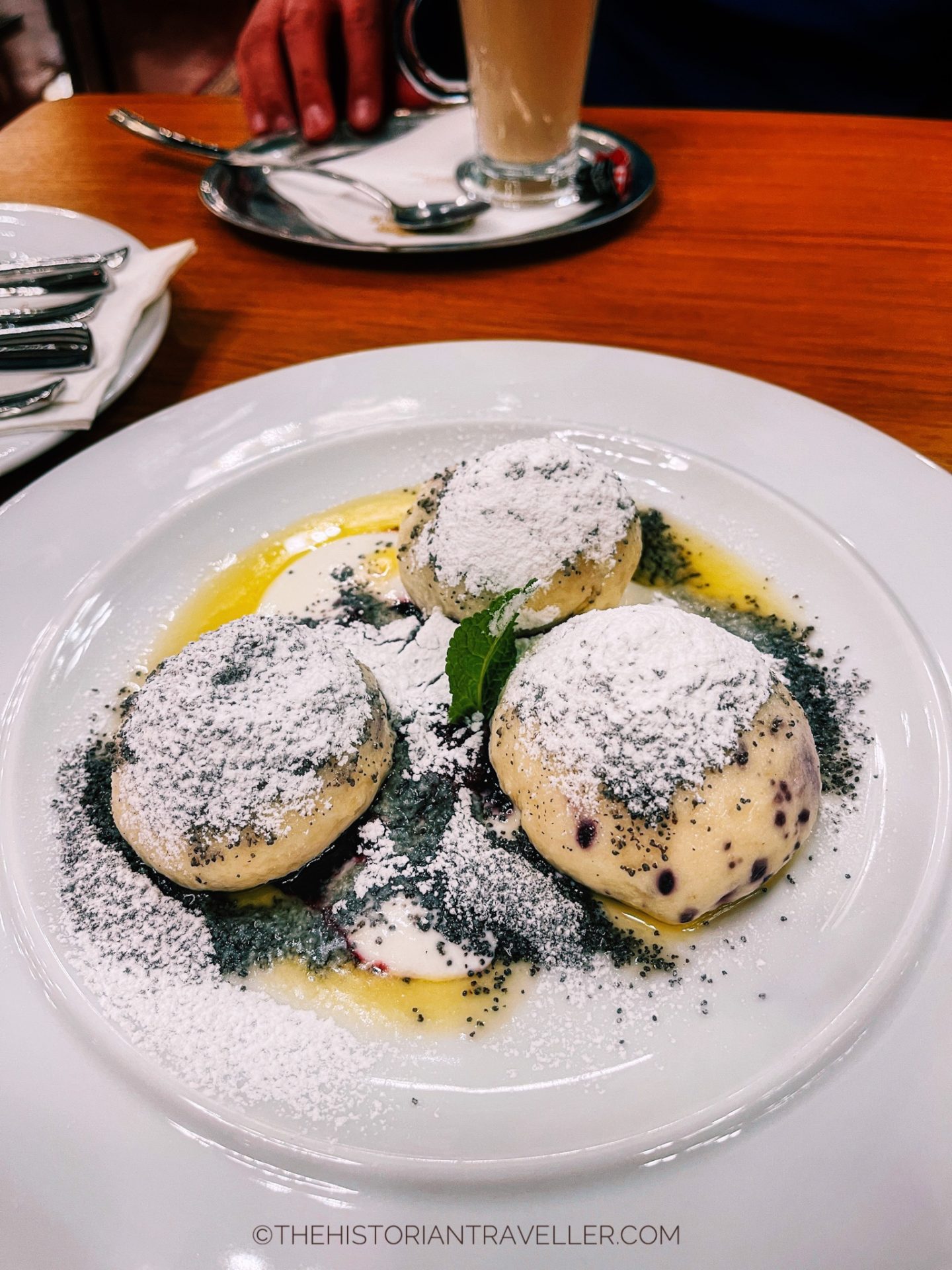
Because I don’t eat fish, I preferred to focus on other traditional dishes. In fact, South Bohemian cuisine is famous also for delicious specialities made of mushrooms, potatoes, cabbage and berries. These are served fresh as a main dish or side and come often from the surrounding forests. I have to say that I love everything that has potatoes and mushrooms so, South Bohemian cuisine got me right! We tried many dishes but my absolute favourite was the Curd cheese dumplings with the “žahour”blueberry sauce (pictured above).
Where to dine in Český Krumlov
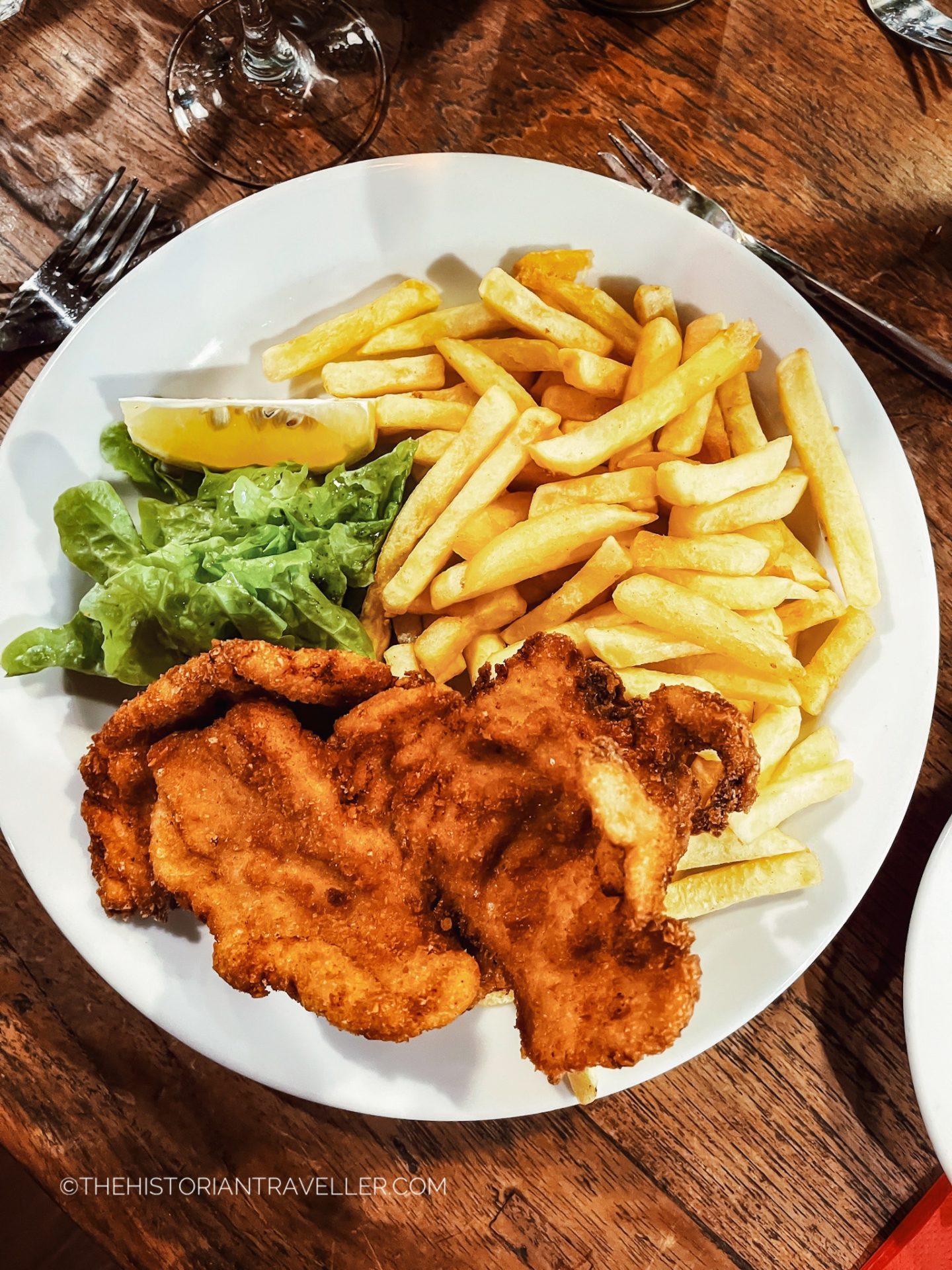
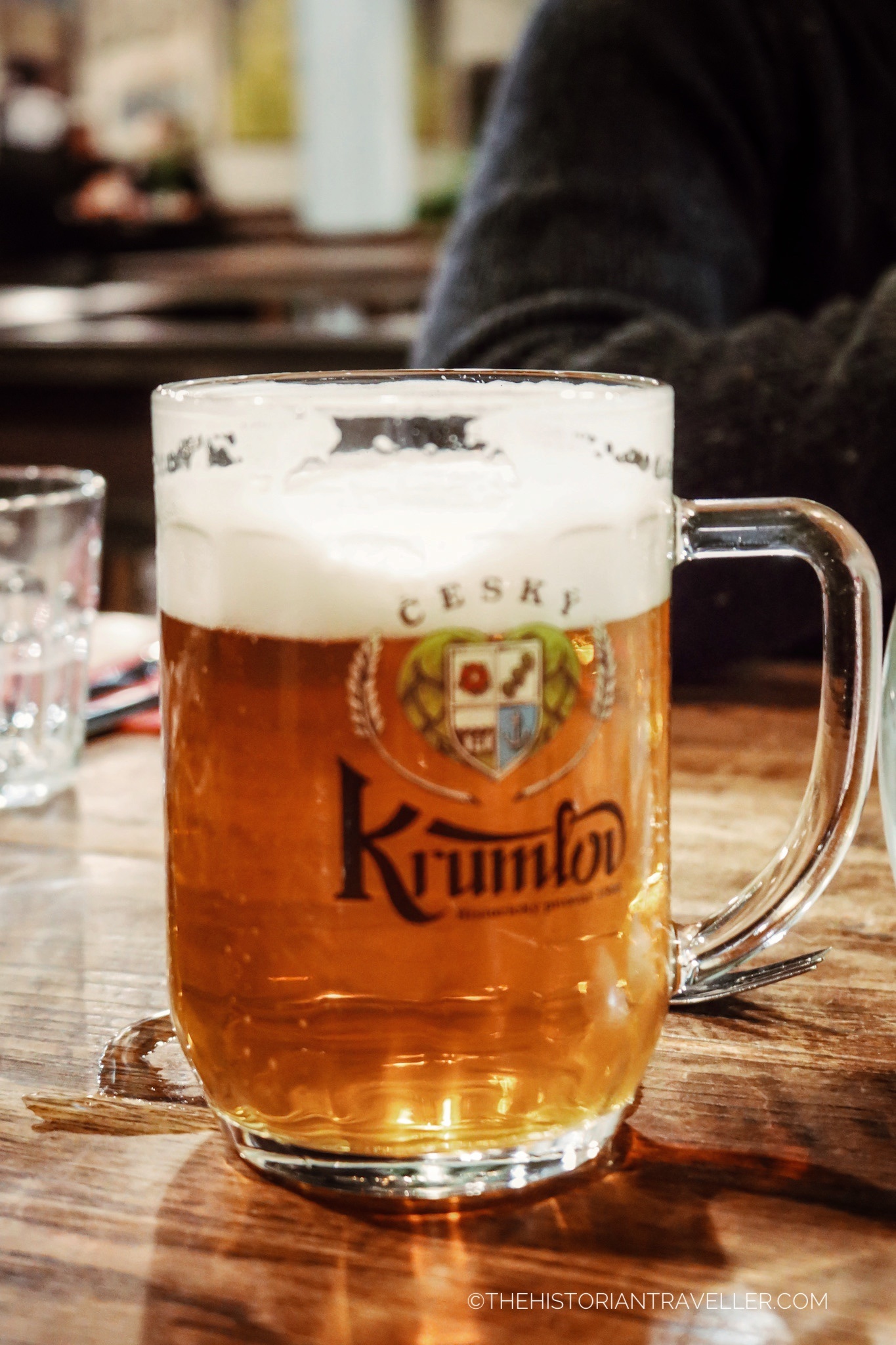
Český Krumlov is full of places where to try traditional Czech South Bohemian cuisine.
Among these, I’ve recommend you a dinner stop at Hostinec Depo. Here you can try their chicken řízek with a pint of delicious South Bohemian beer.
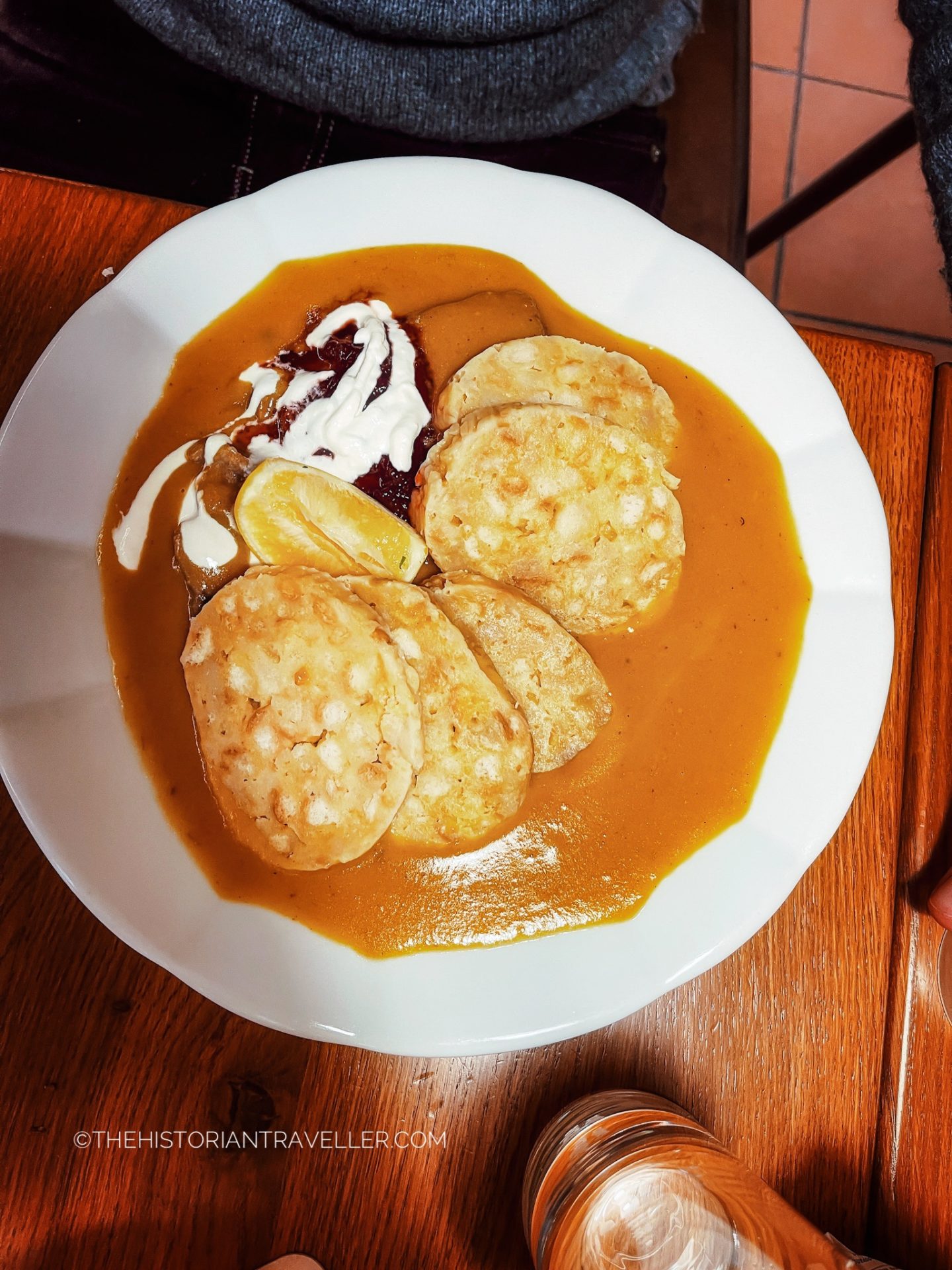
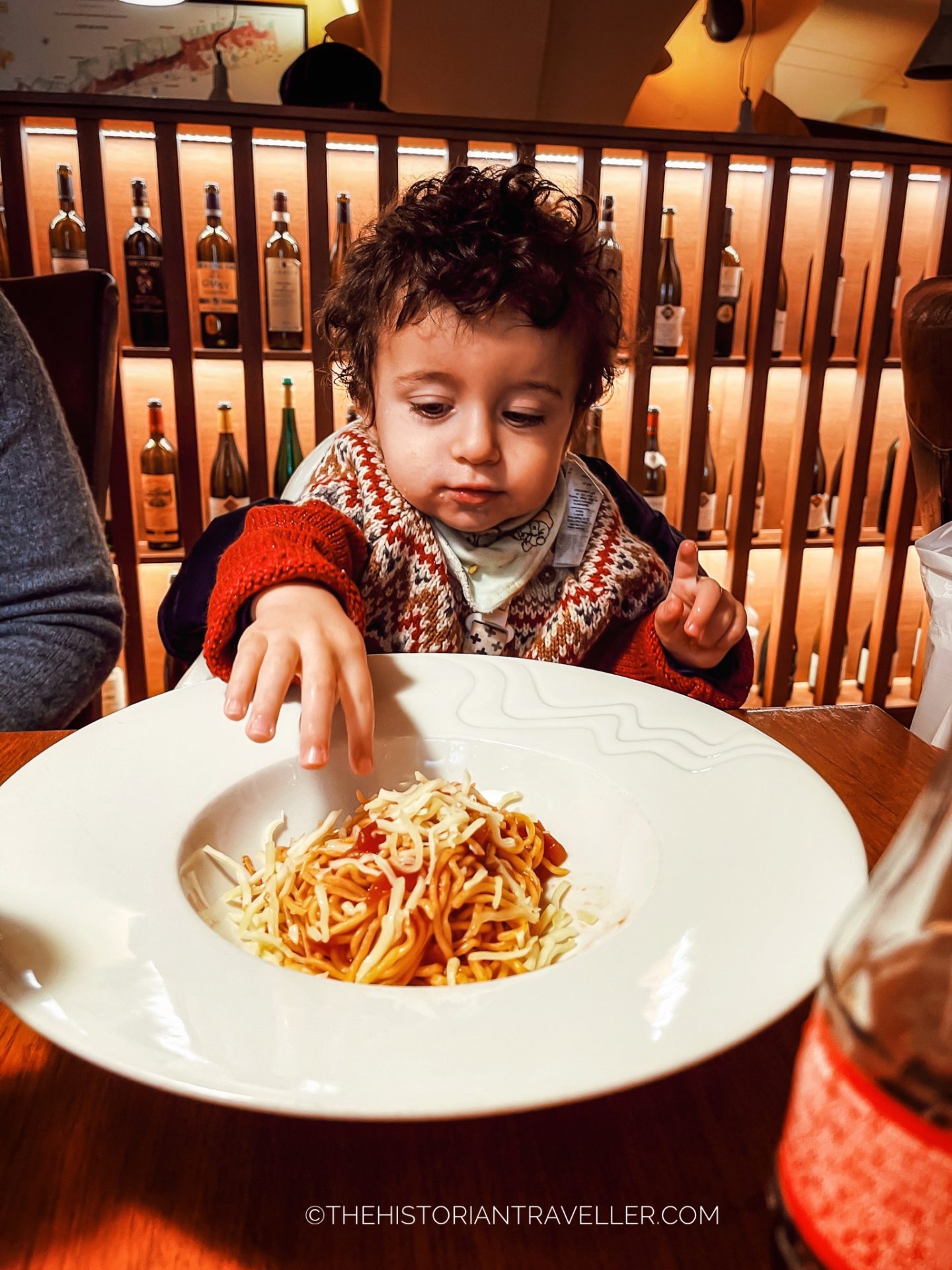
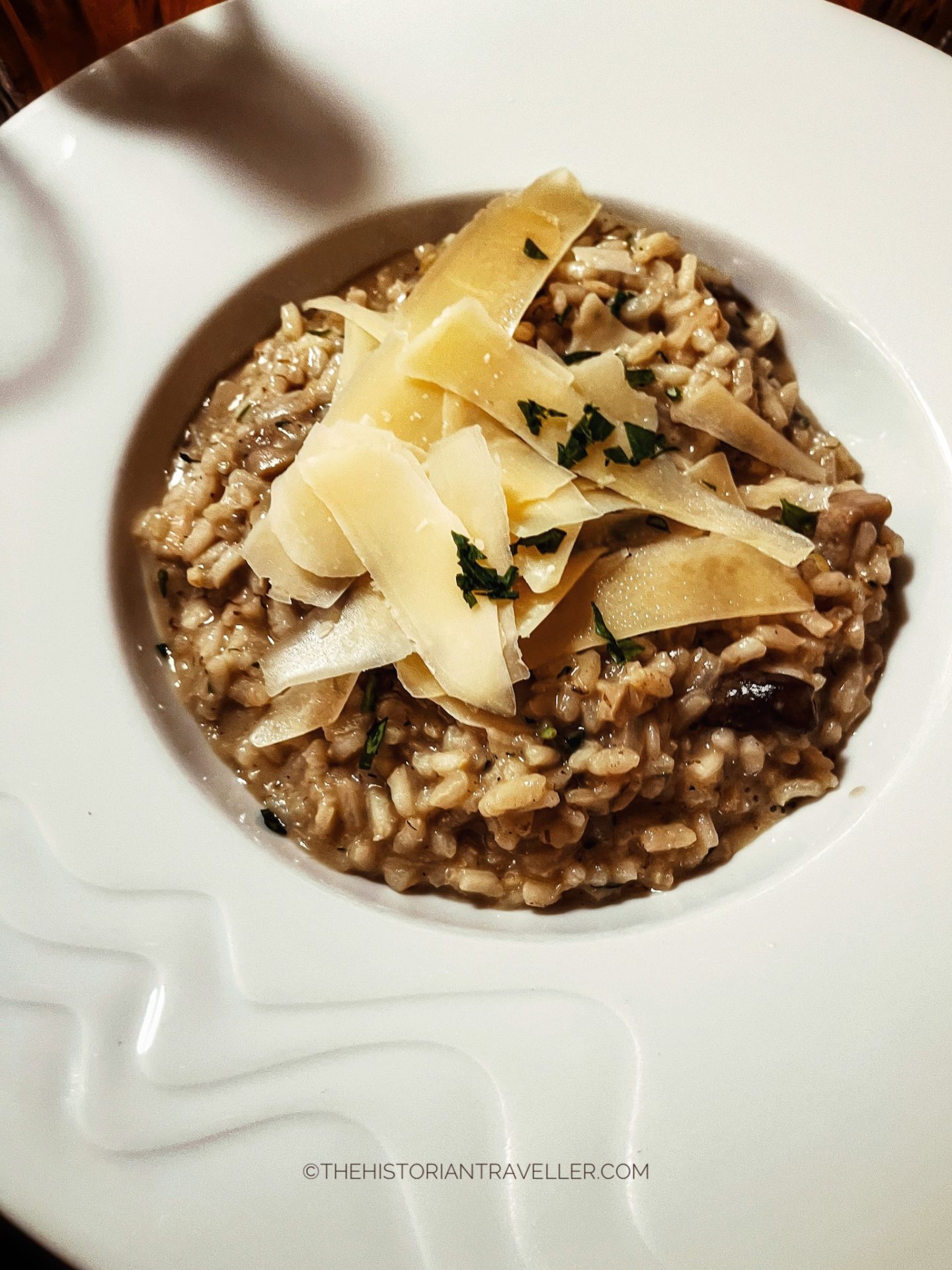
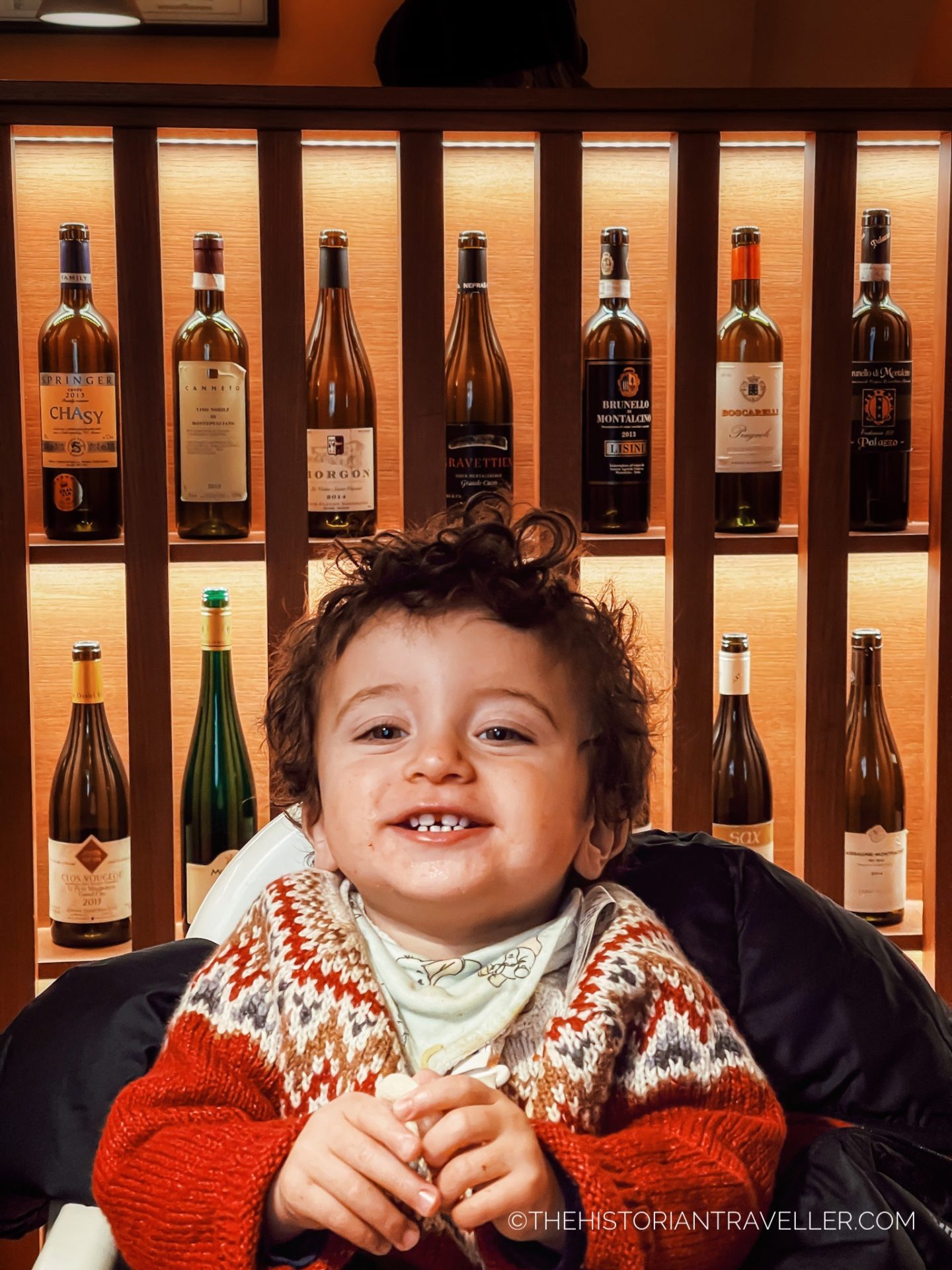
Another lovely place where we stopped for lunch is Papa’s Living Restaurant. Here you can try a hybrid Italo-Czech cuisine and find an excellent selection of wines. We appreciated the warm welcome from the restaurant and the care they had to prepare not only our food but also our babies’ one (they loved their spaghetti!). At Papa’s Living Restaurant we tried the Babiččina svíčková na smetaně that translated is literally ” Grandma’s sirloin in cream” and includes dumplings and cranberries sauce. In addition, we tried also a mushroom risotto made with South Bohemian mushrooms (it was the dish of the day out from the menu). Everything was delicious!
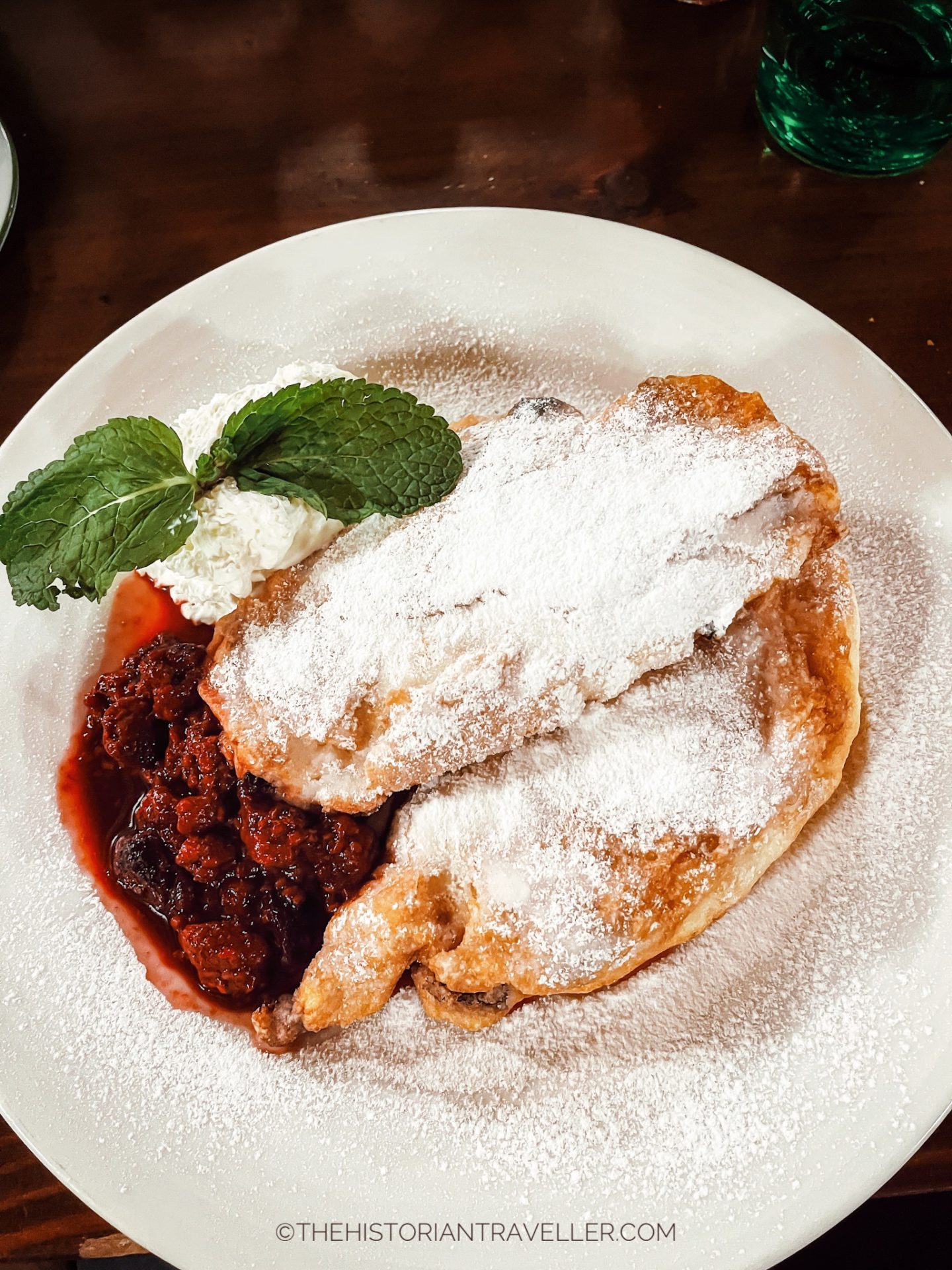
Lastly, if you want a full immersion into South Bohemian cuisine, the best place to go in Český Krumlov is Svejk. This restaurant is located inside a historical building (Latrán No. 12) that still preserves its Gothic architecture. Here you can taste some of the traditional South Bohemian dishes made with potatoes, meat and cabbage. If you are not too full, I warmly suggest you to try their delicious Kaiserschmarrn. A traditional old Austrian pancakes served with raspberry sauce and whipped cream and by which (secret) recipe has been handed down in Czech Republic.
Observe life passing by on a cosy Český Krumlov cafe
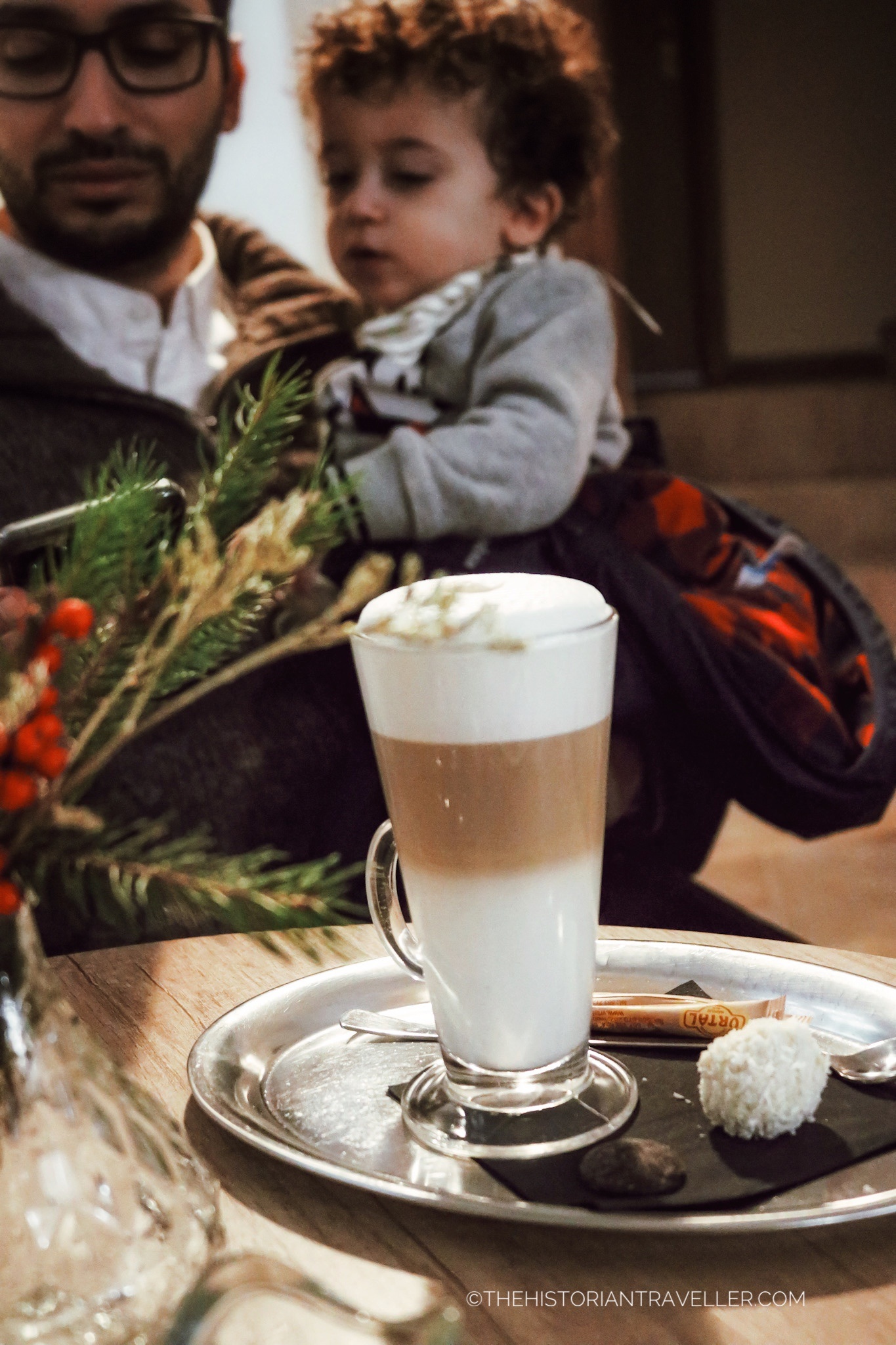
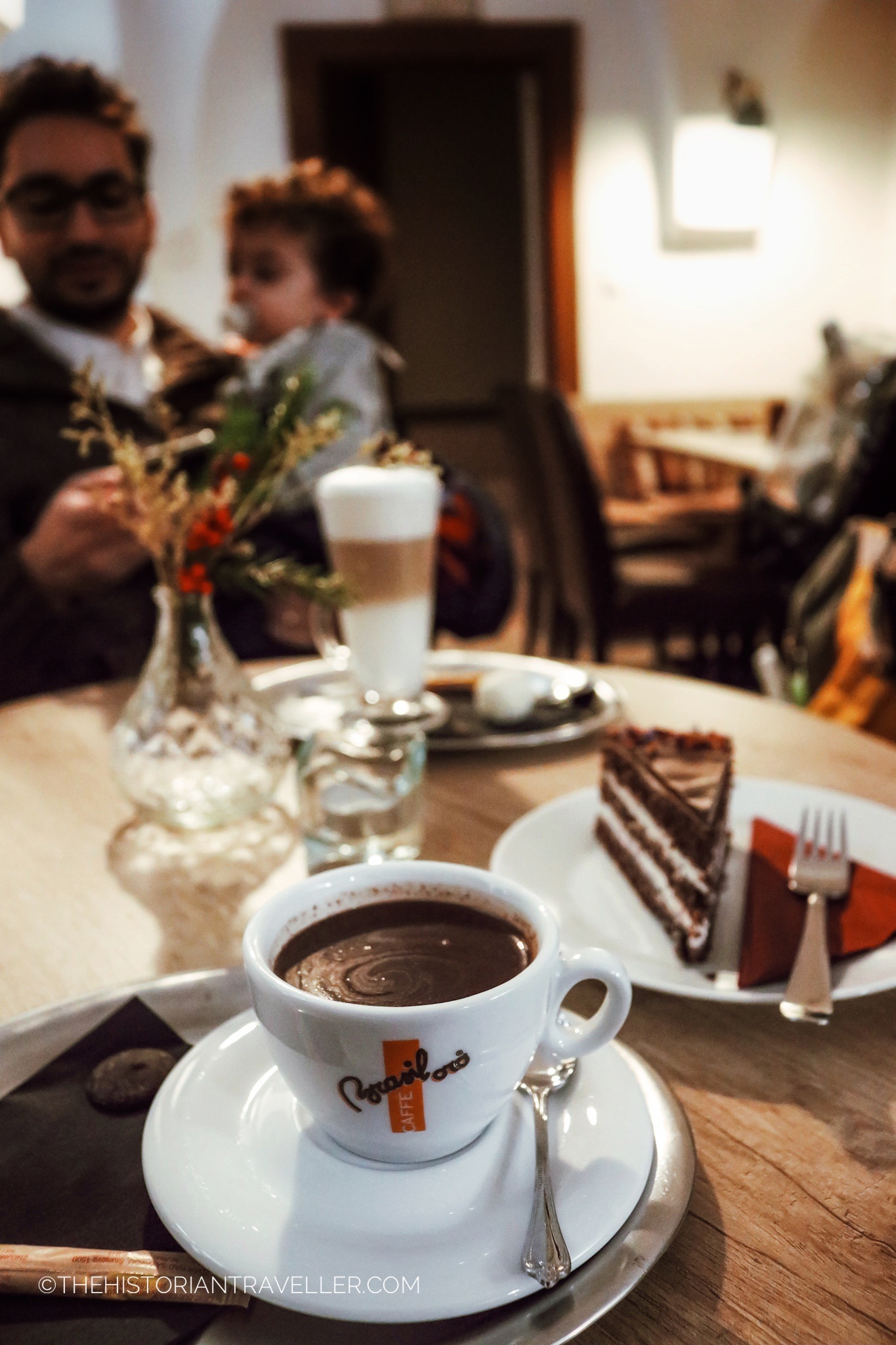
One of the things I love more about travelling in winter is spending some time in a cosy cafe in company of a warm coffee/hot chocolate and cake. Having some time to unplug and simply watch the life passing by is very relaxing, especially if outside is cold and it’s snowing! I wish I had more time to visit all the nice Český Krumlov cafes but I managed to stop only in two of them.
Omnes cafe Arleta is a very small place hidden in a little alley of the city centre. It’s very nice and cosy and the chocolate and cake we had were delicious. I loved also that they were selling local hand-made chocolate to take away and we bought a few Raffaello-style chocolate balls for our return trip.
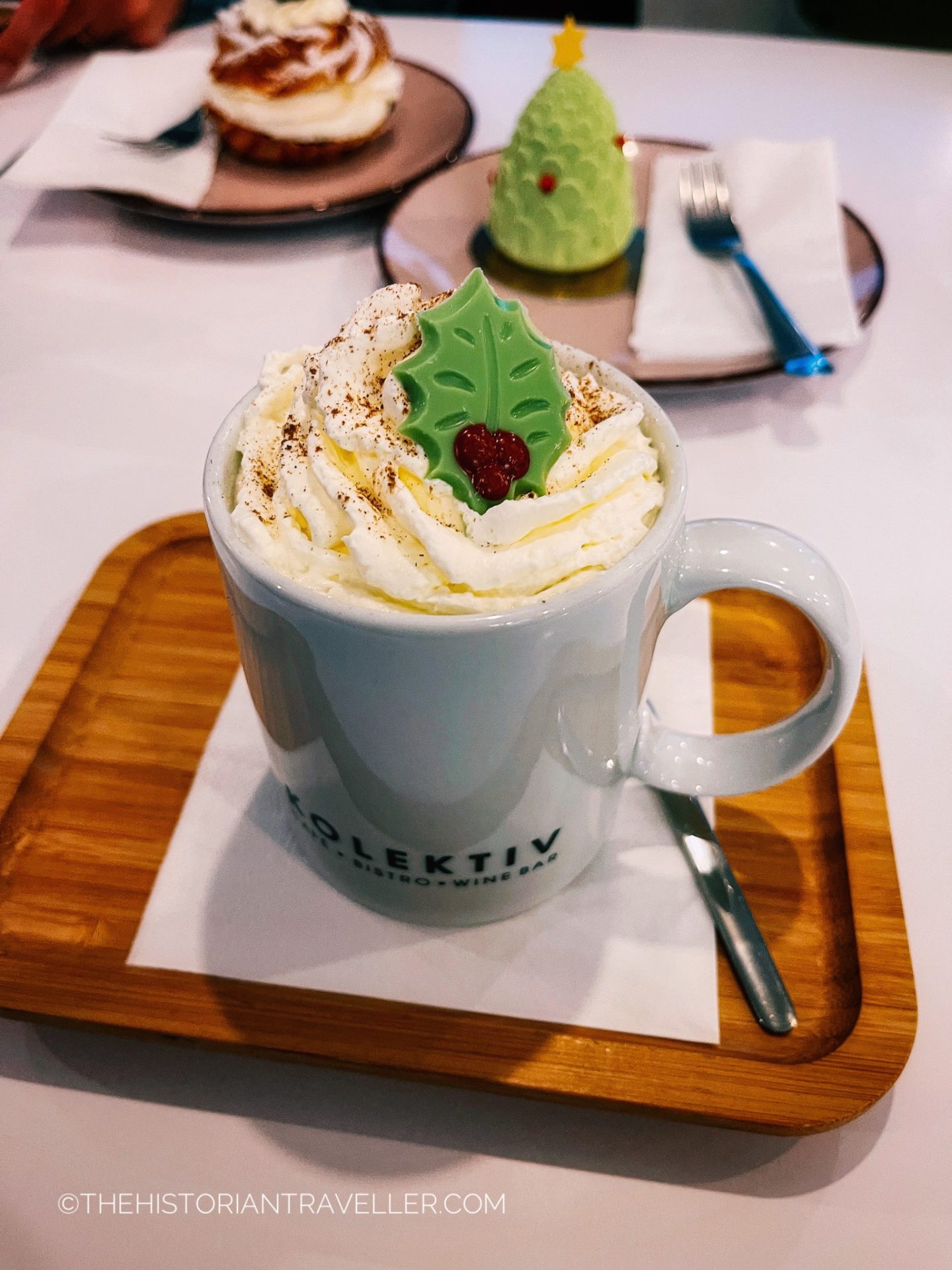
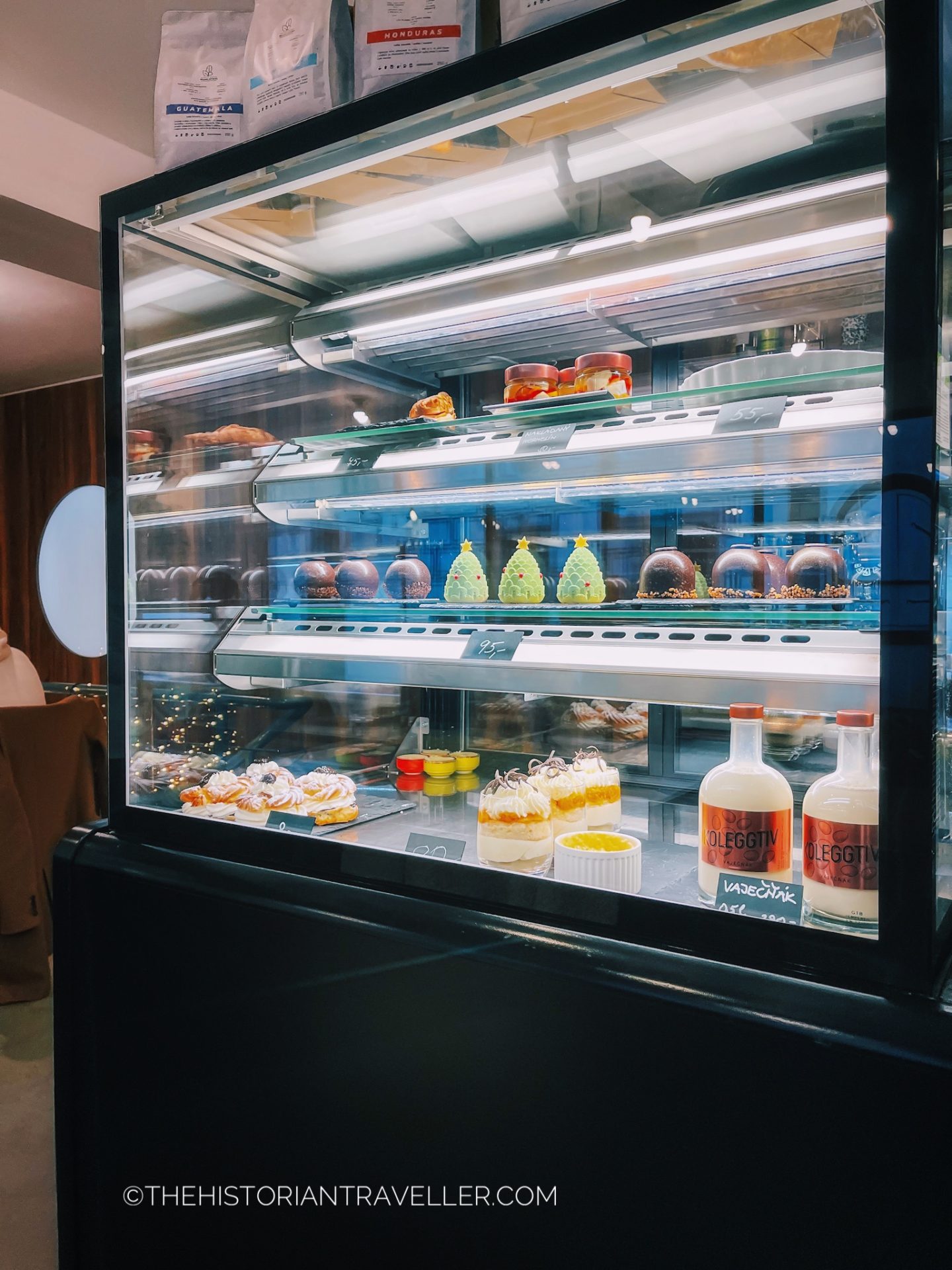

A very lovely cafe on the way to the castle is Kolektiv. Here we had a little late birthday party for me with a small Christmas tree cake and a Větrníky (a sort of choux pastry filled with cream). We loved the relaxed atmosphere and the desserts we tried.
Buy a Český perník for good luck
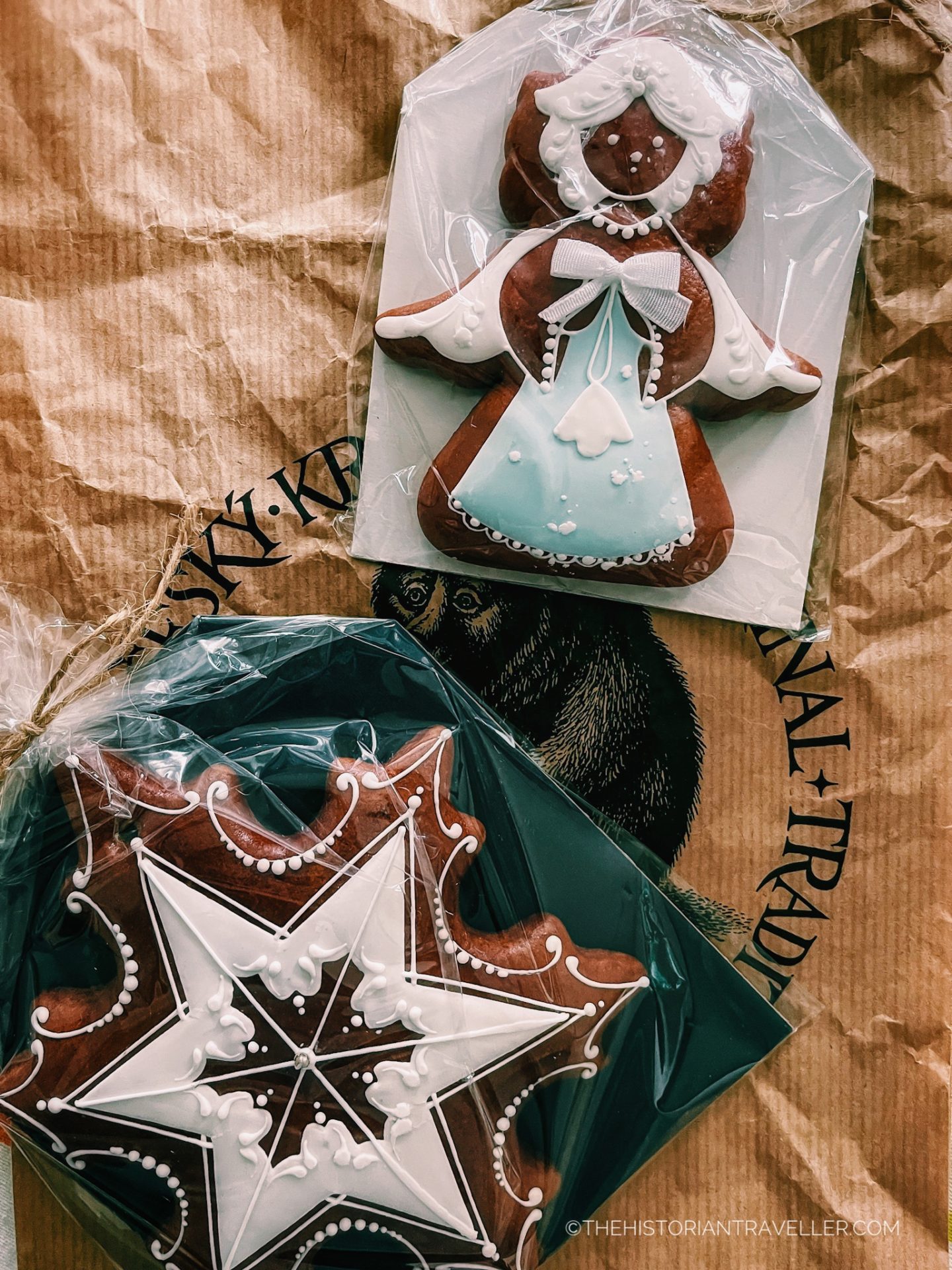
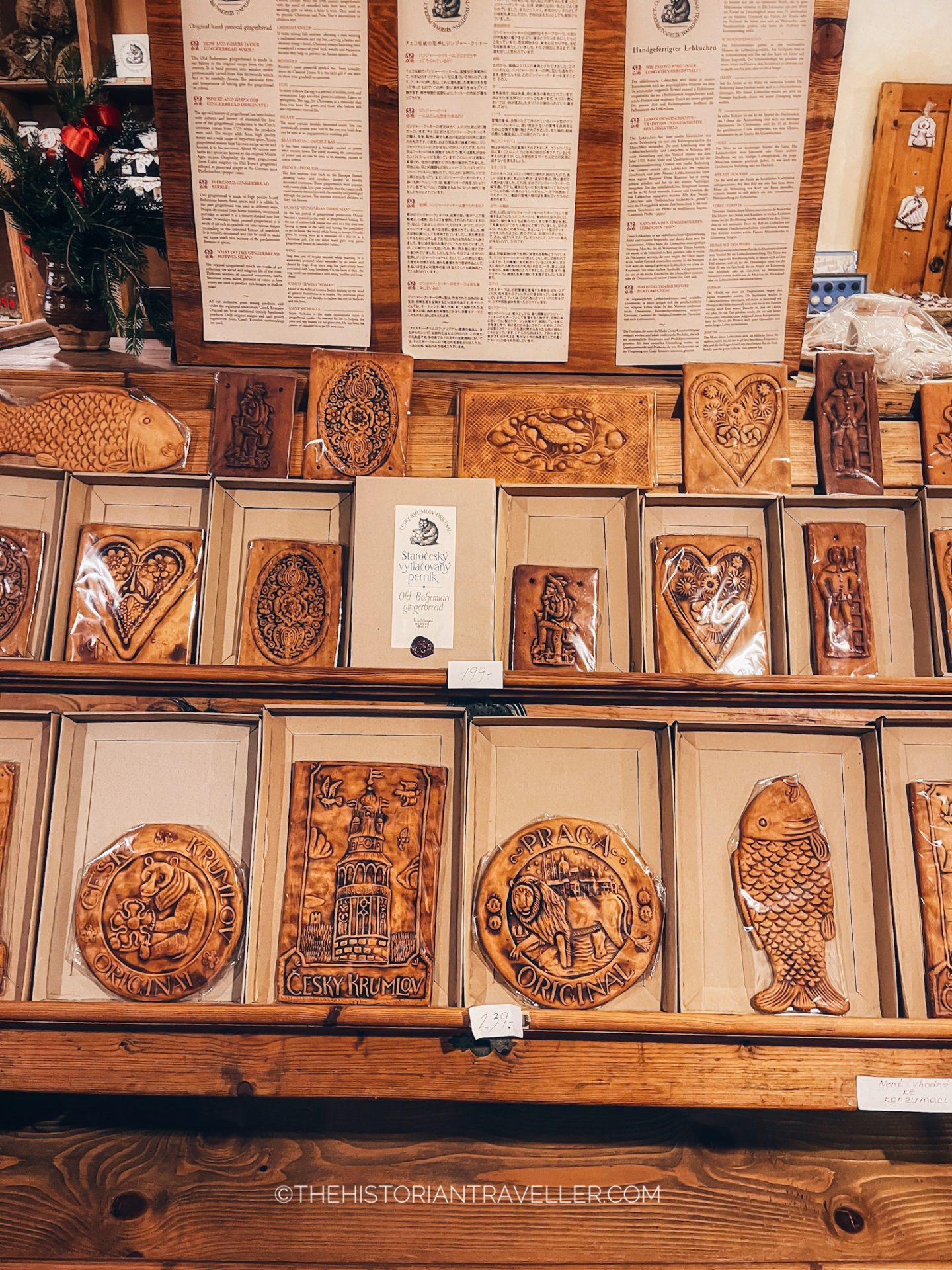
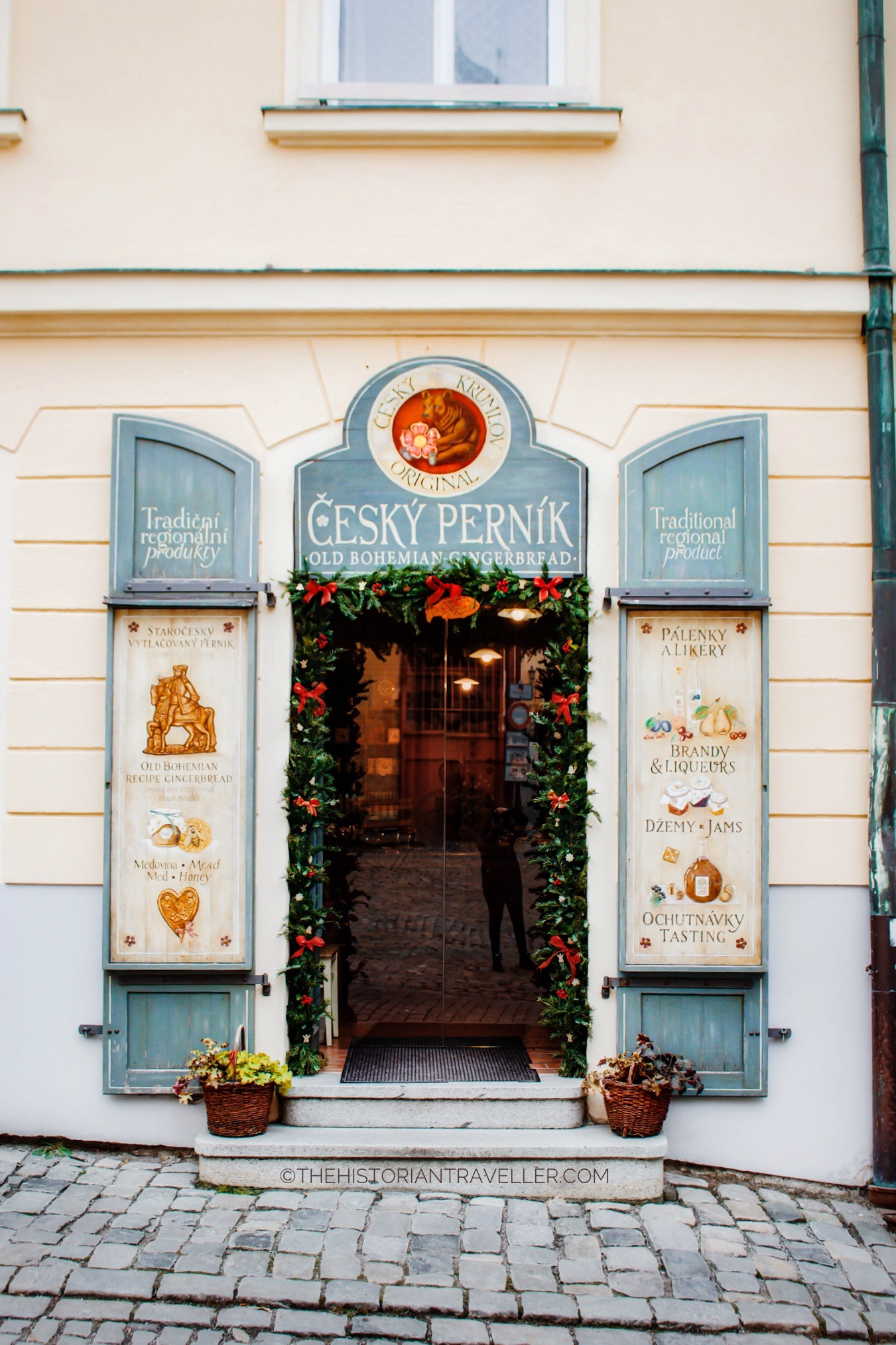
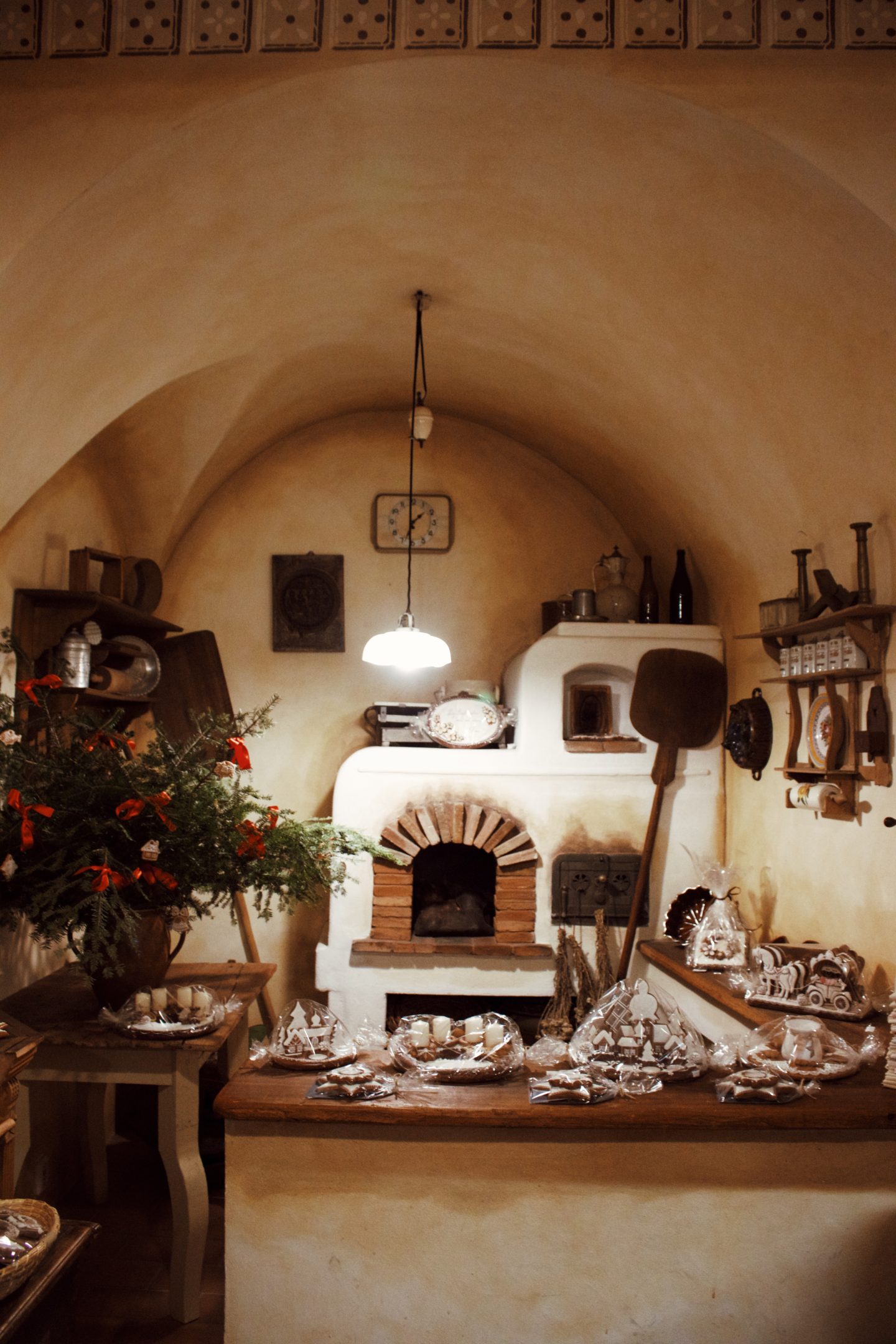
Gingerbread baking in Czech Republic dates back to the 14th century. Český Krumlov is one of the most important places that was historically involved in the production and regulation of gingerbread in the country. Here you can find a shop called Český Krumlov Originál that still bakes its gingerbread with the original 16th-century recipe. This includes hand-pressing the gingerbread into wooden moulds that are professionally carved from fine fruit-woods. Then, the gingerbread is cooked in specific ovens according to a set time and temperature that gives every biscuits its brown famous colour. One of the nicest Czech traditions you can take part is buying a chimney sweep gingerbread as a wish for good luck for those receiving it.
Getting to Český Krumlov from Prague
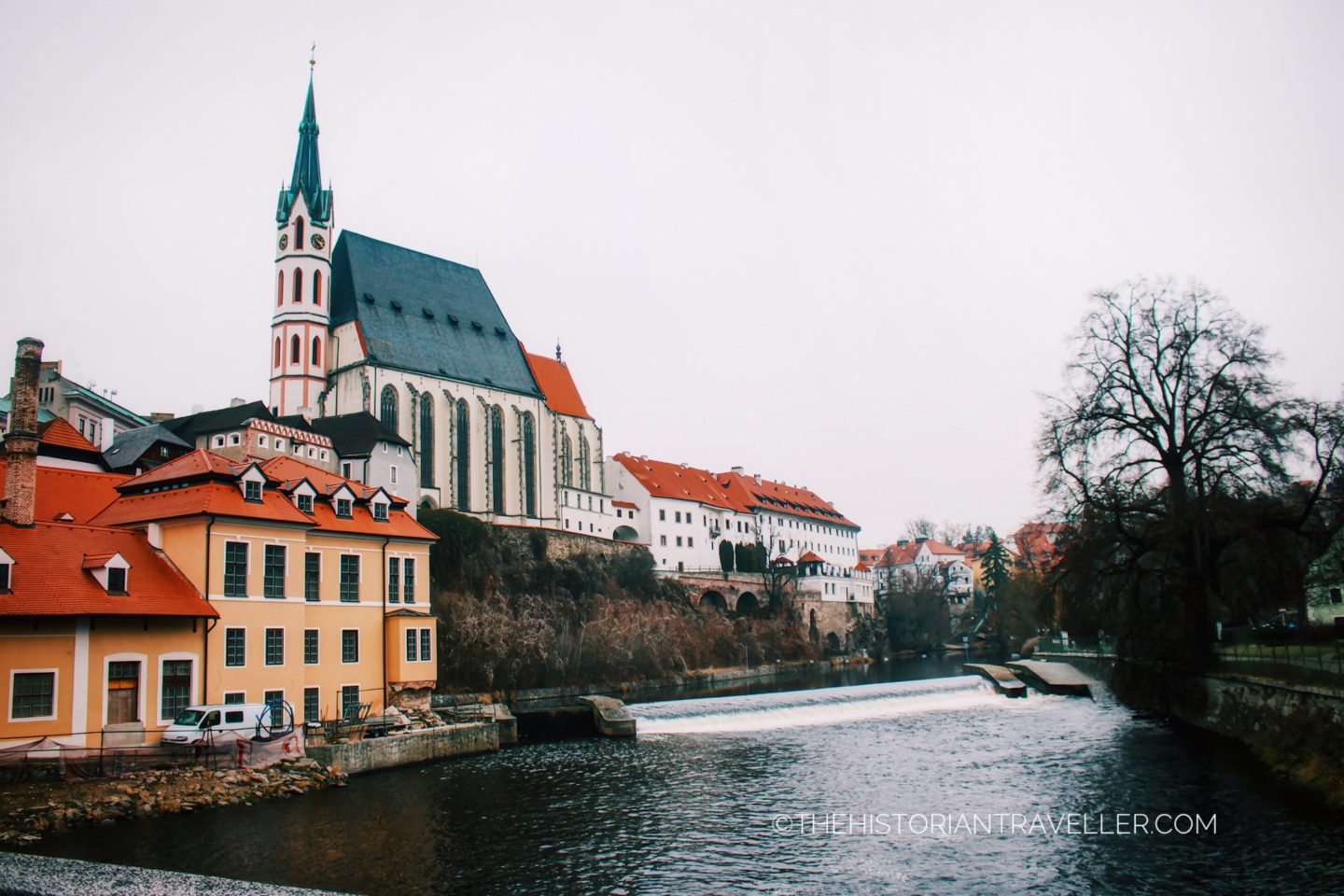
Traveling to Český Krumlov from Prague is very simple as the town is just at 142 km from the capital. If you are travelling by car, this is just a short drive of 2 hours (ish) via the D3 and Route 3.
Getting to Český Krumlov by train from Prague
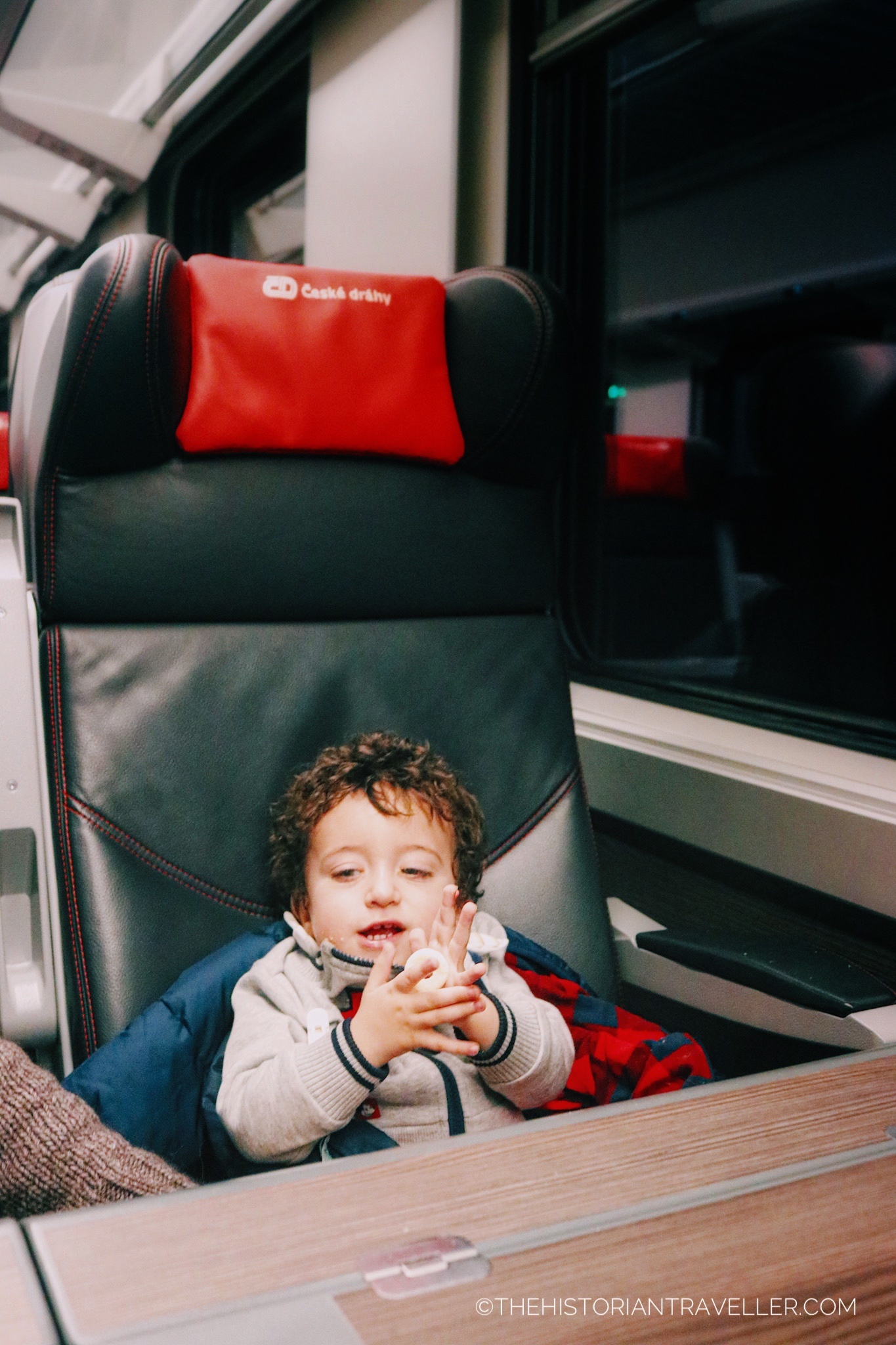
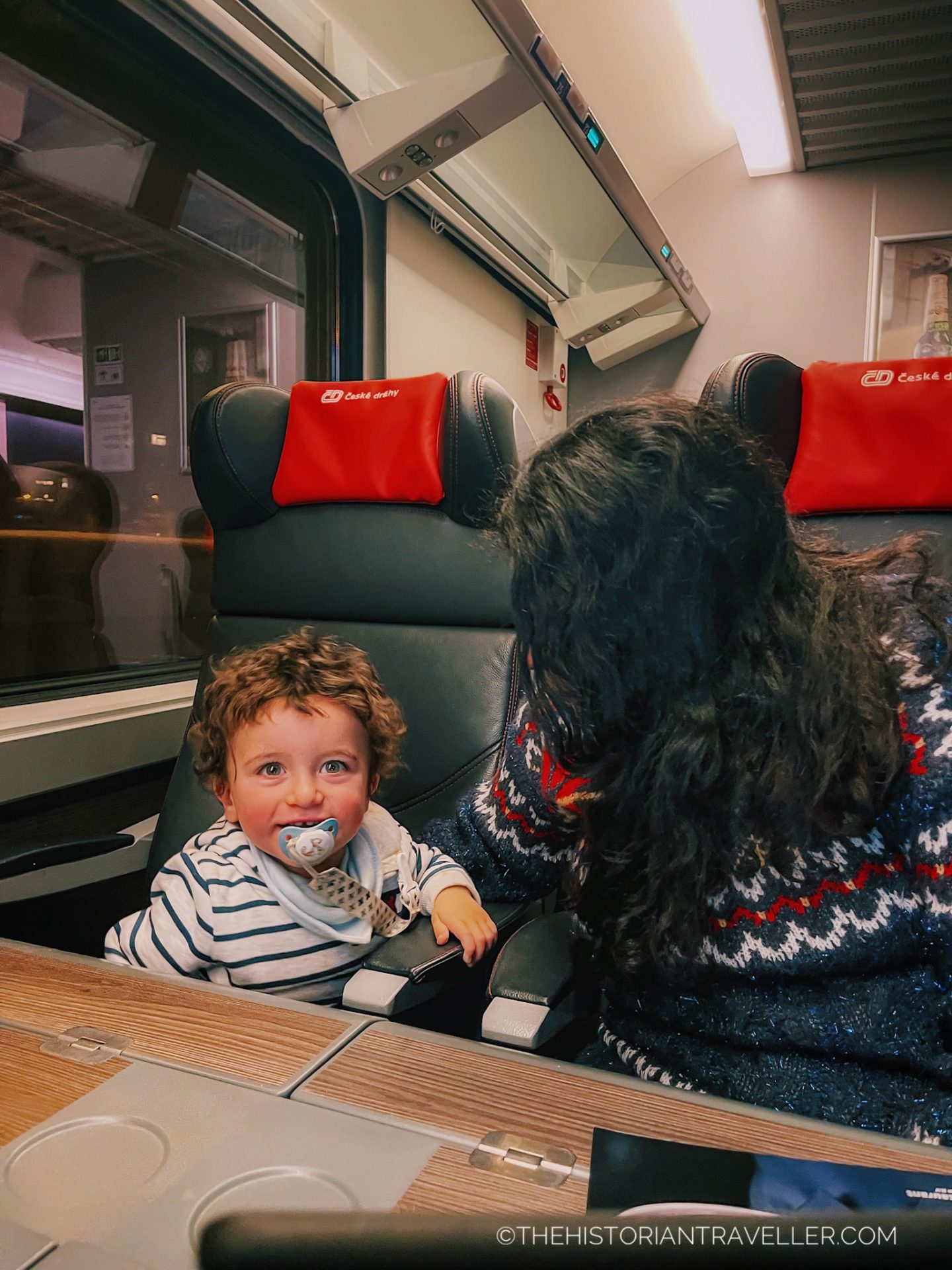
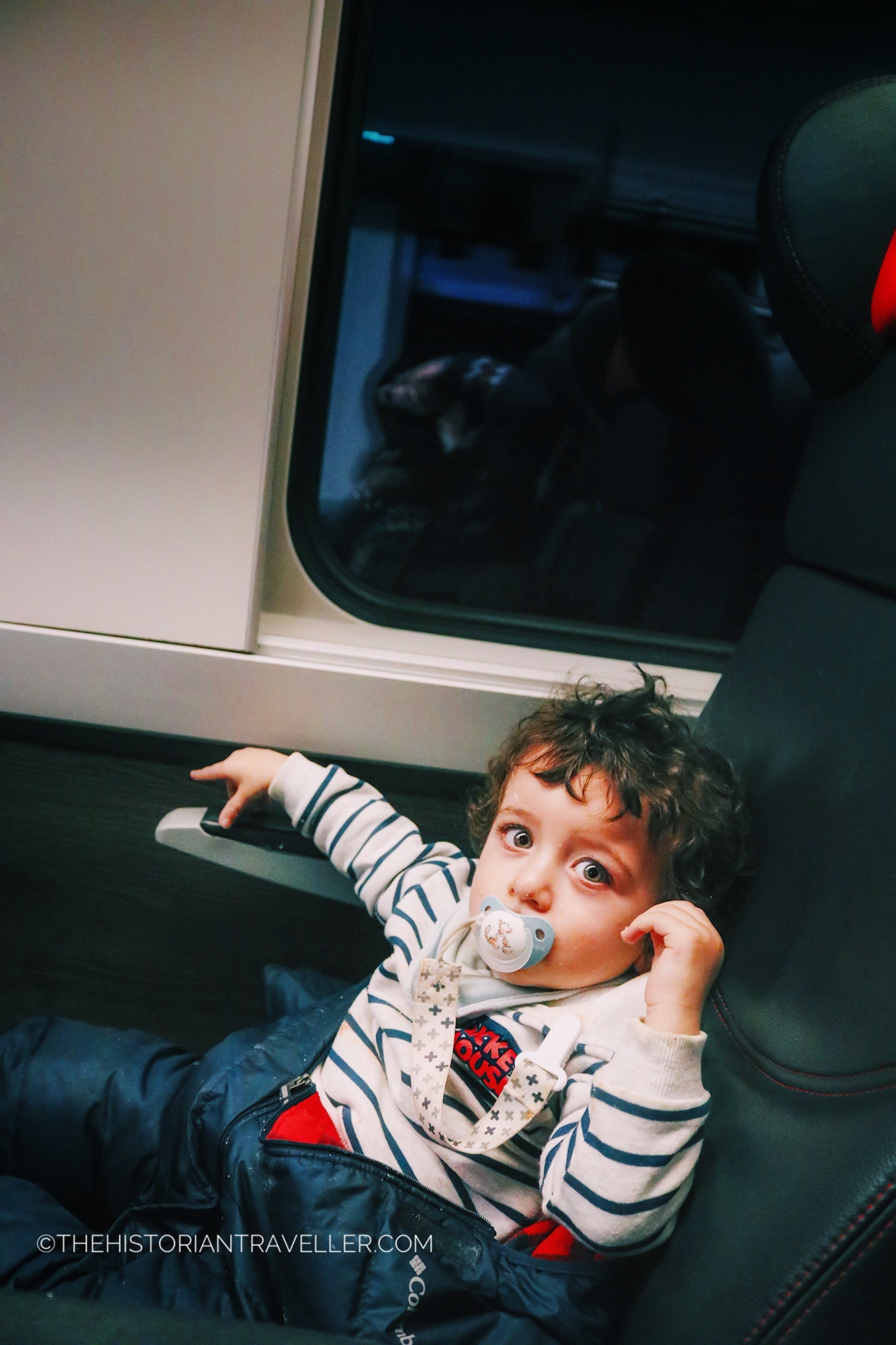
Because of the relatively short trip, this time we decided to not rent a car and travel by train. We loved it! Travelling by train is quite fast and relaxing. Moreover, you don’t have the annoying stress of finding a car park inside a historical town. Trains in Czech Republic are efficient and clean. However, not all the stations have English boards or translated indications. Therefore, is better to have your Google Translate on hand.
Getting to Český Krumlov by train from Prague is quite straightforward as there are only two type of trains stopping there. The first train is the IC 533 Southern Express. This travels from Prague hl.n directly to Český Krumlov without any stop. The length of the trip is less than 3 hours and you have also the possibility of travelling on the first class. The only downside is the timing. In fact, there is only one express train per day and it departs at 9.00 in the morning (same thing for the return). Therefore, if you have busy mornings (like us with the twins) it’s likely you won’t get in time.
If you need more flexibility with your timing, you can opt for a different type of train. The second type of train is not direct but has a stop. This might be an Intercity or Eurocity stopping at České Budějovice. From there, you have to take a little train (that actually looks like a bus on the rail) called Os 8107 České Budějovice – Nové Údolí. This will have a stop to Český Krumlov. Also in this case the total lenght of the trip is less than 3 hours but you will spend around 2 hours on the Intercity and about 40 mins on the little train.
How much is the train from Prague to Cesky Krumlov?
Trains in Czech Republic are fairly cheap compared to trains in the UK, even when you travel on the first class couch. Because we were travelling with the kids (and the strollers… and the luggage…and the backpacks) we needed a bit of more space so we booked a round trip into the first class carriage. Tickets costed us around £62 for an a/r ticket for two (babies don’t pay…yet). This included a £10 seat reservation that we added to both a/r tickets just in case.
If you are travelling in the second class, you can travel as cheap as £13 for an a/r ticket.
How do I book a train ticket in Czech Republic?
To book your train tickets, you can use two different methods. Going in person at the train station or booking online in advance (recommended). To book online you have to search for your trip on the České dráhy (Czech railways) website. The website is also in English so it’s pretty simple.
Getting around Český Krumlov
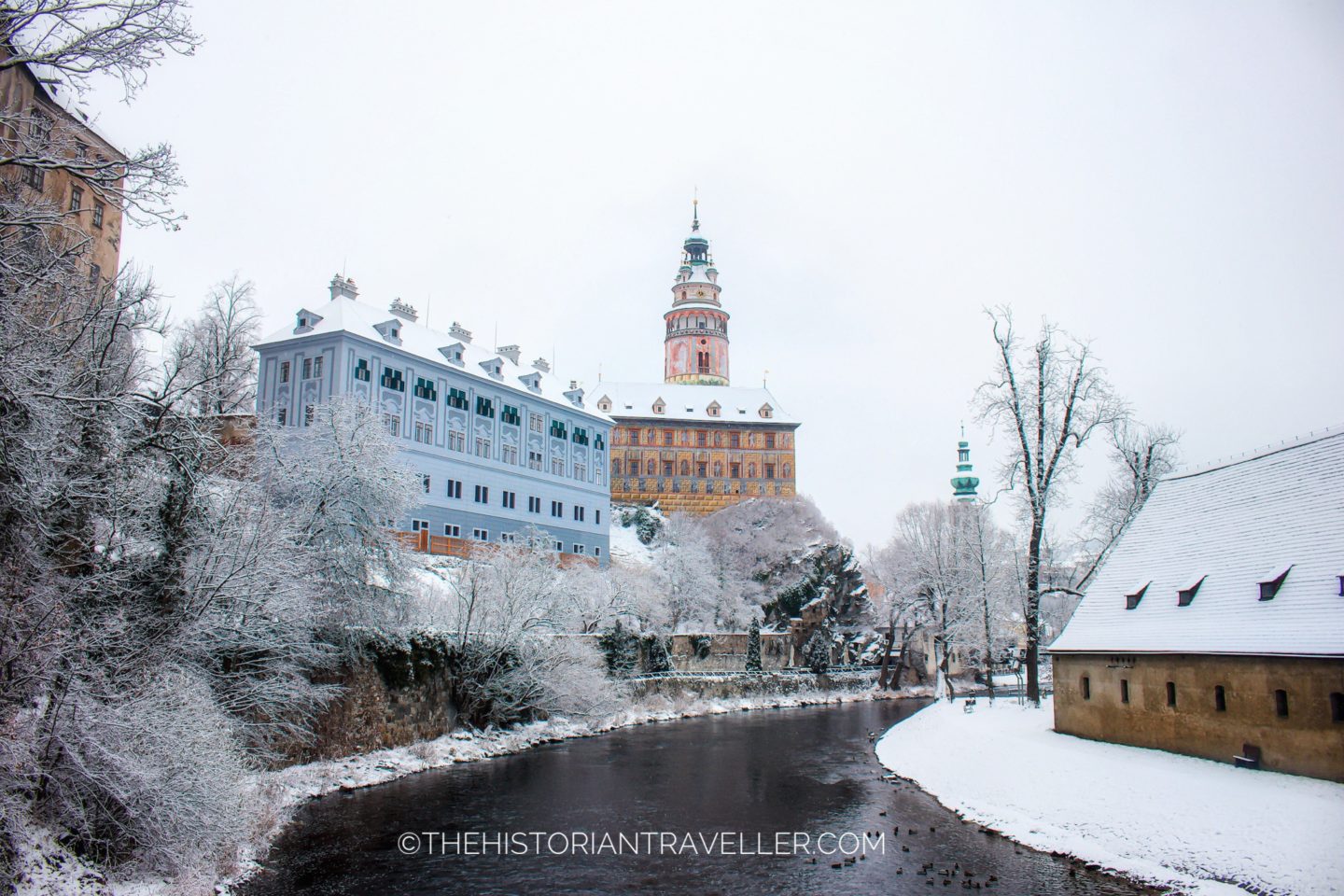
Getting to the town centre from the train station
When you arrive at the train station in Český Krumlov you may feel a little lost. In fact, we’ve been told that pre-pandemic there were lot of taxis and buses connecting the town to the train station (that is 20 minutes far on a steep hill). However, now is like… a desert. We’ve arrived and there was literally no one outside. Uber non-existent. Bolt non-existent. People that can help you, nada. If we were alone we would probably walk till the town but with the little ones and the luggage it was pretty difficult.
Alessio went to a kind of info-point inside the station and they gave him a number to call. “Green taxi”. Apparently, this is the only company working in town. So we called and the lady told us that in 10 minutes a taxi was coming to pick us. Great! However, we arrived at 3 pm, called at 3.10 and at 3.45 no one was in sight. Babies started getting cold and nervous so I called the hotel and asked help. The receptionist called another green taxi.
After another 20 minutes our taxi finally arrived and saved us from hypothermia. We reached the hotel at 16.45. Moral of the story, if you are travelling during the pandemic or off season, ask your hotel/b&b to pick you up before you arrive.
Sightseeing in Český Krumlov – Using the Český Krumlov card
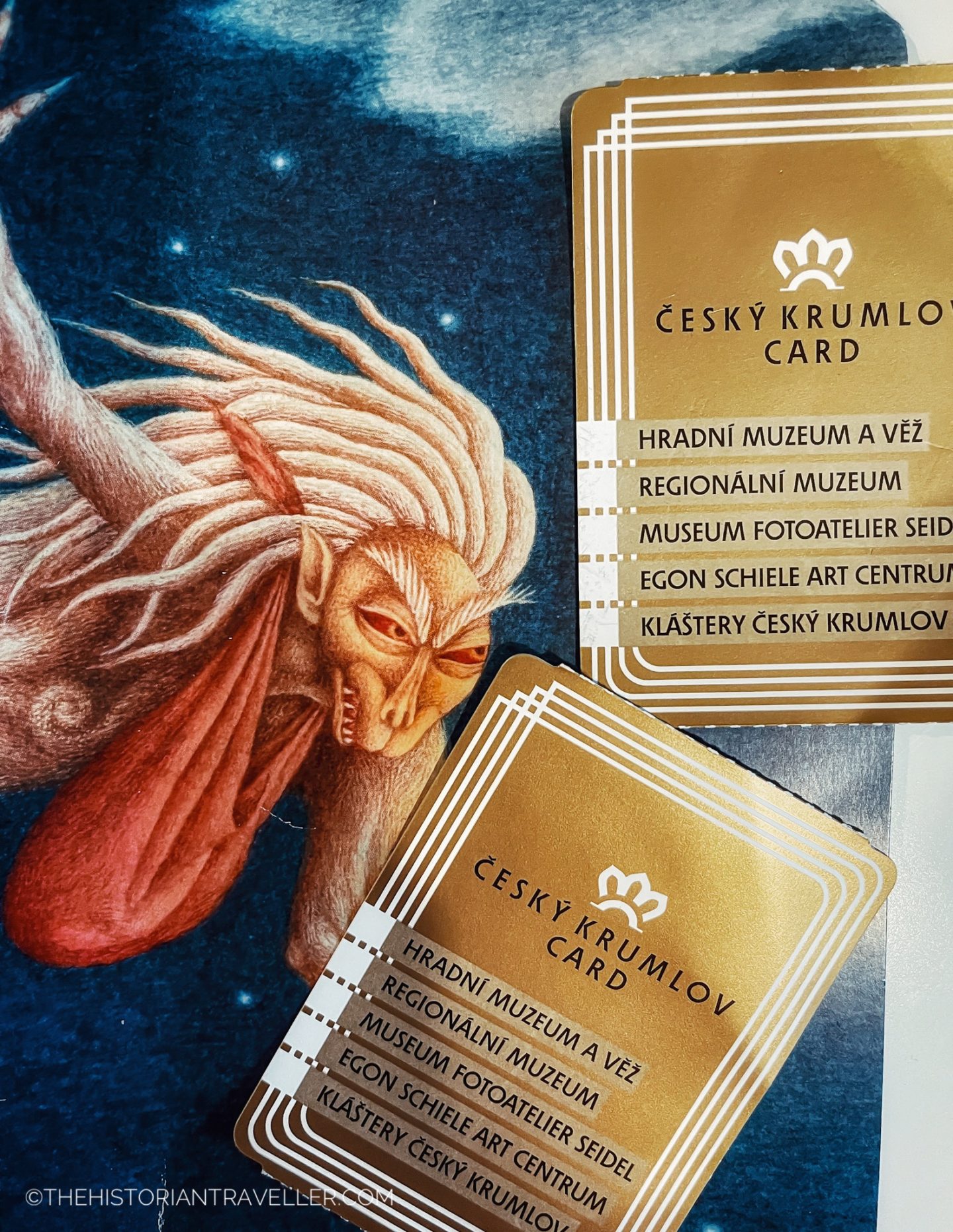
Getting around Český Krumlov is very easy. In fact, the town is small enough to be explored on foot. However, if you want to save the hassle of buying online tickets and beat the queue (during high season), the Český Krumlov Card is the perfect way of sightseeing the city. This gives you the access to 5 different main museums/attractions of Český Krumlov and you can use it in 12 months – time after your first use.
With this card you can access the already mentioned Castle Museum and Tower, the Monasteries and the Seidel Fotoatelier. Moreover, you can enter also in the Regional Museum and the Egon Schiele Art Centrum.
The card costs 400 CZK
Plan your trip to Czech Republic
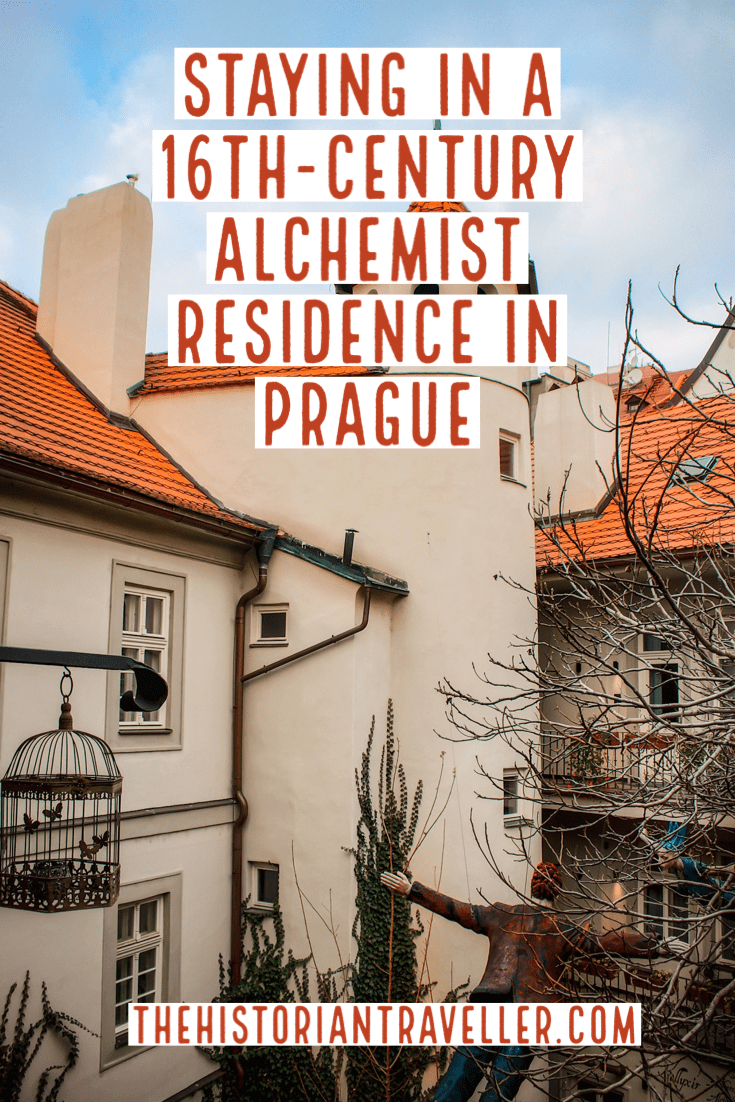
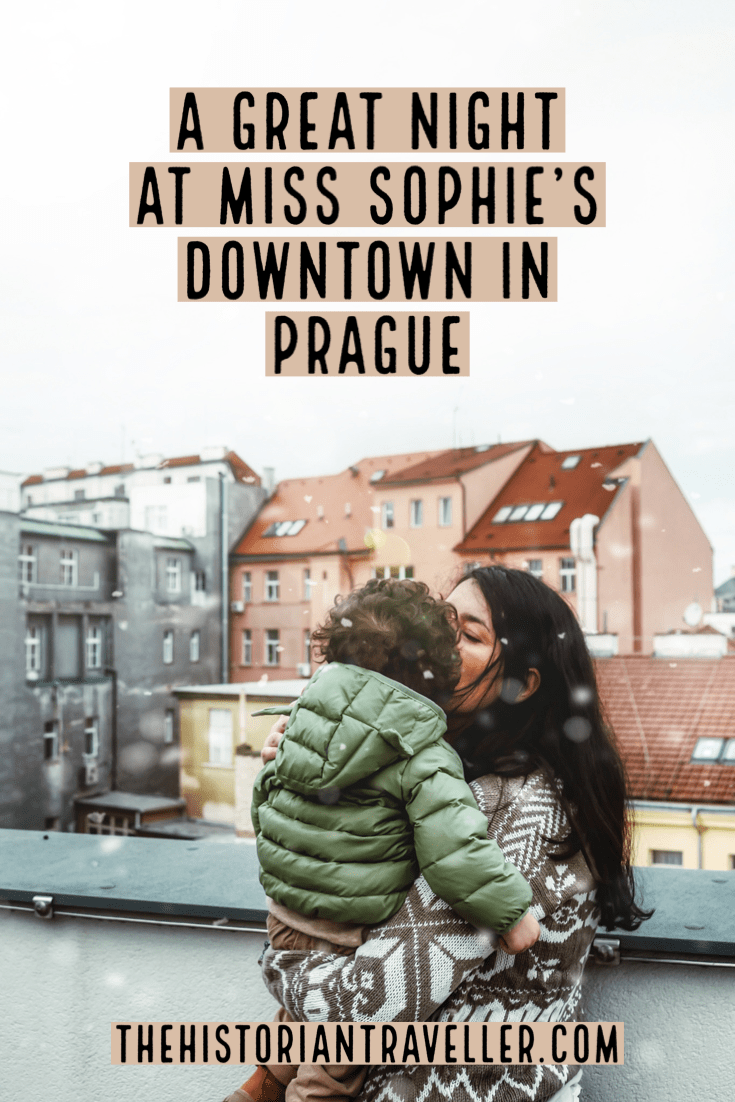
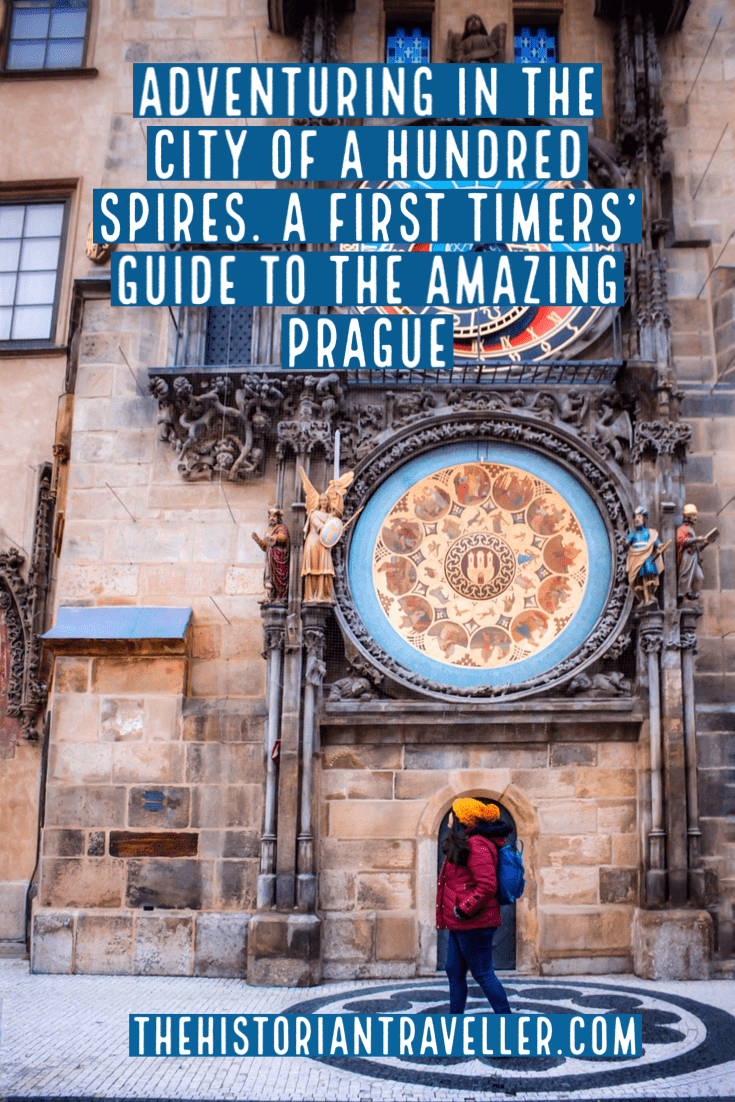
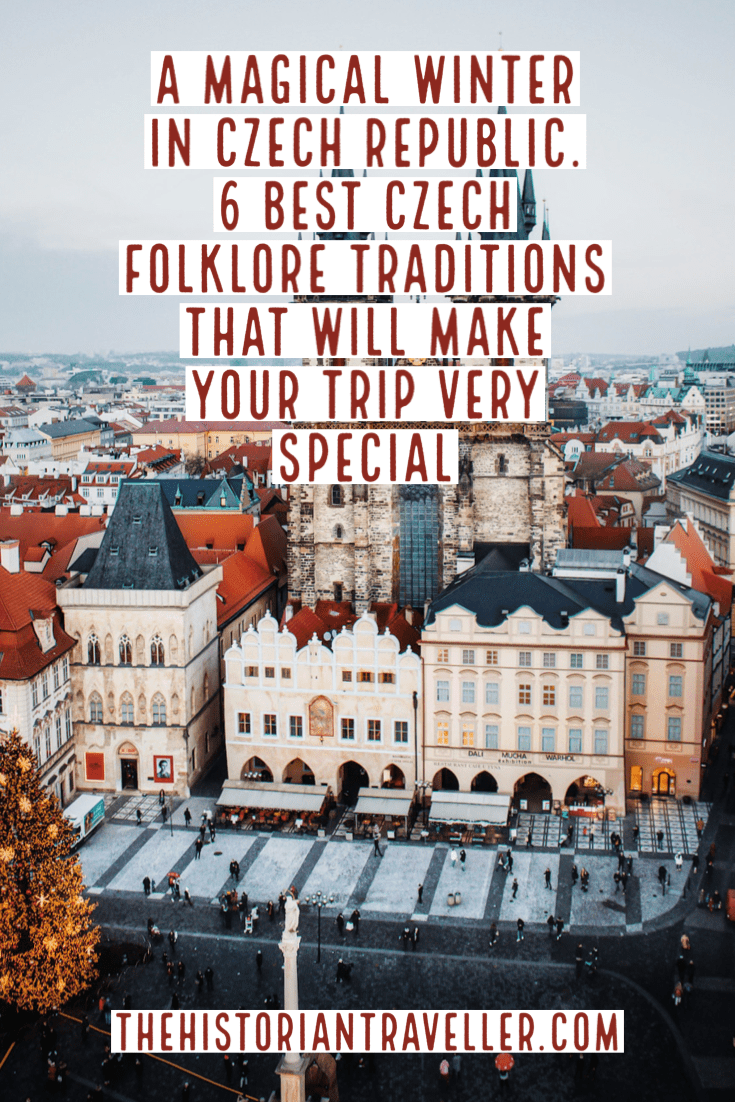
Trip hosted by Czech Tourism and South Bohemia Tourism
Loved this blog? Pin it for later
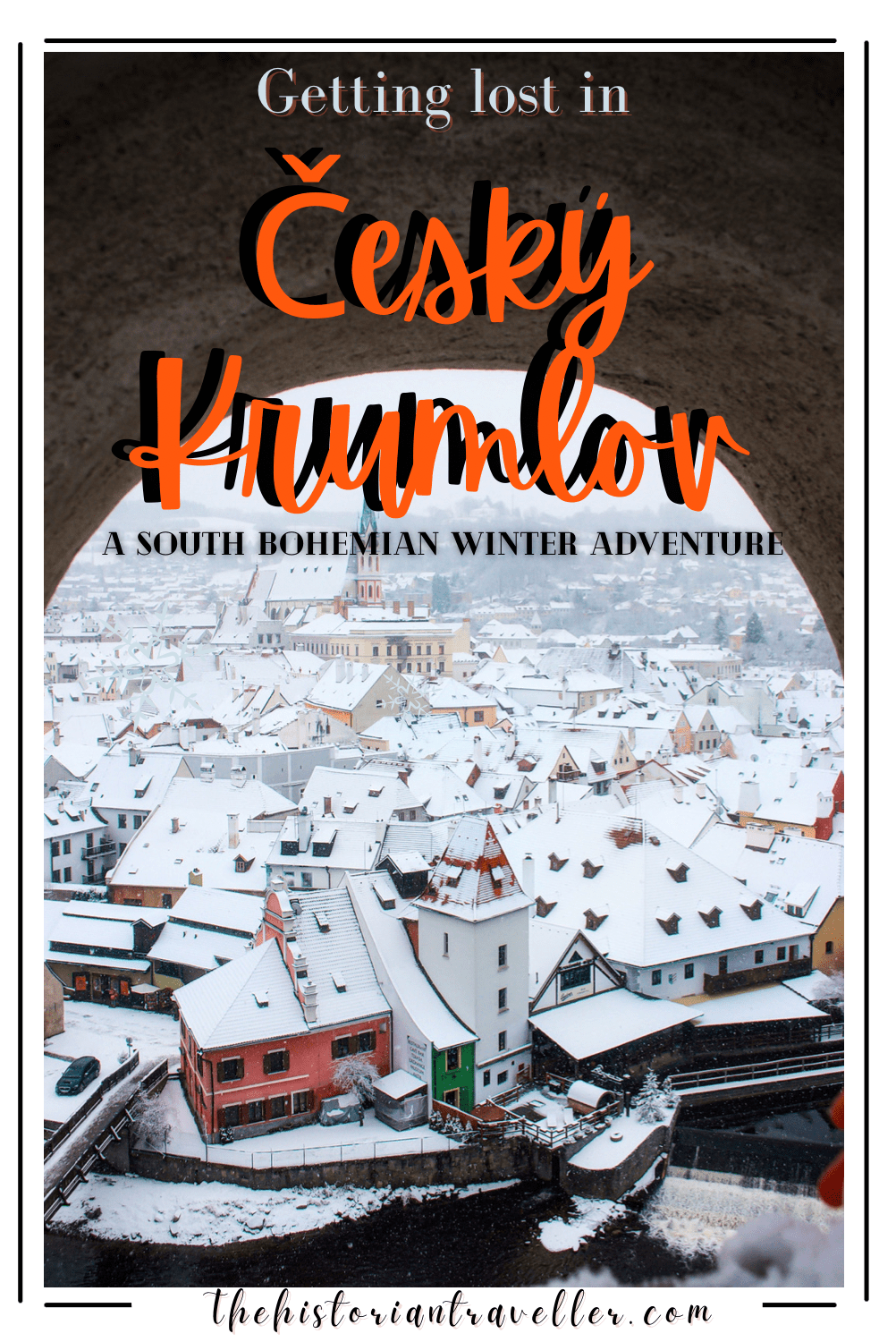

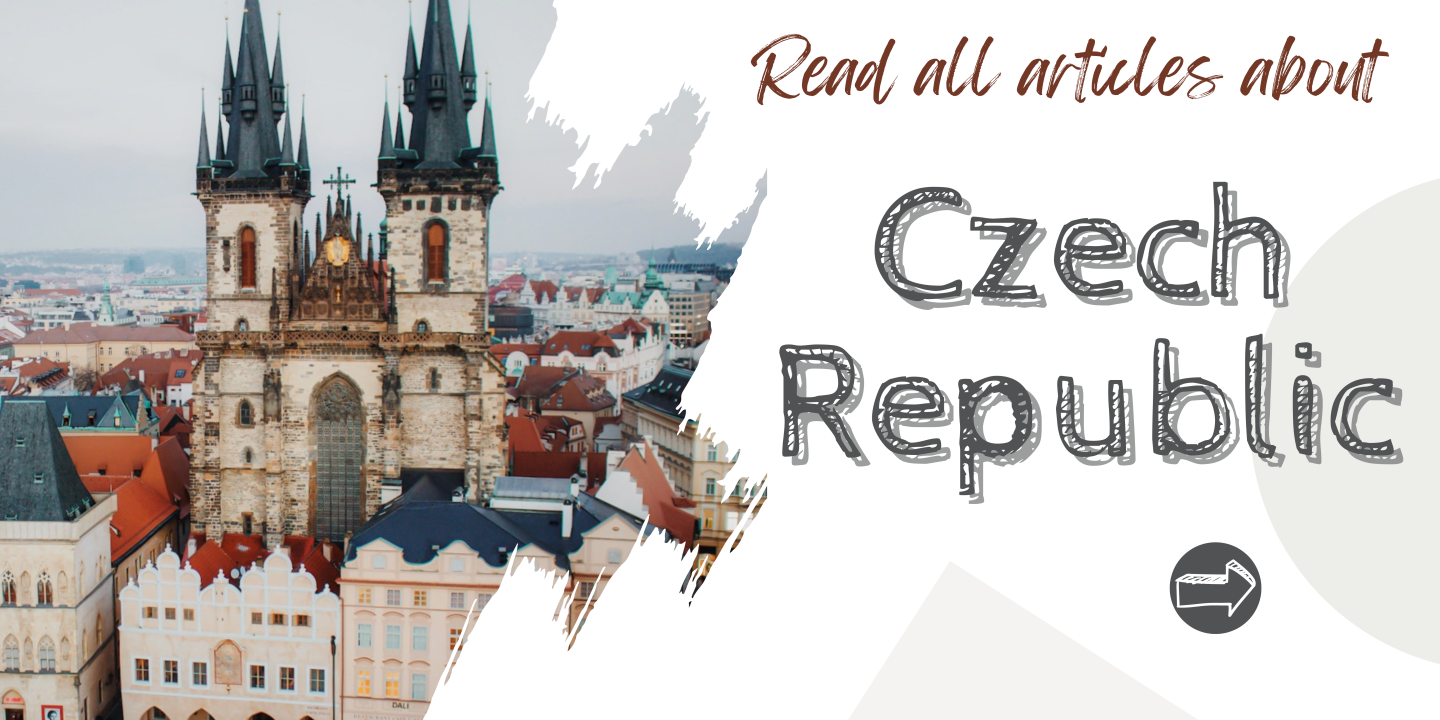
Wow – I’ve never heard of Cesky Krumlov before this, and your photos look like an absolute winter dream!! I’m definitely adding this one to my list! Thank you for sharing 🙂
Author
Thanks for reading it Jill! I hope you can visit it one day! Cesky Krumlov is a beautiful gem of Czech Republic!
We loved our visit to Cesky Krumlov in the summer. But always wondered what it would be like in the winter. It sure does look like a winter wonderland! It would be great to spend more time inside the museums. And I would not pass on enjoying more of the tasty South Bohemian cuisine. Or getting cosy in one of the great cafes. Definitely a time to plan a return visit.
Author
I was very happy to have visited in winter! The snow made everything looking magical! I hope to visit in summer one day to do some different activities and visit the baroque theatre!
Wow, it looks beautiful here, and so many incredible museums. I’d love to go to the photography one and go back in time! Thanks so much for a great guide.
Author
Thanks for reading it! I can’t choose between all the nice museum as they are all worth to visit! However, we had lot of fun at the Fotoatelier!